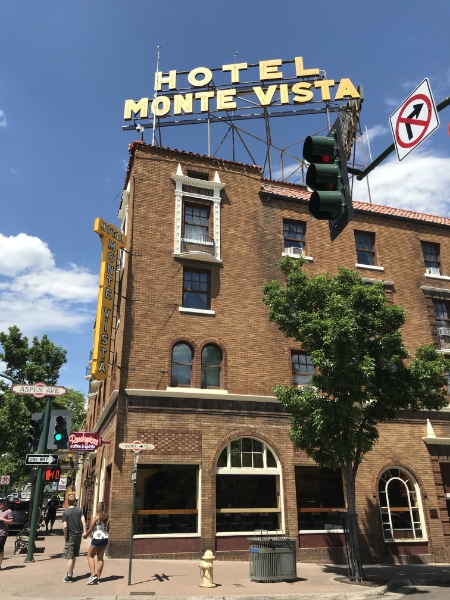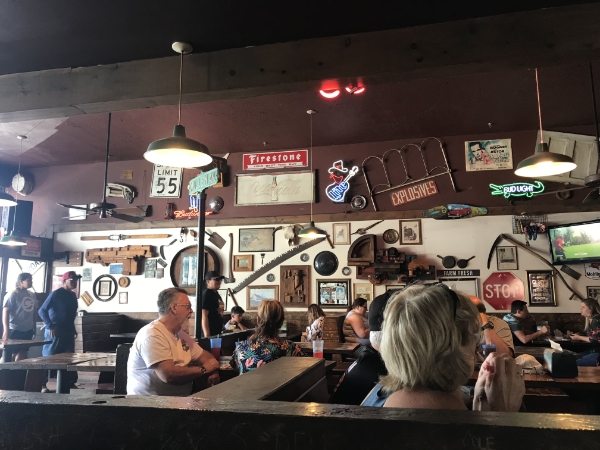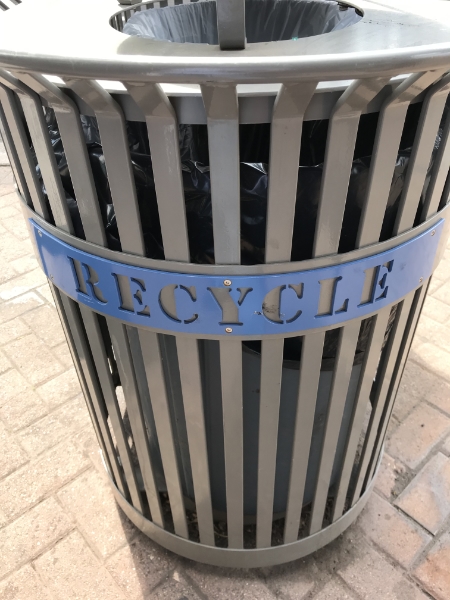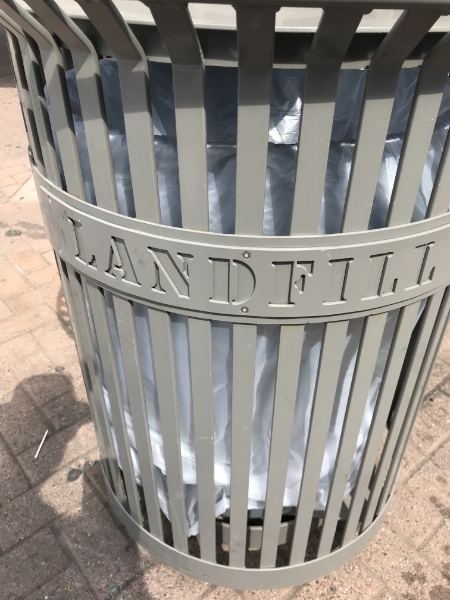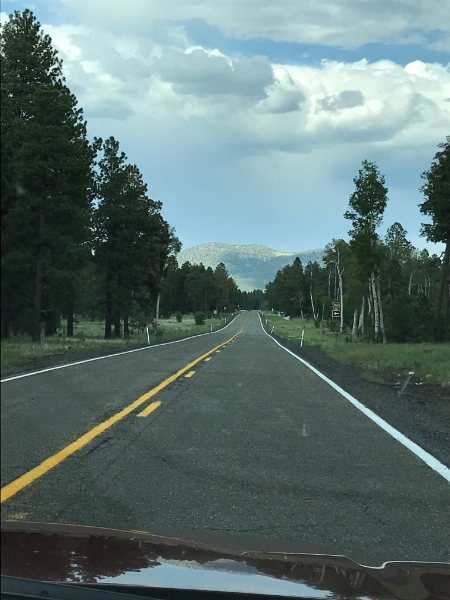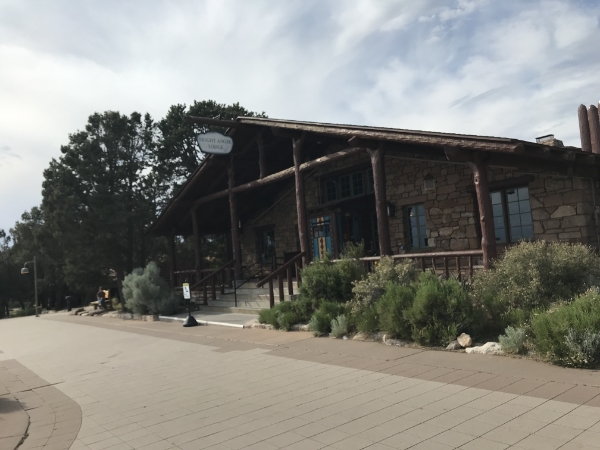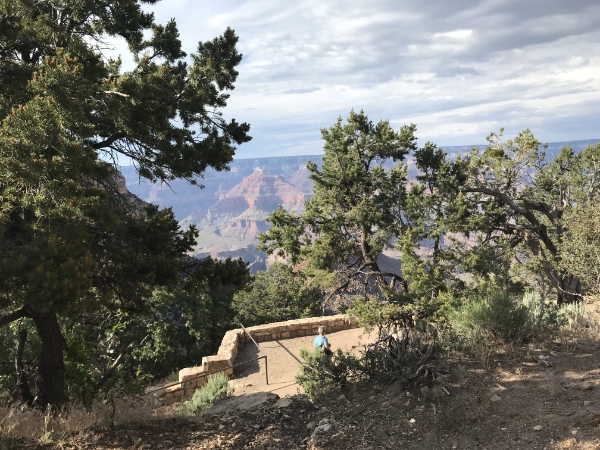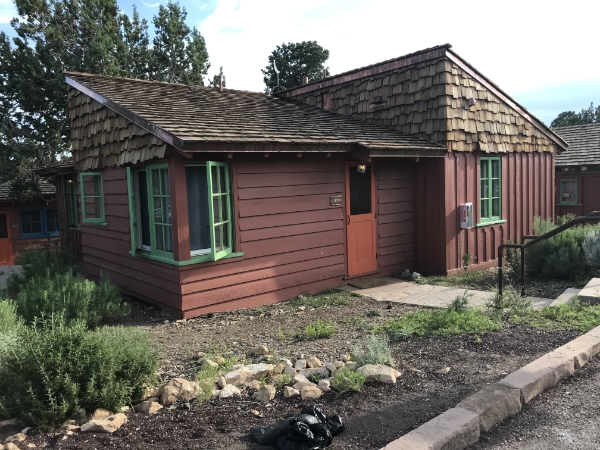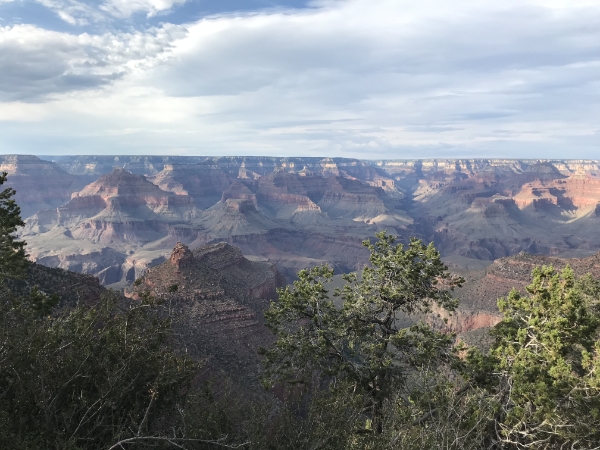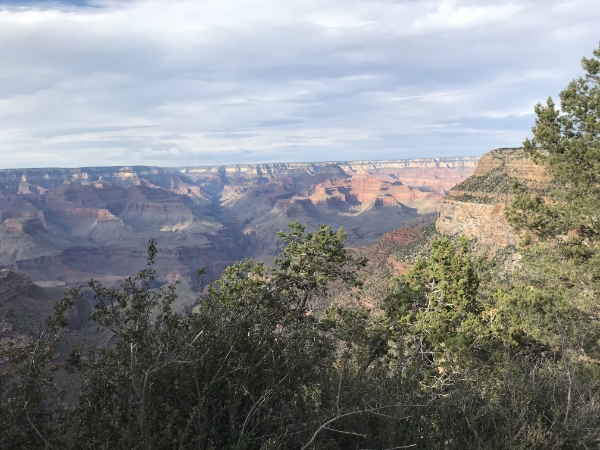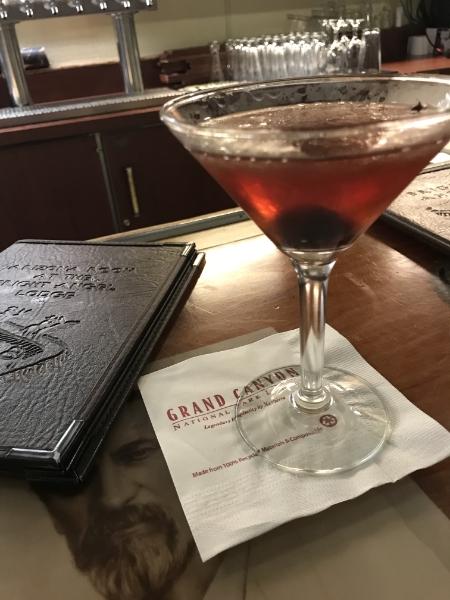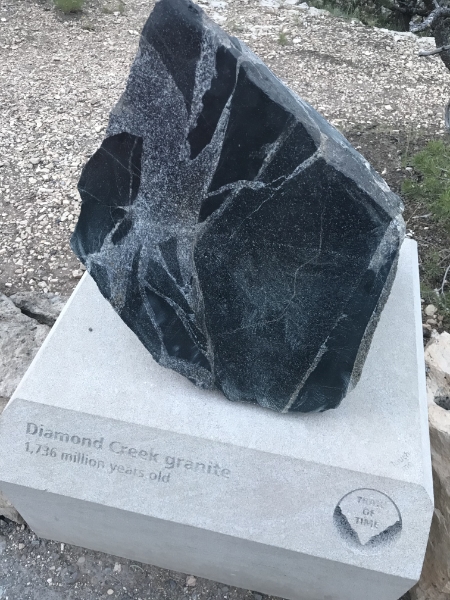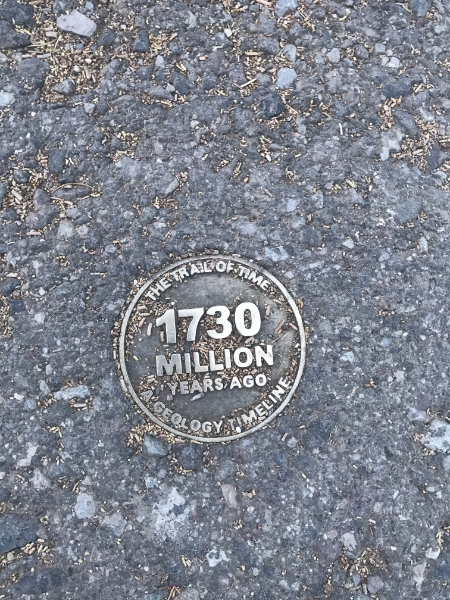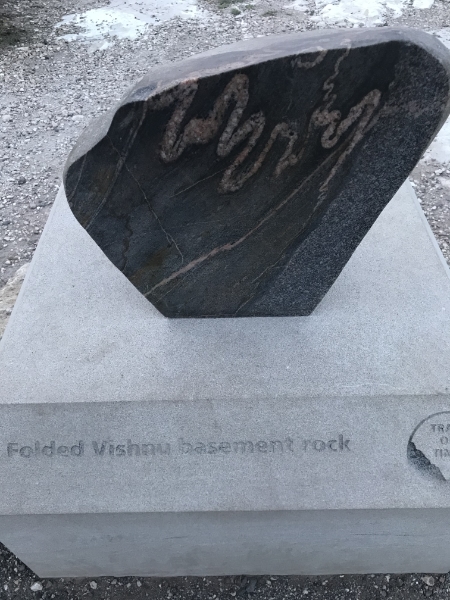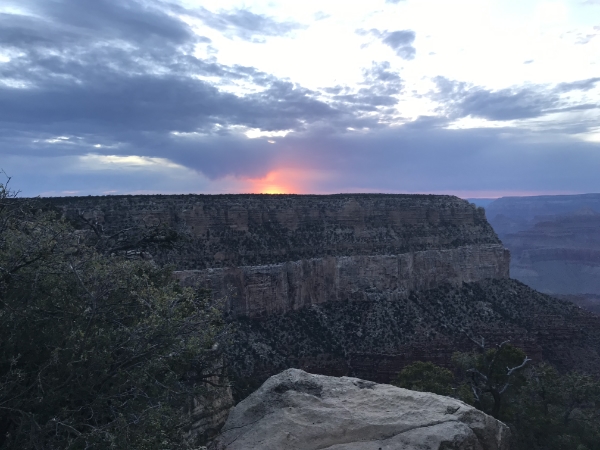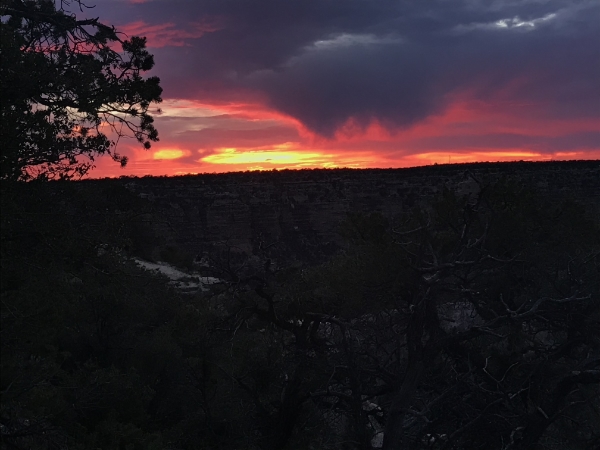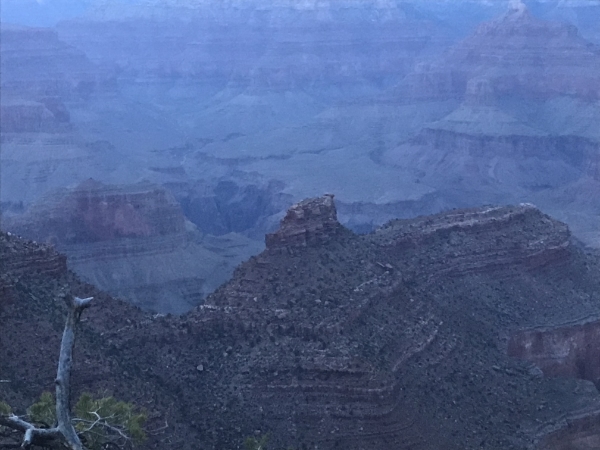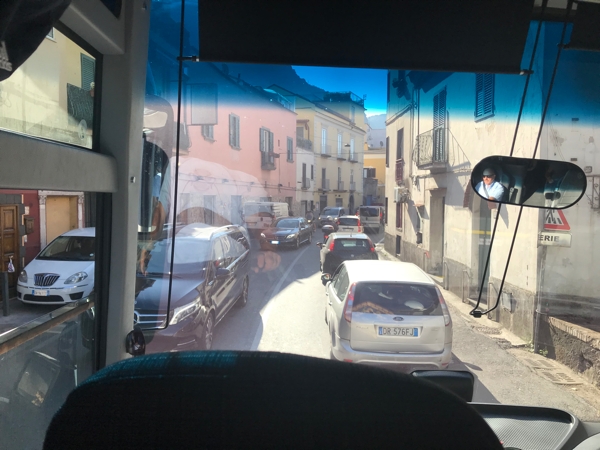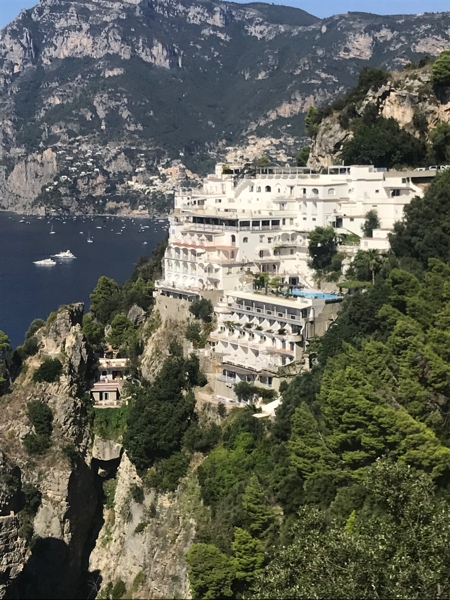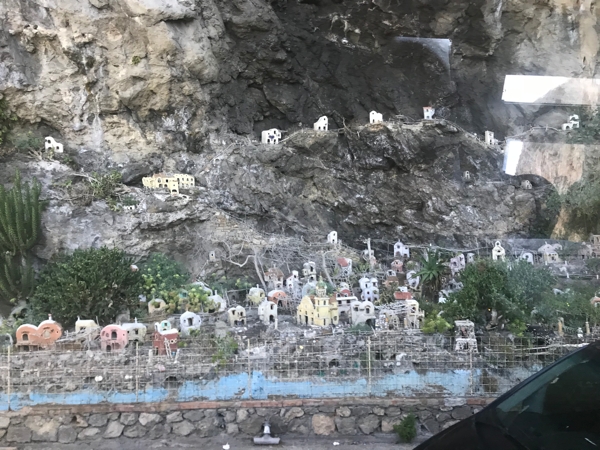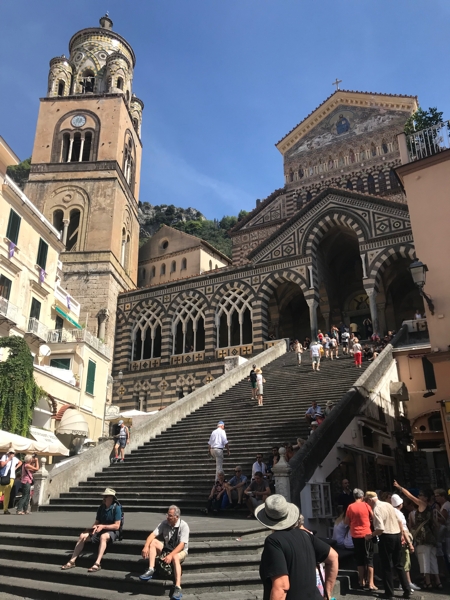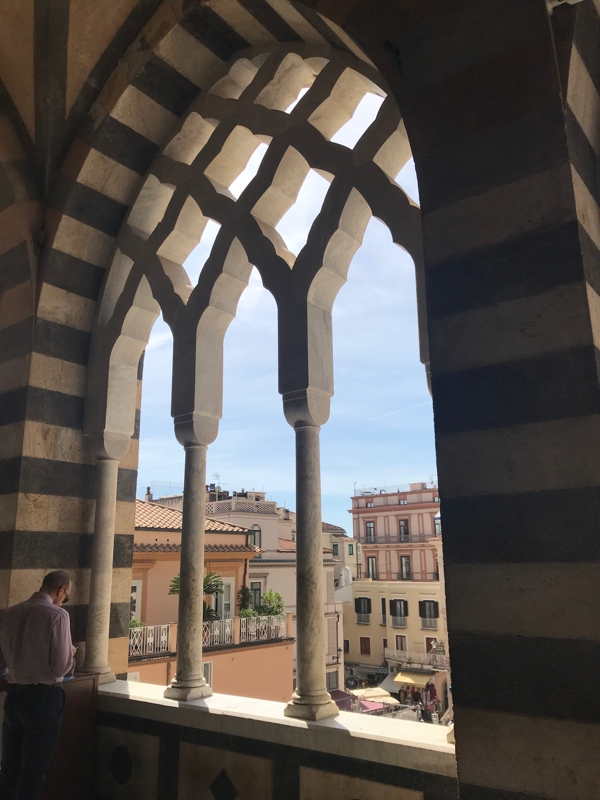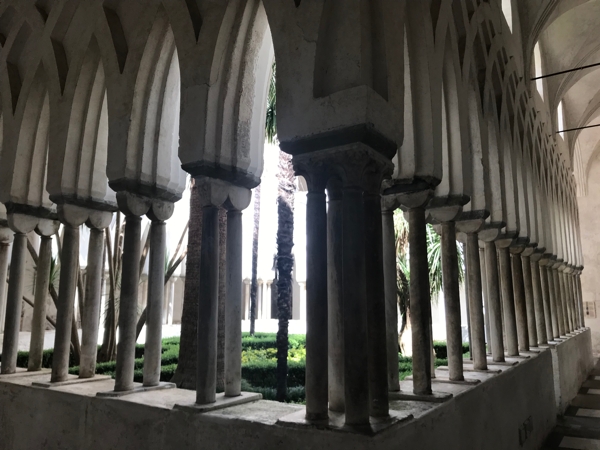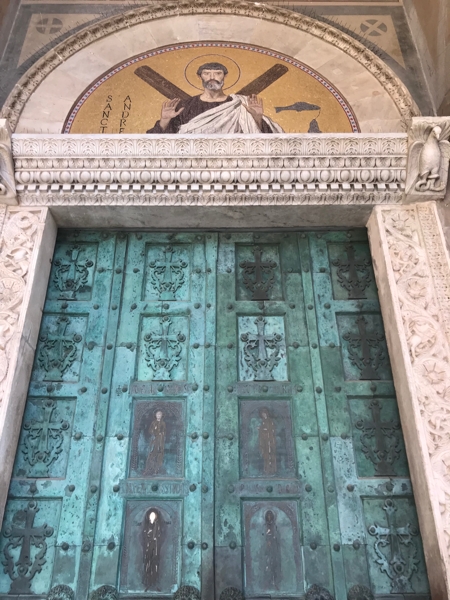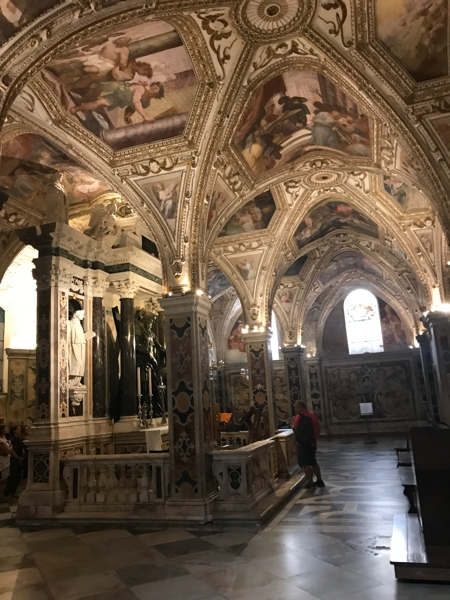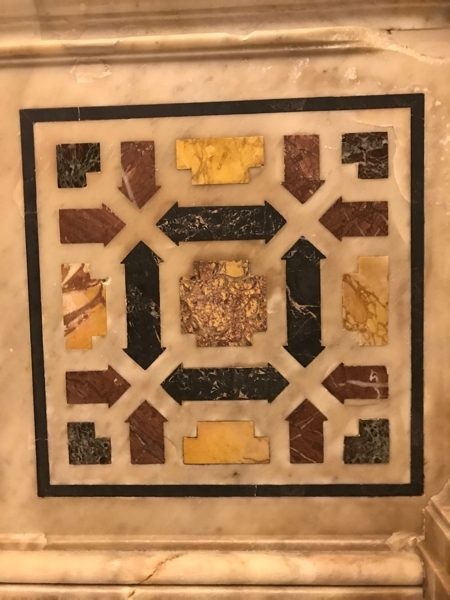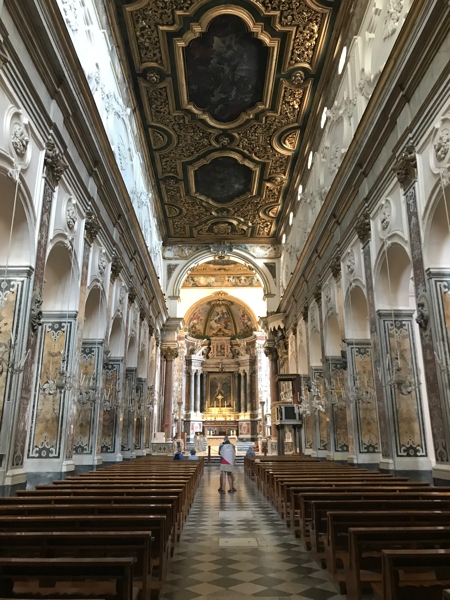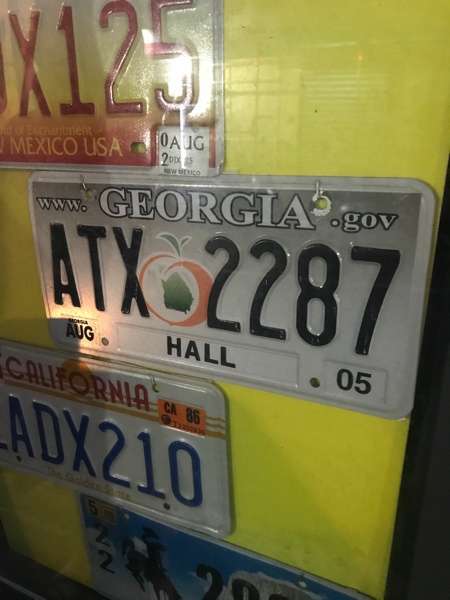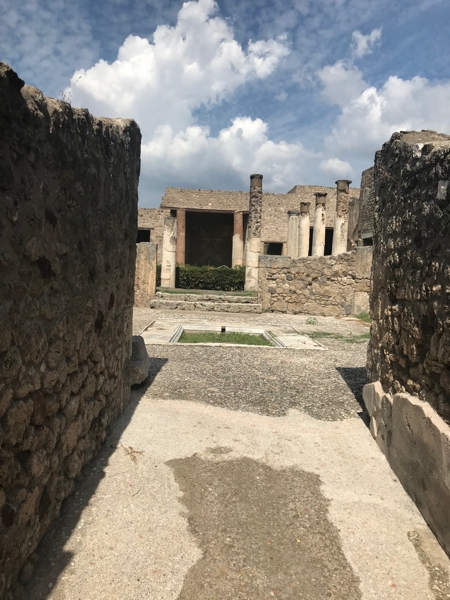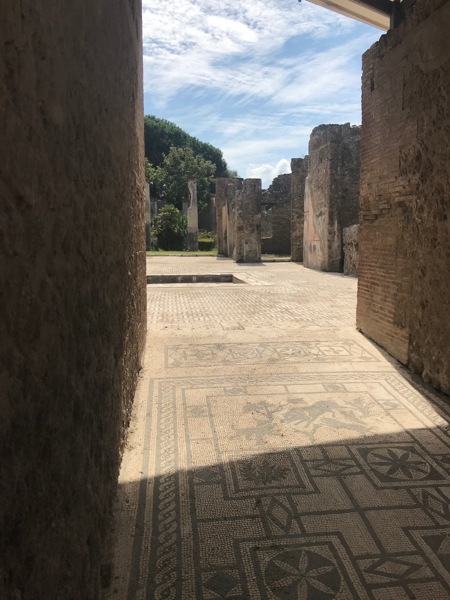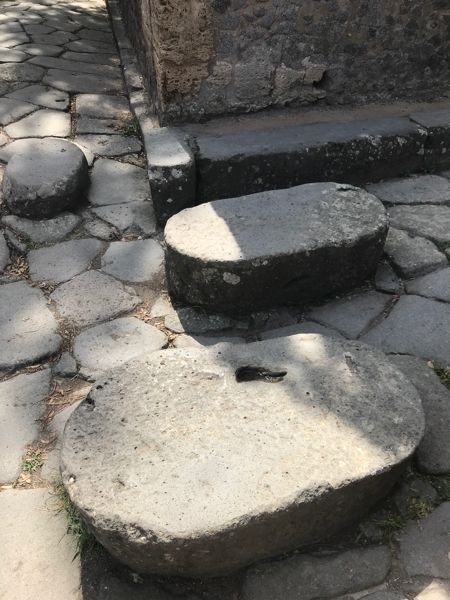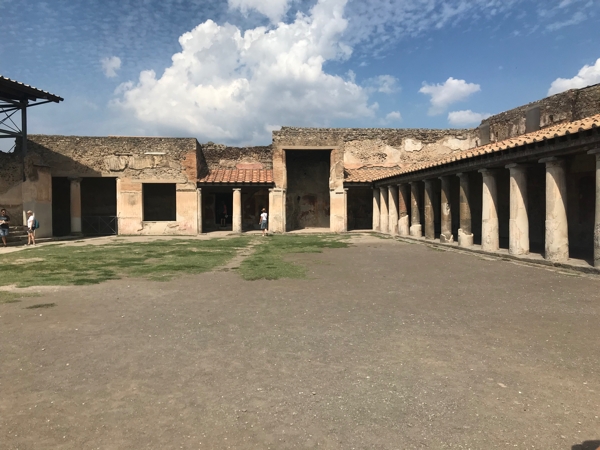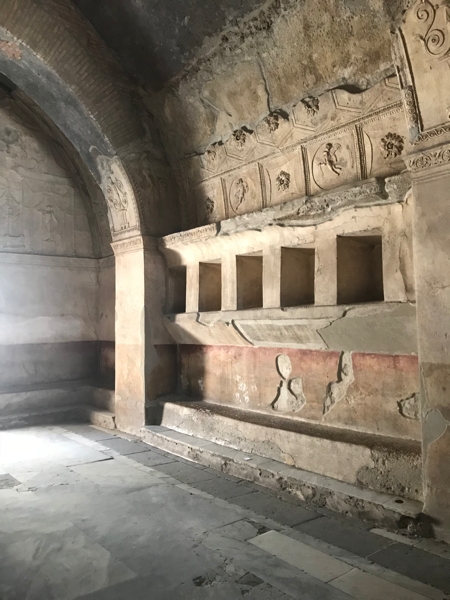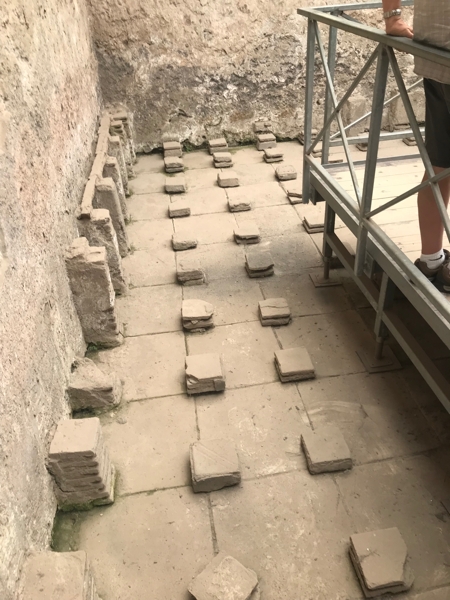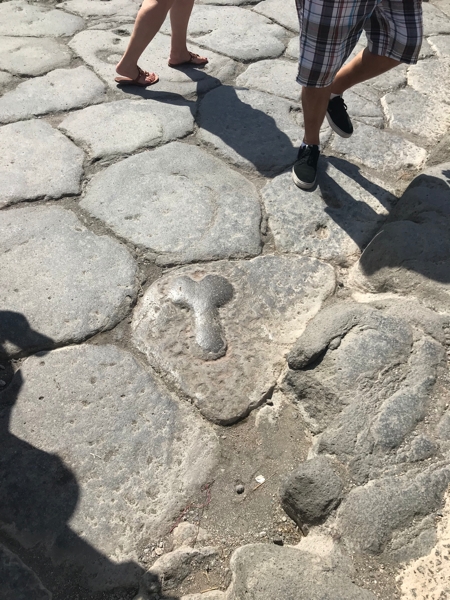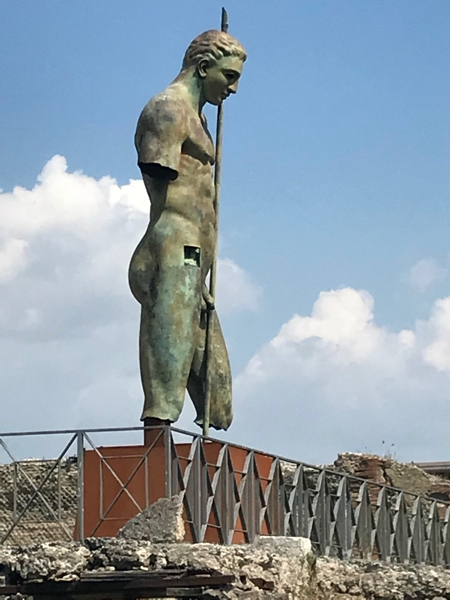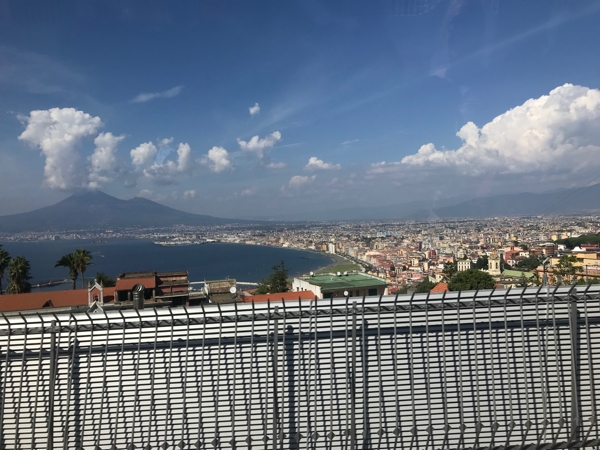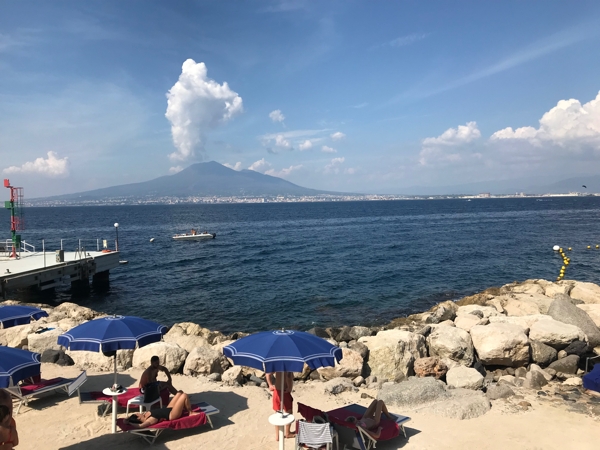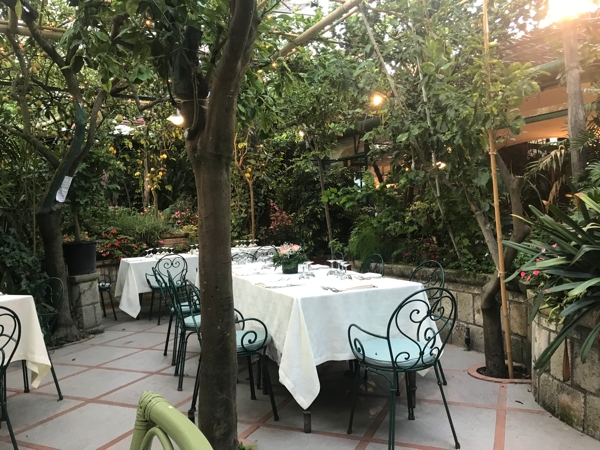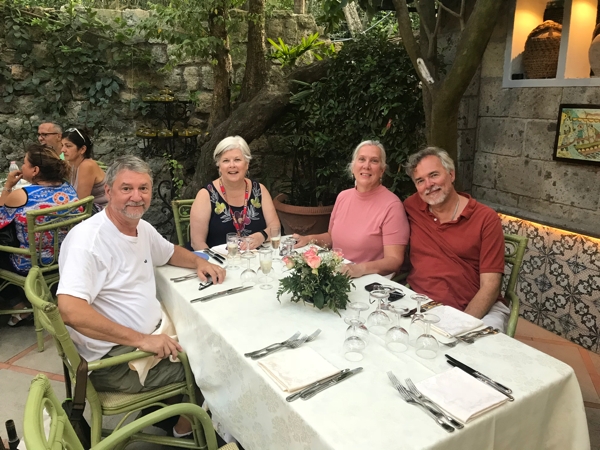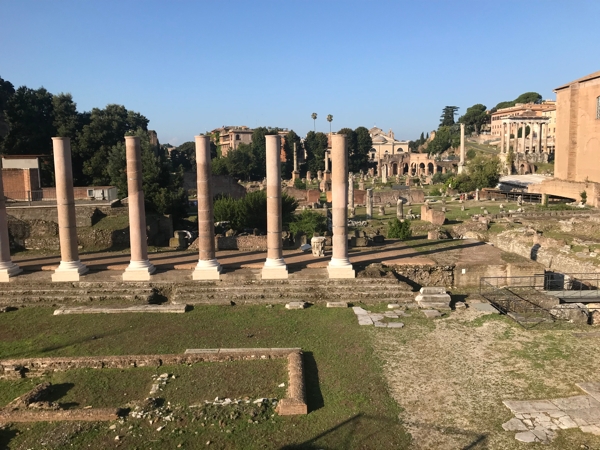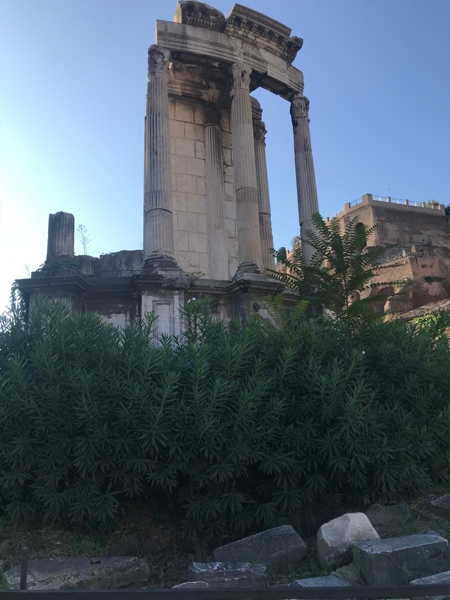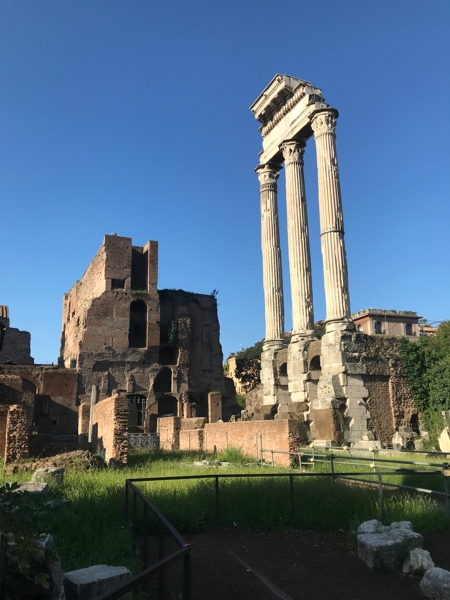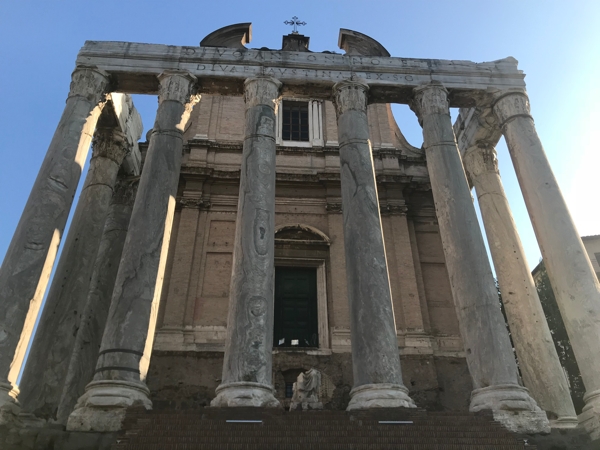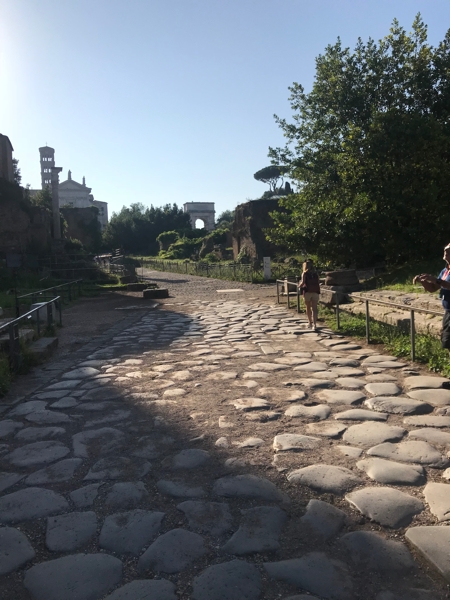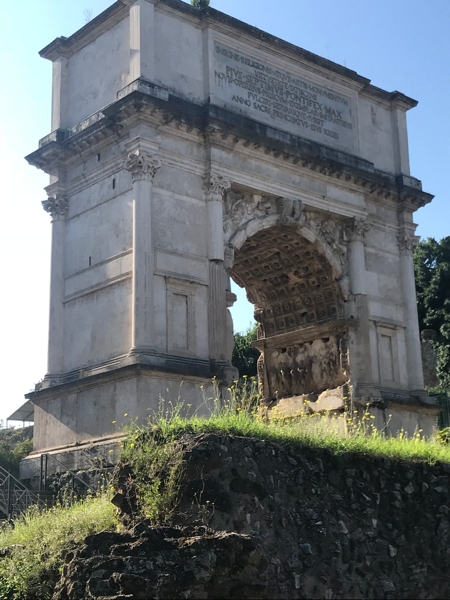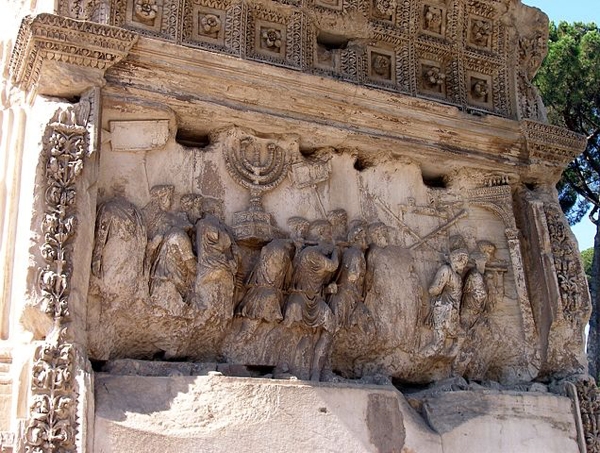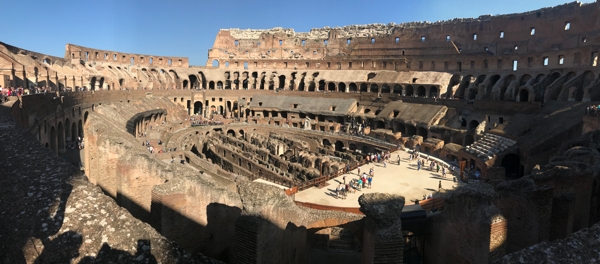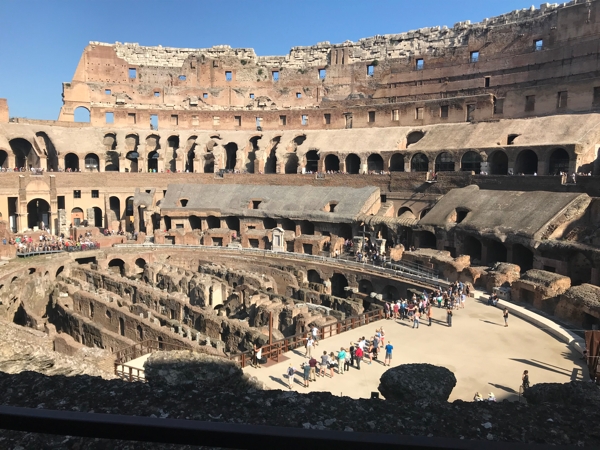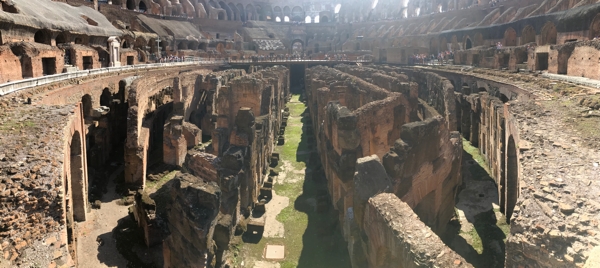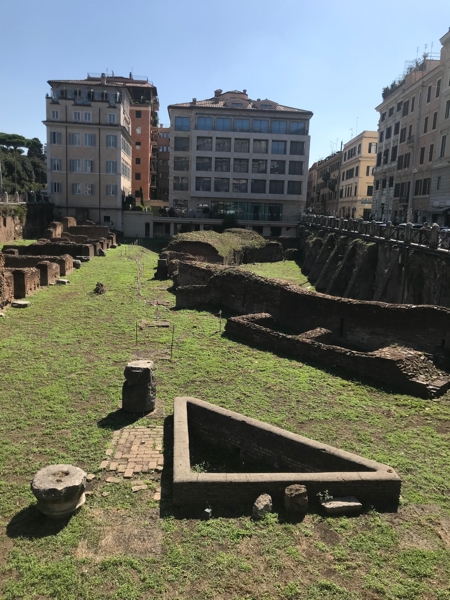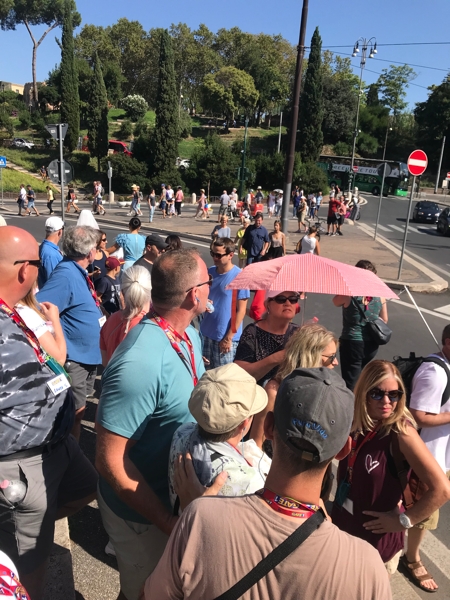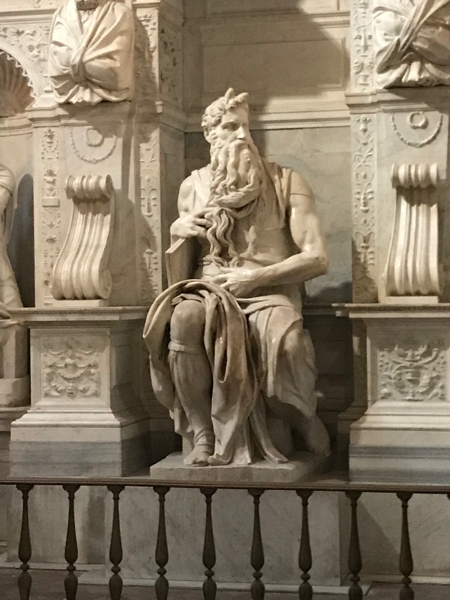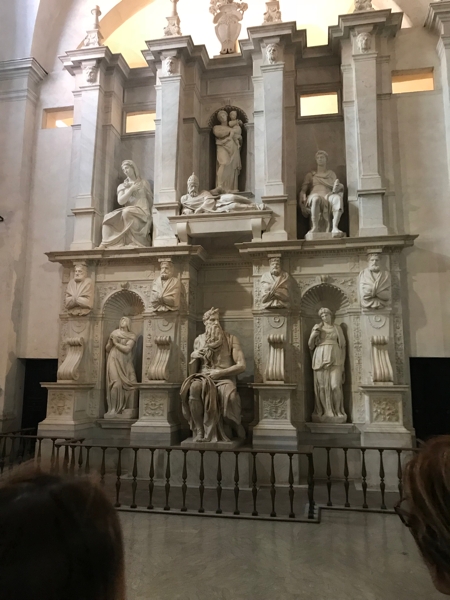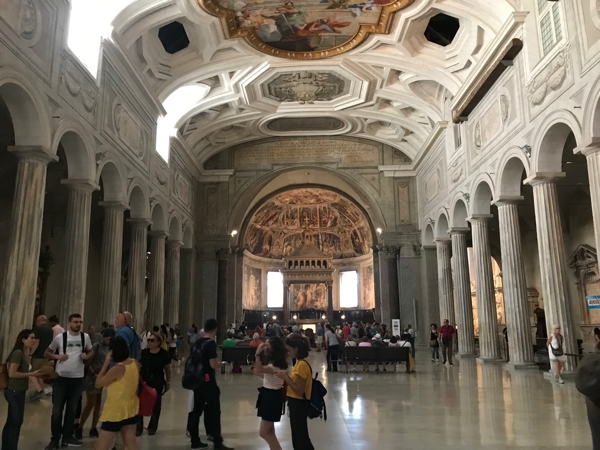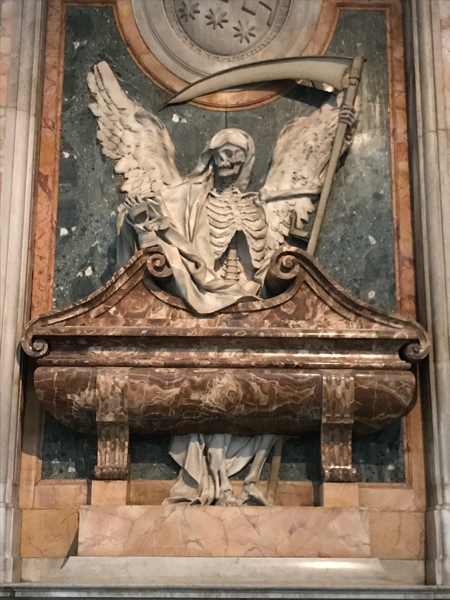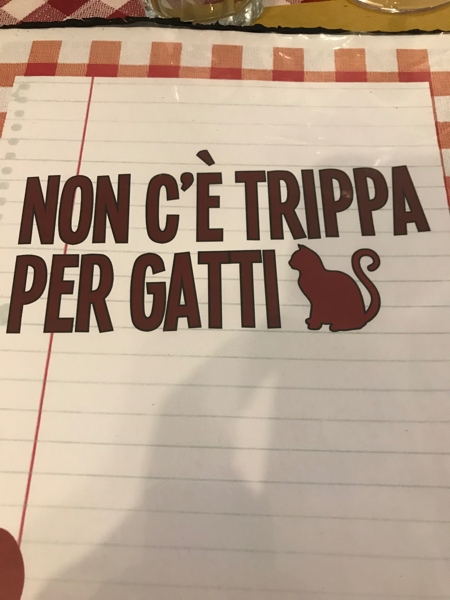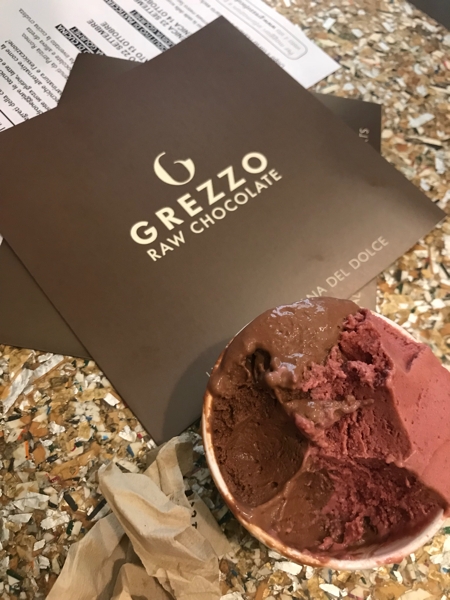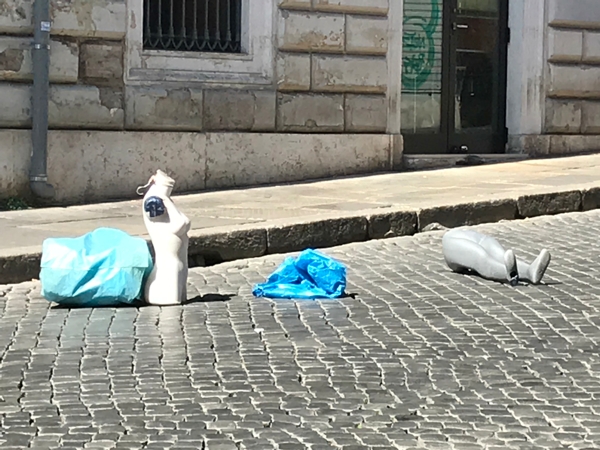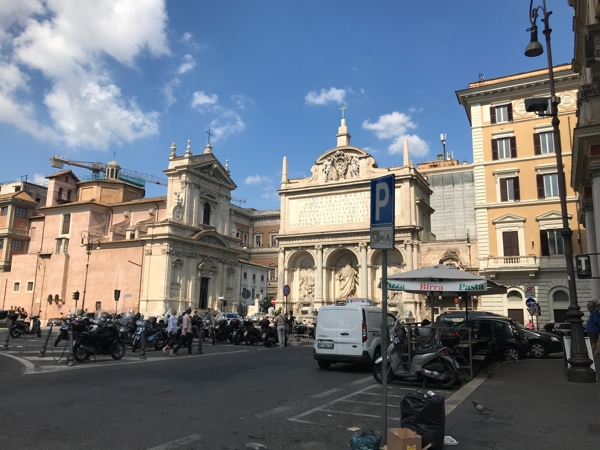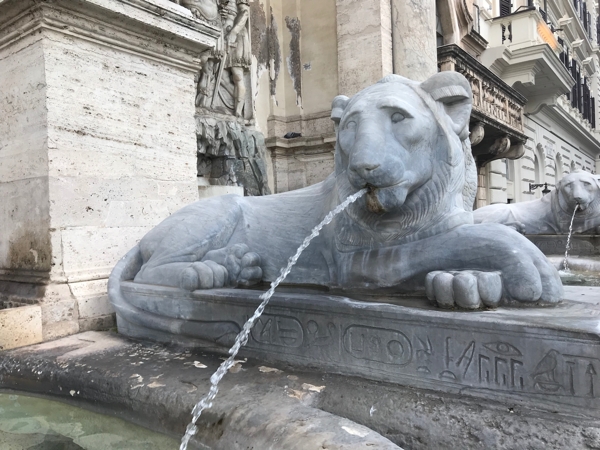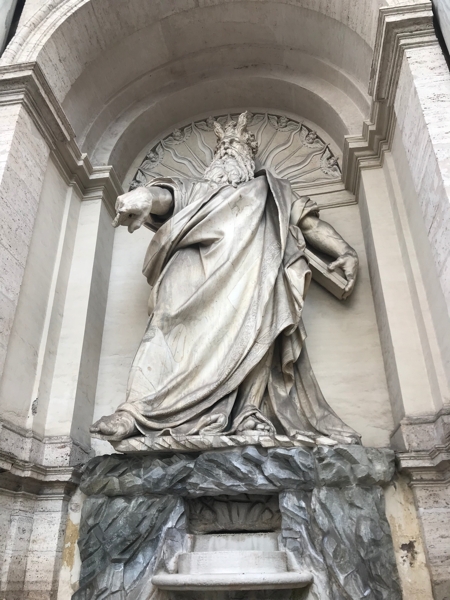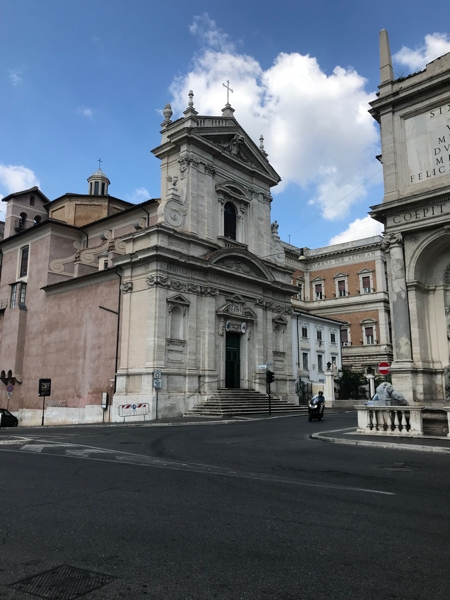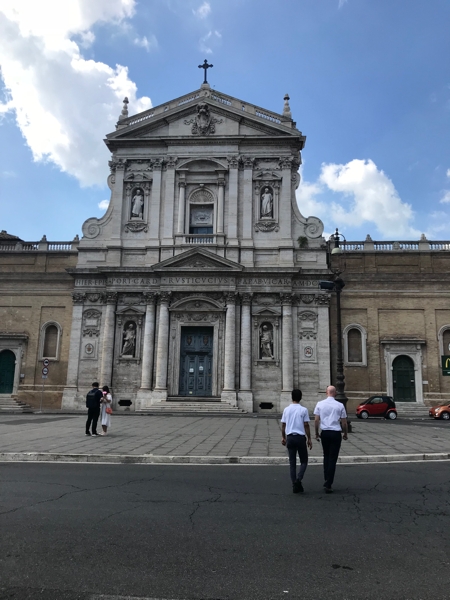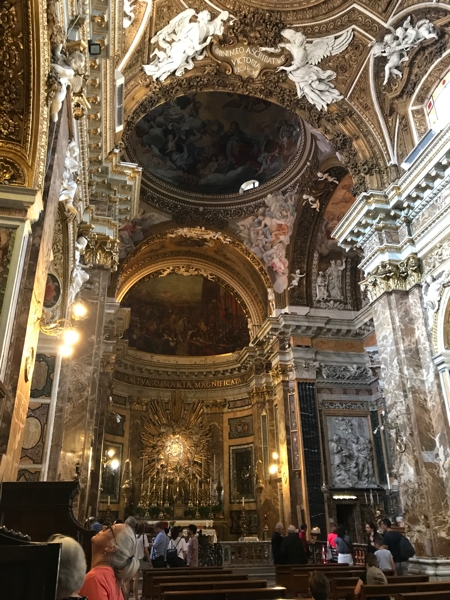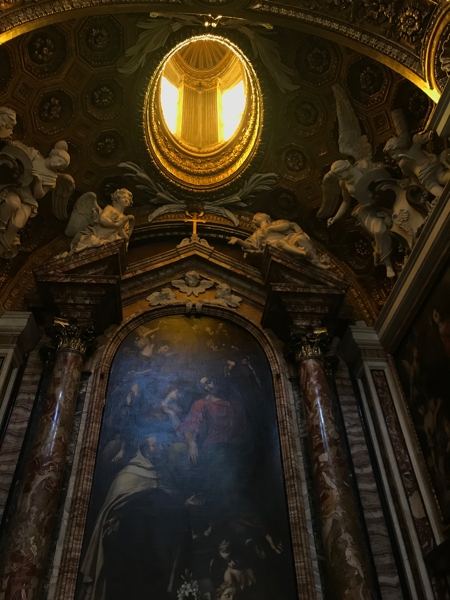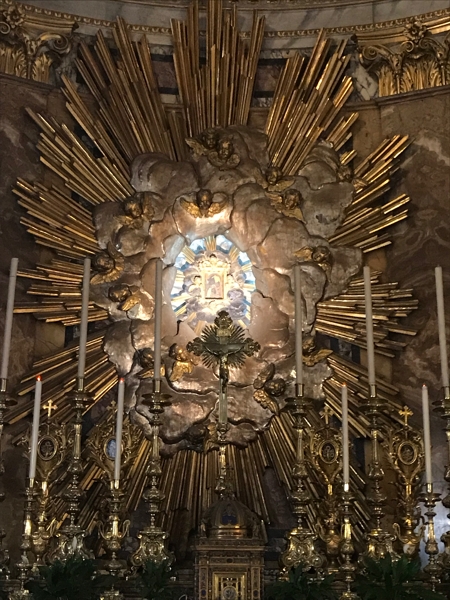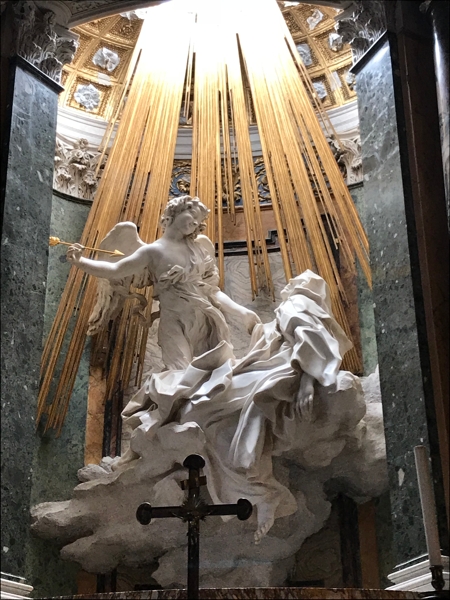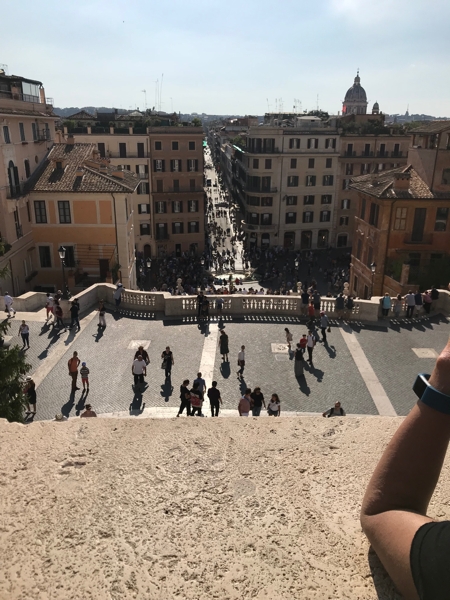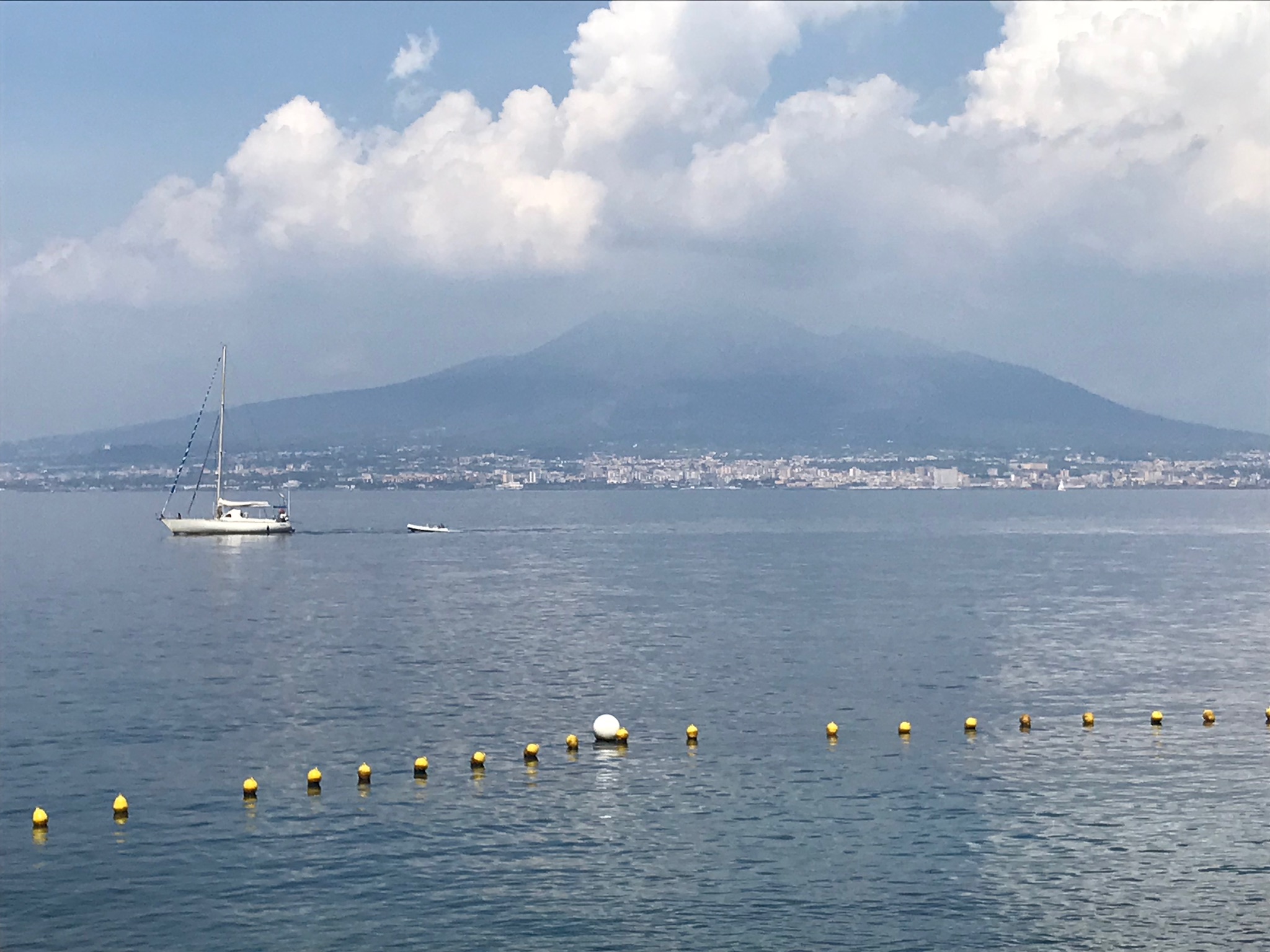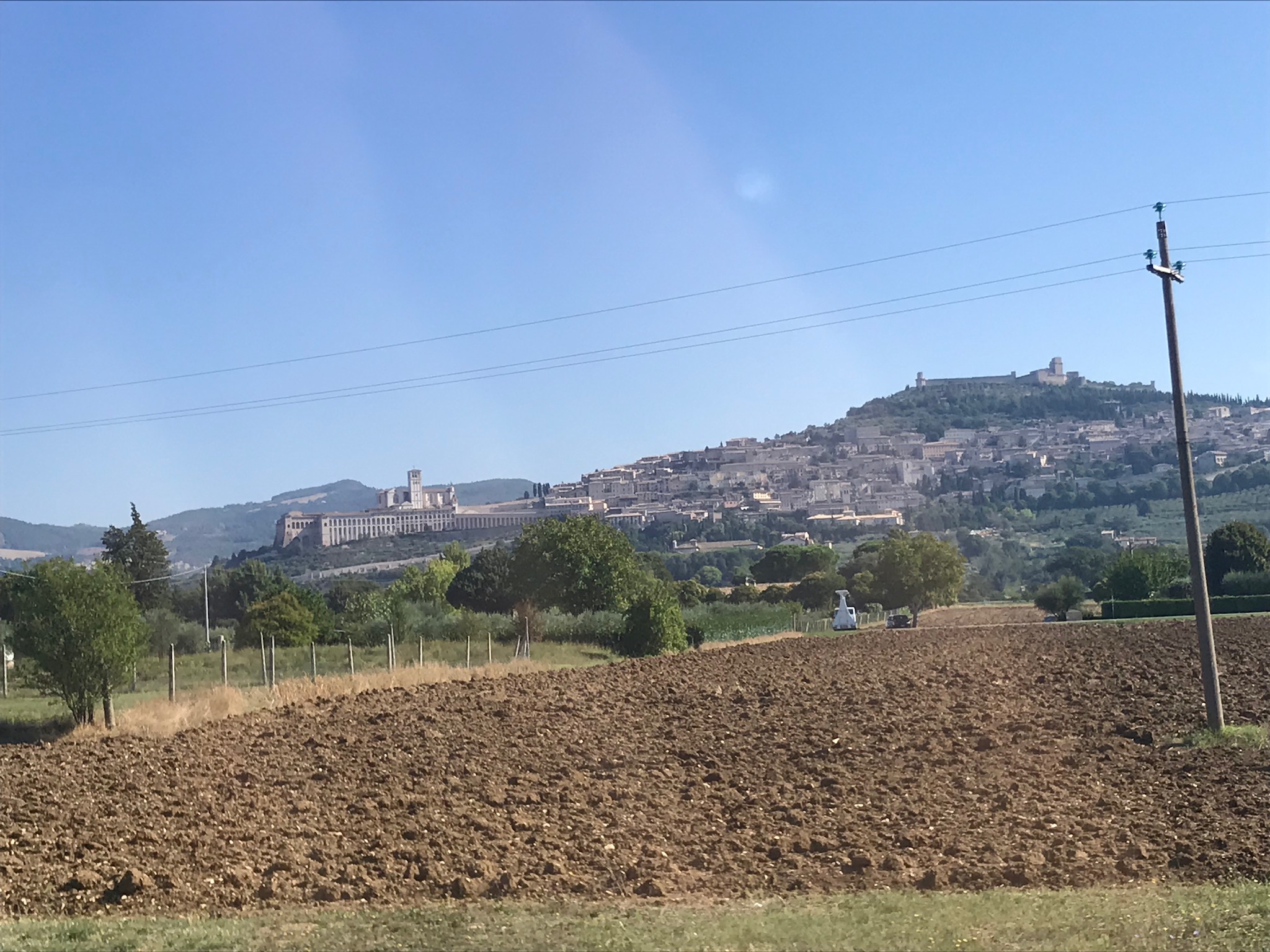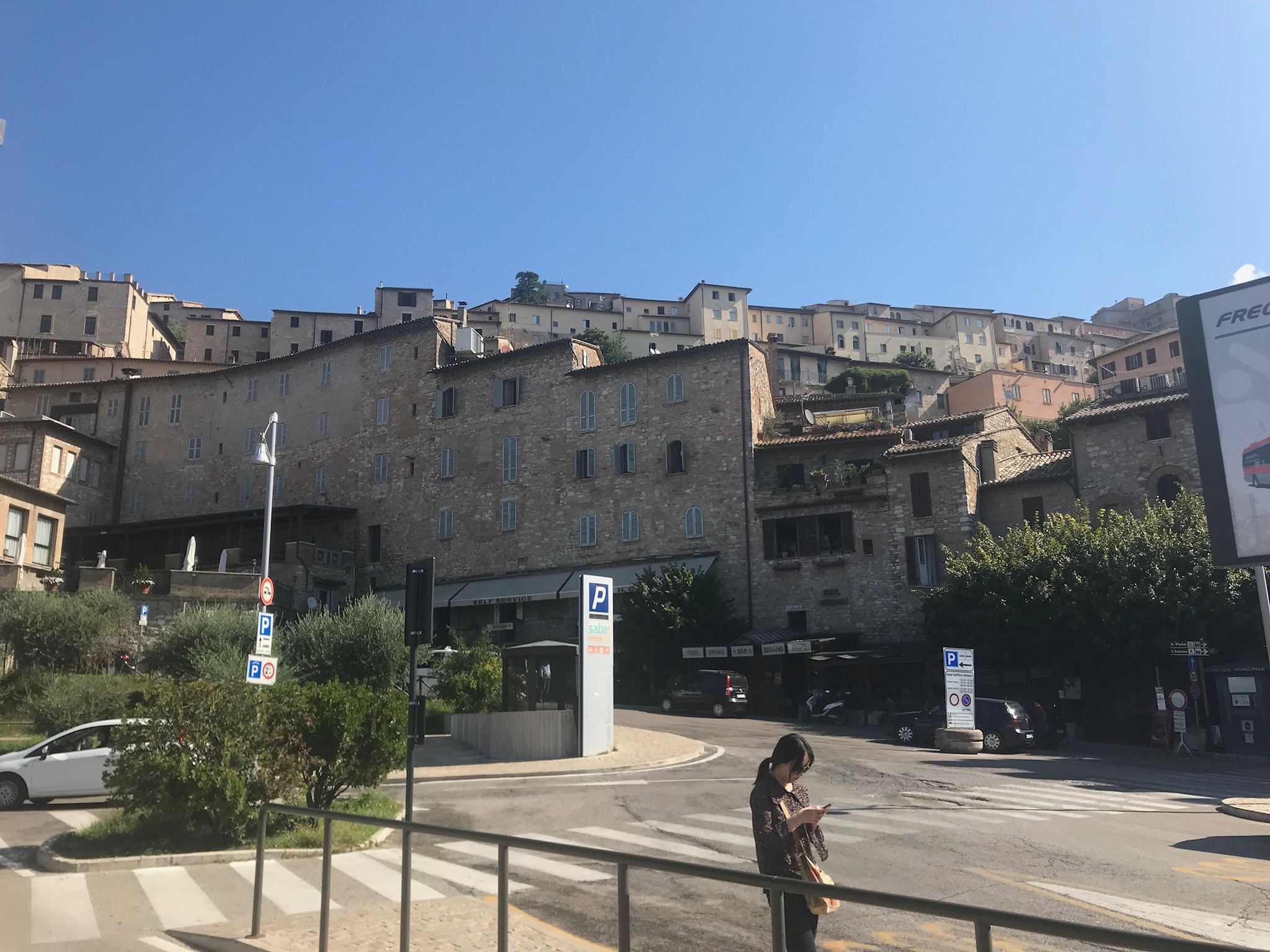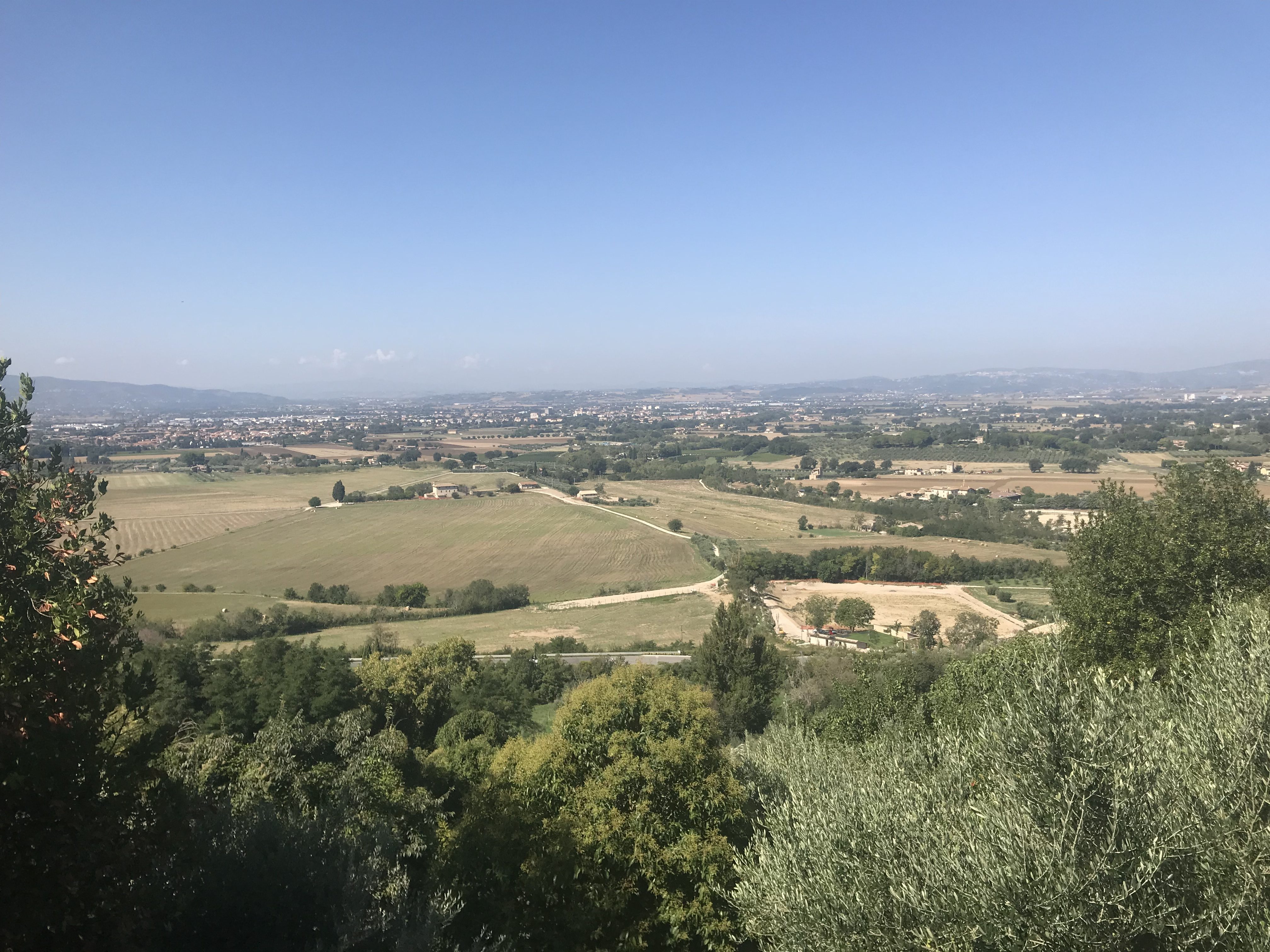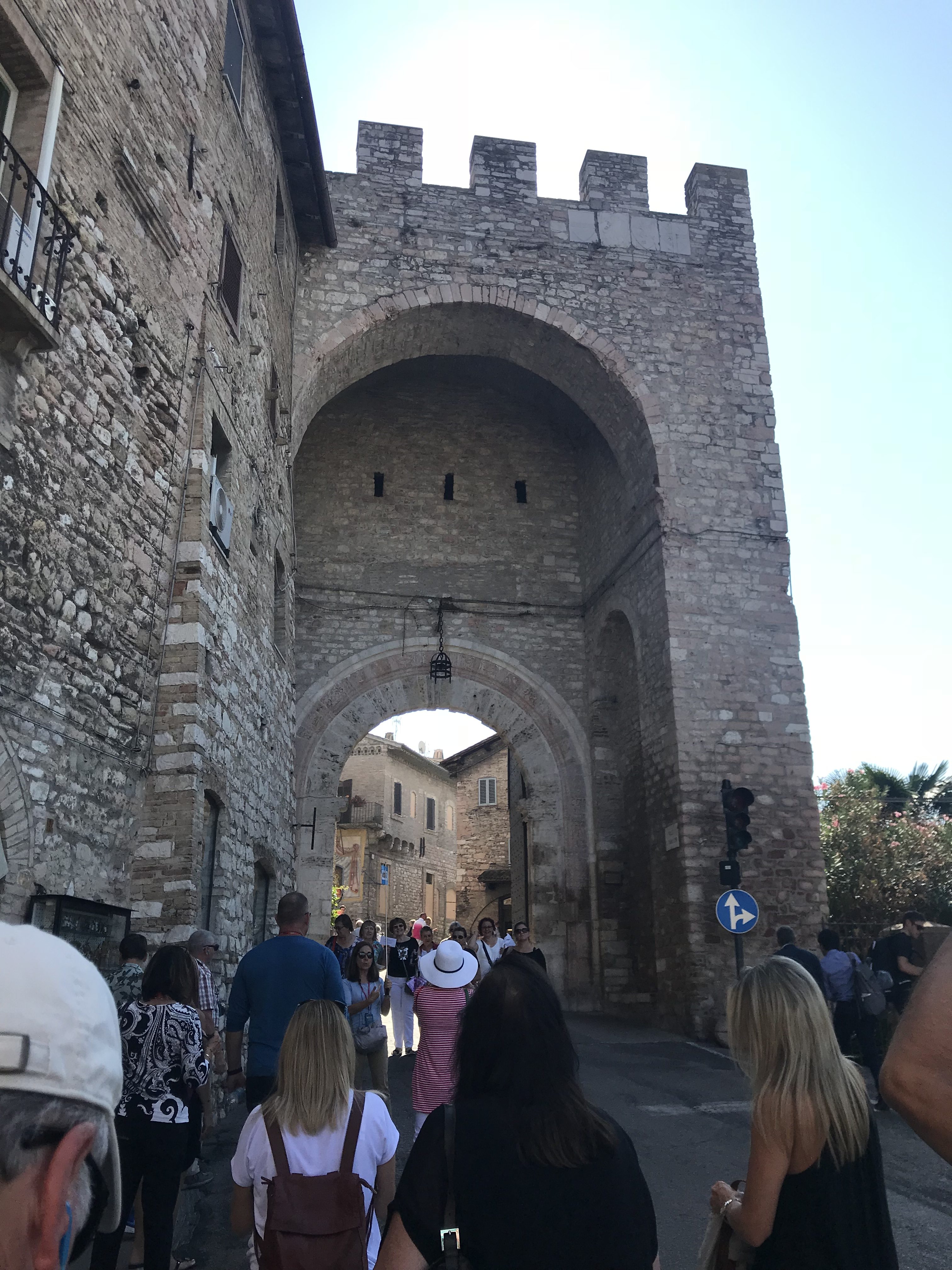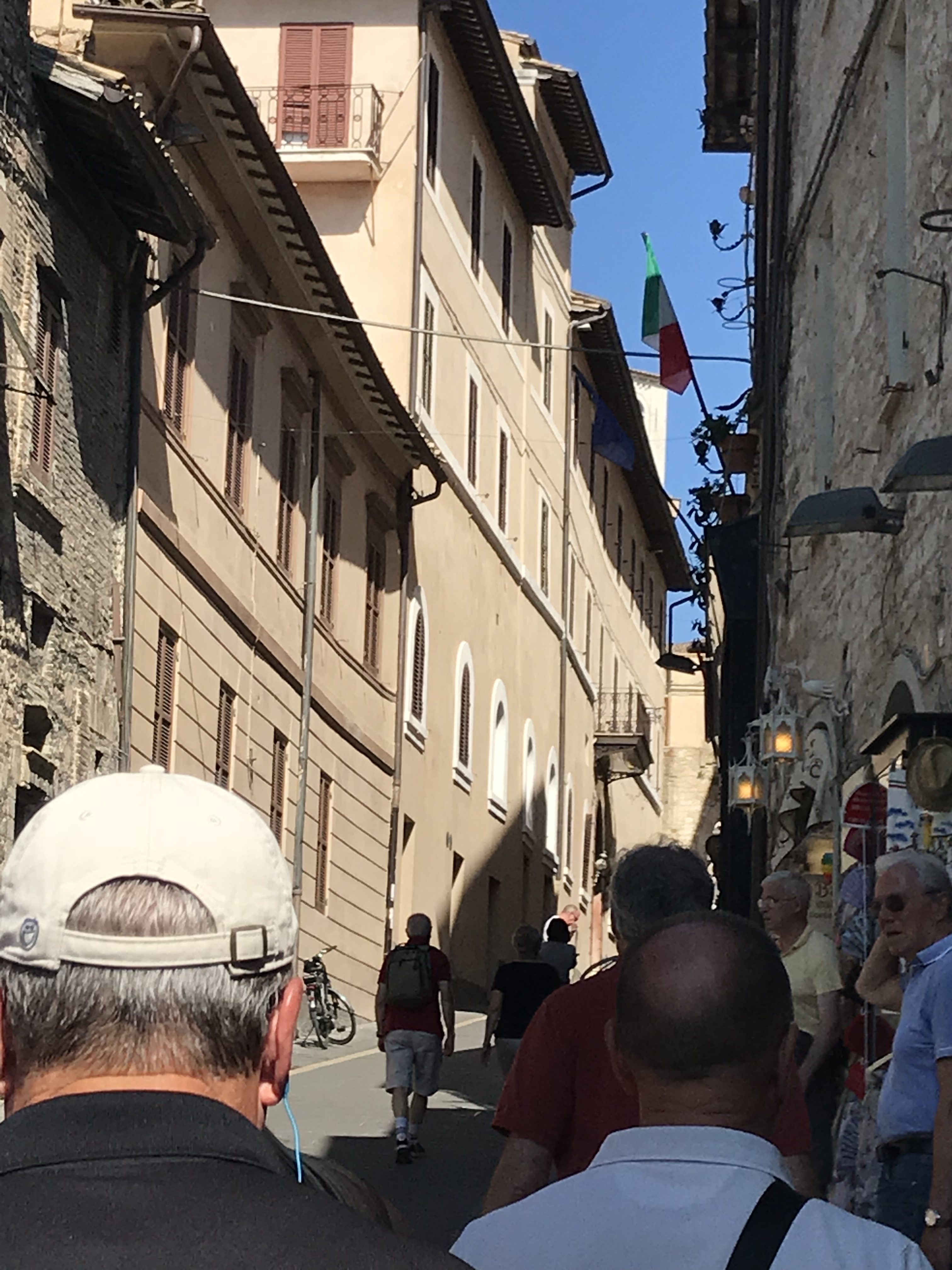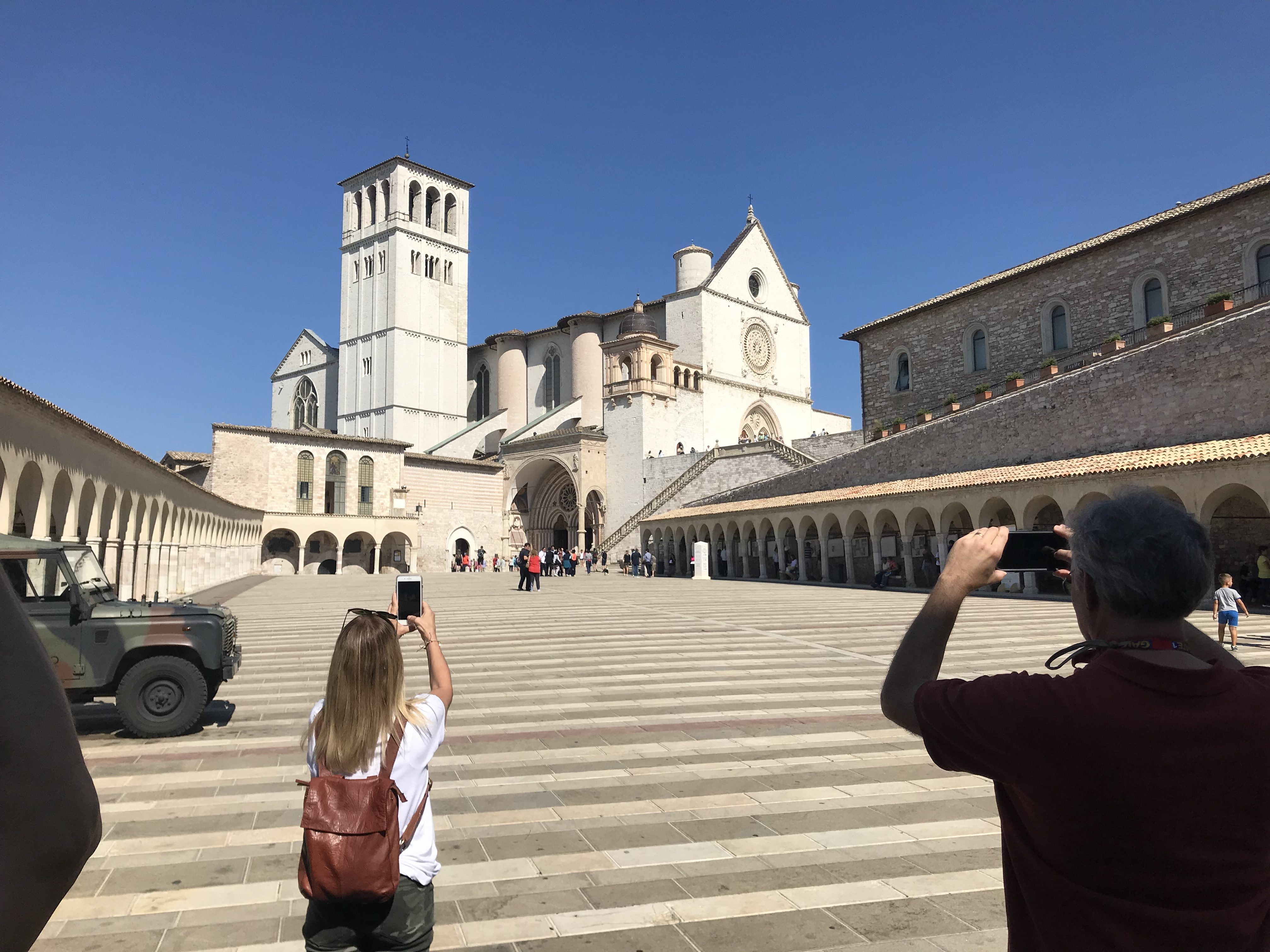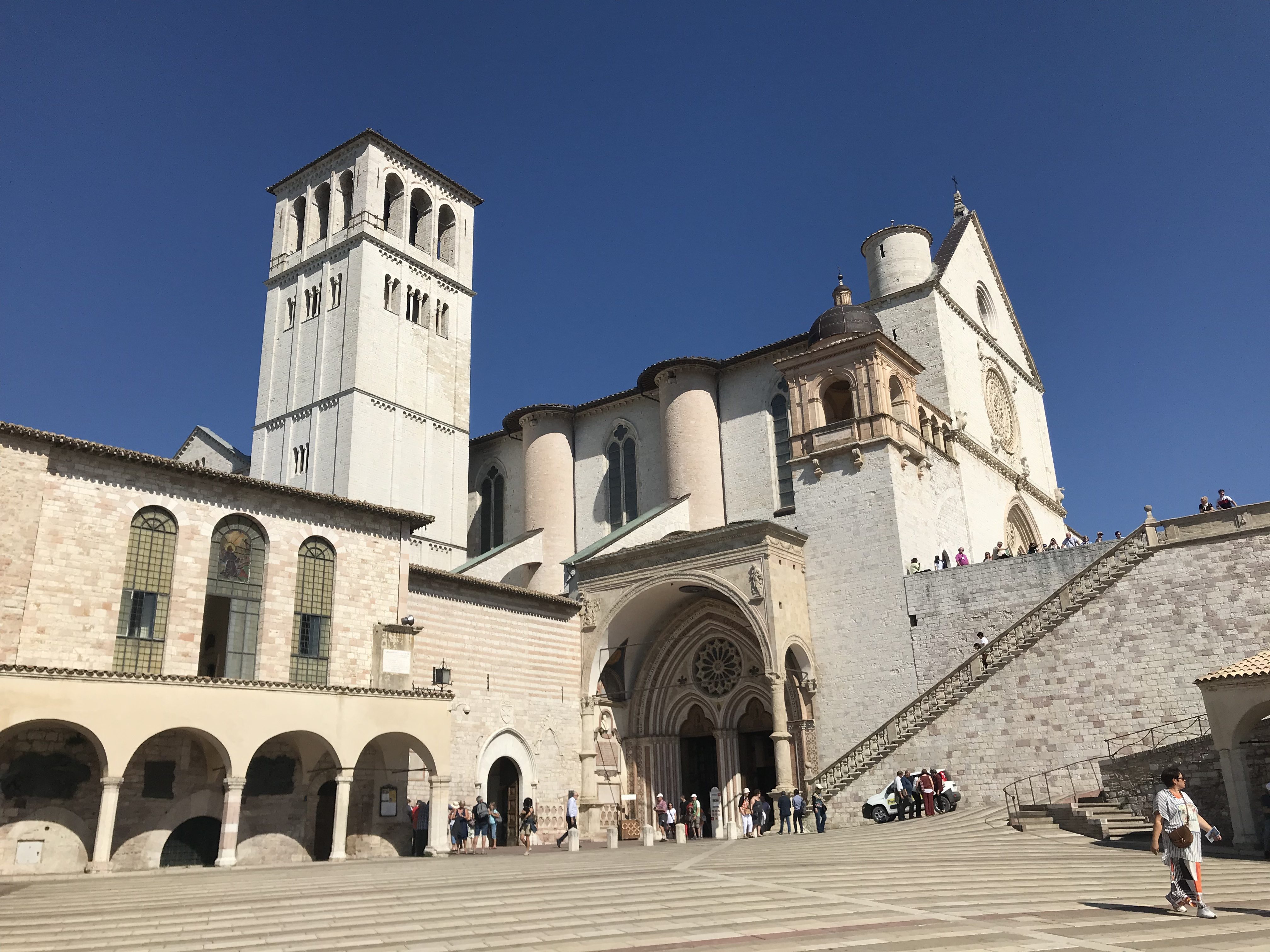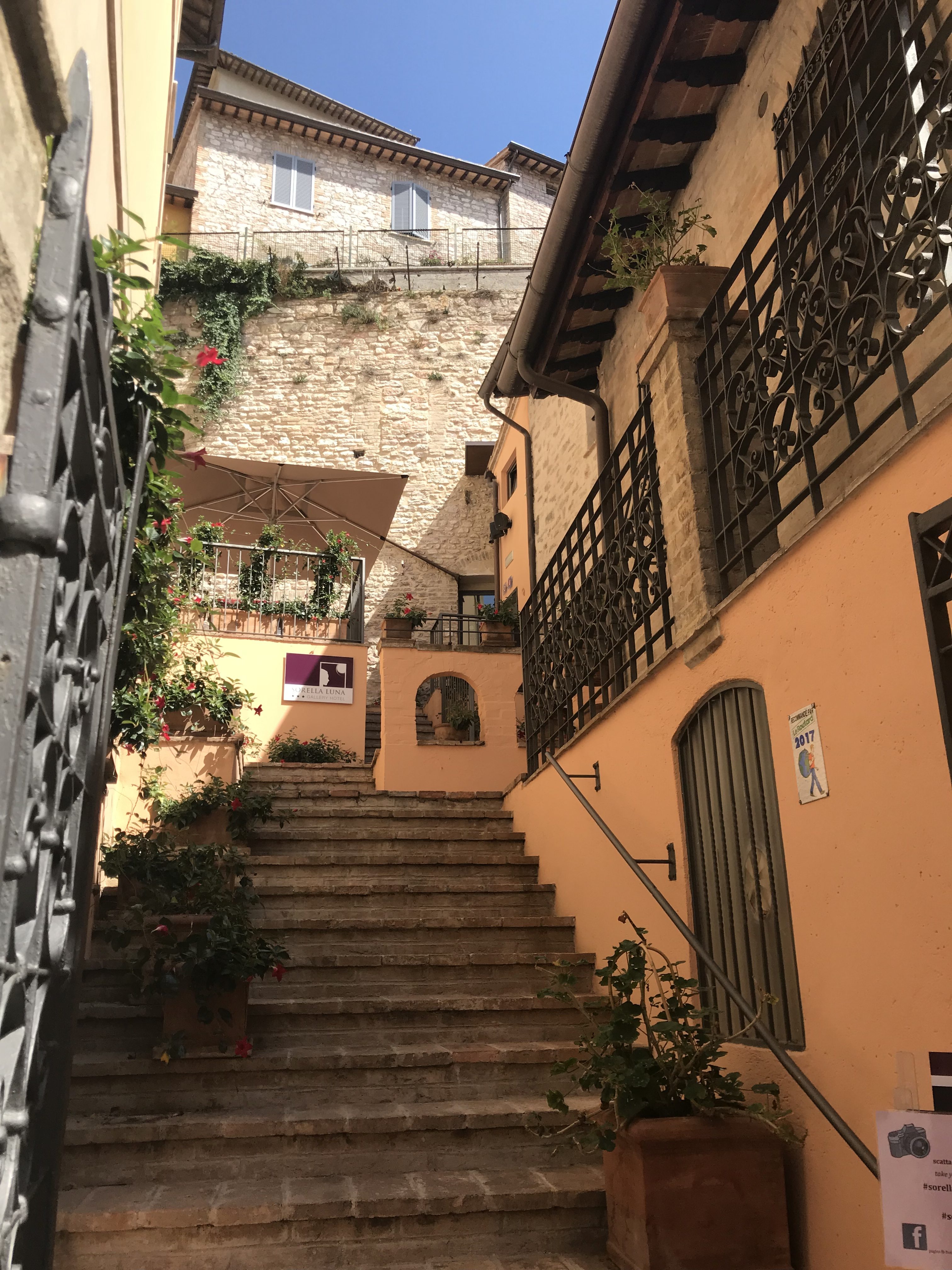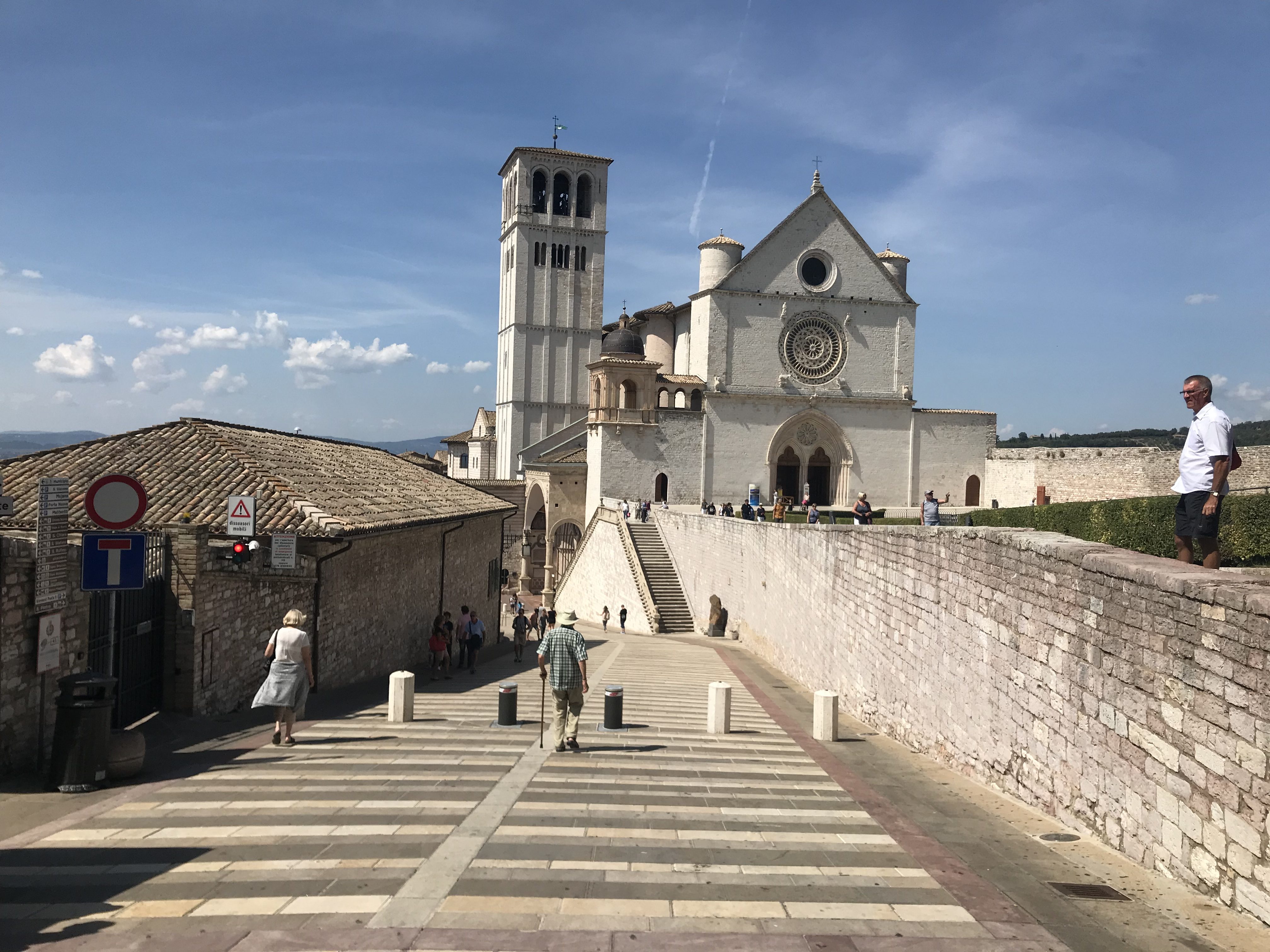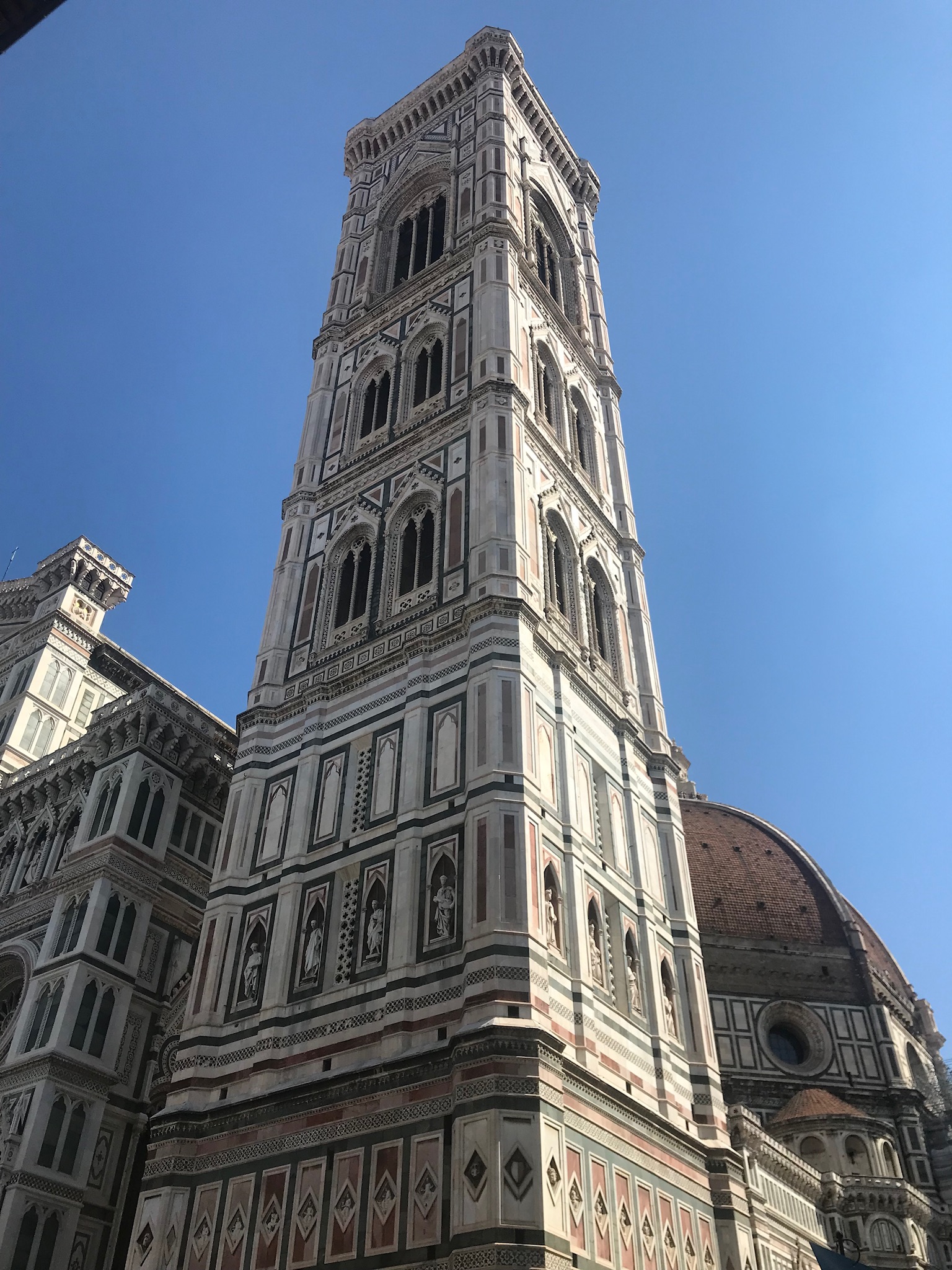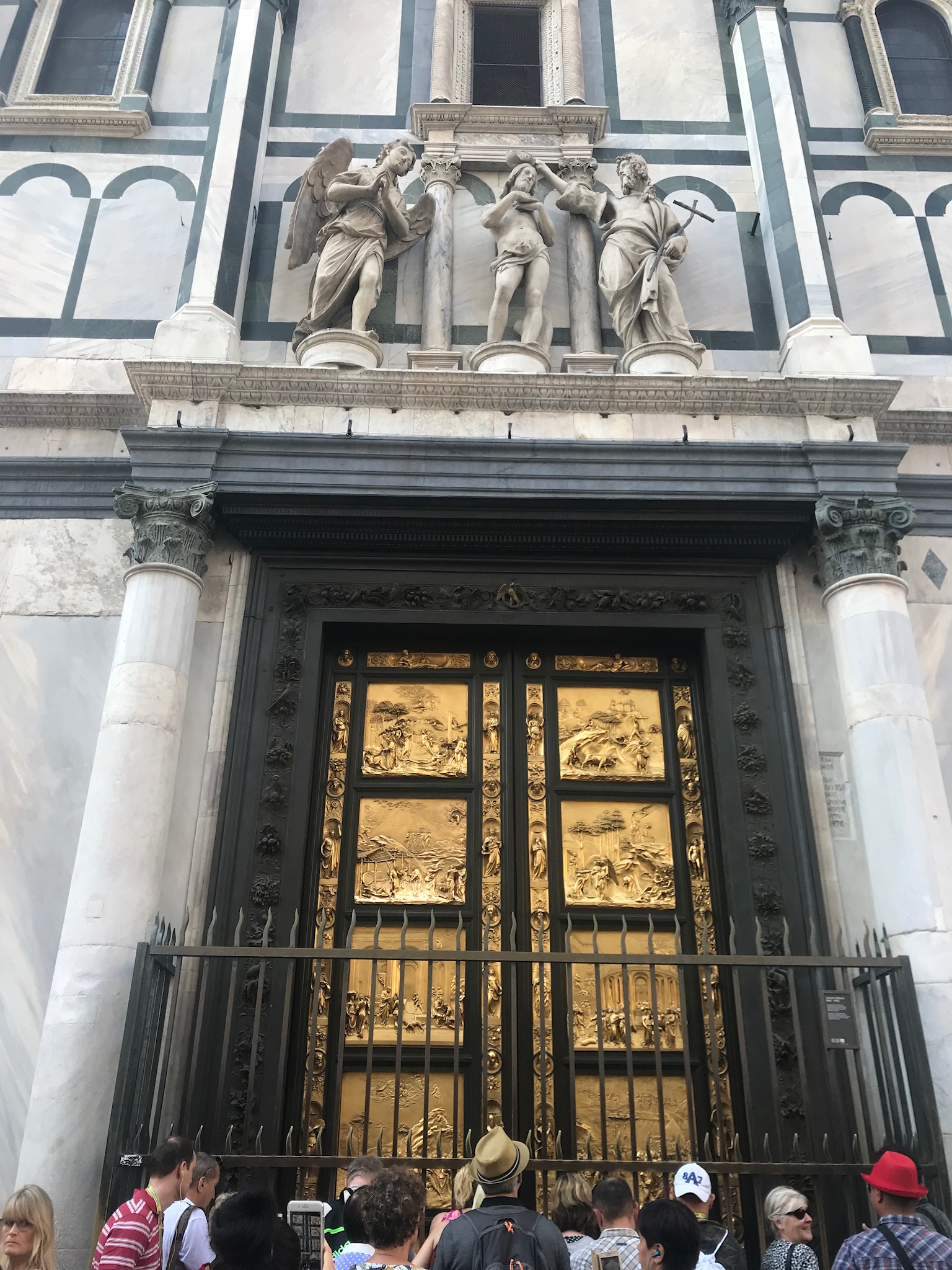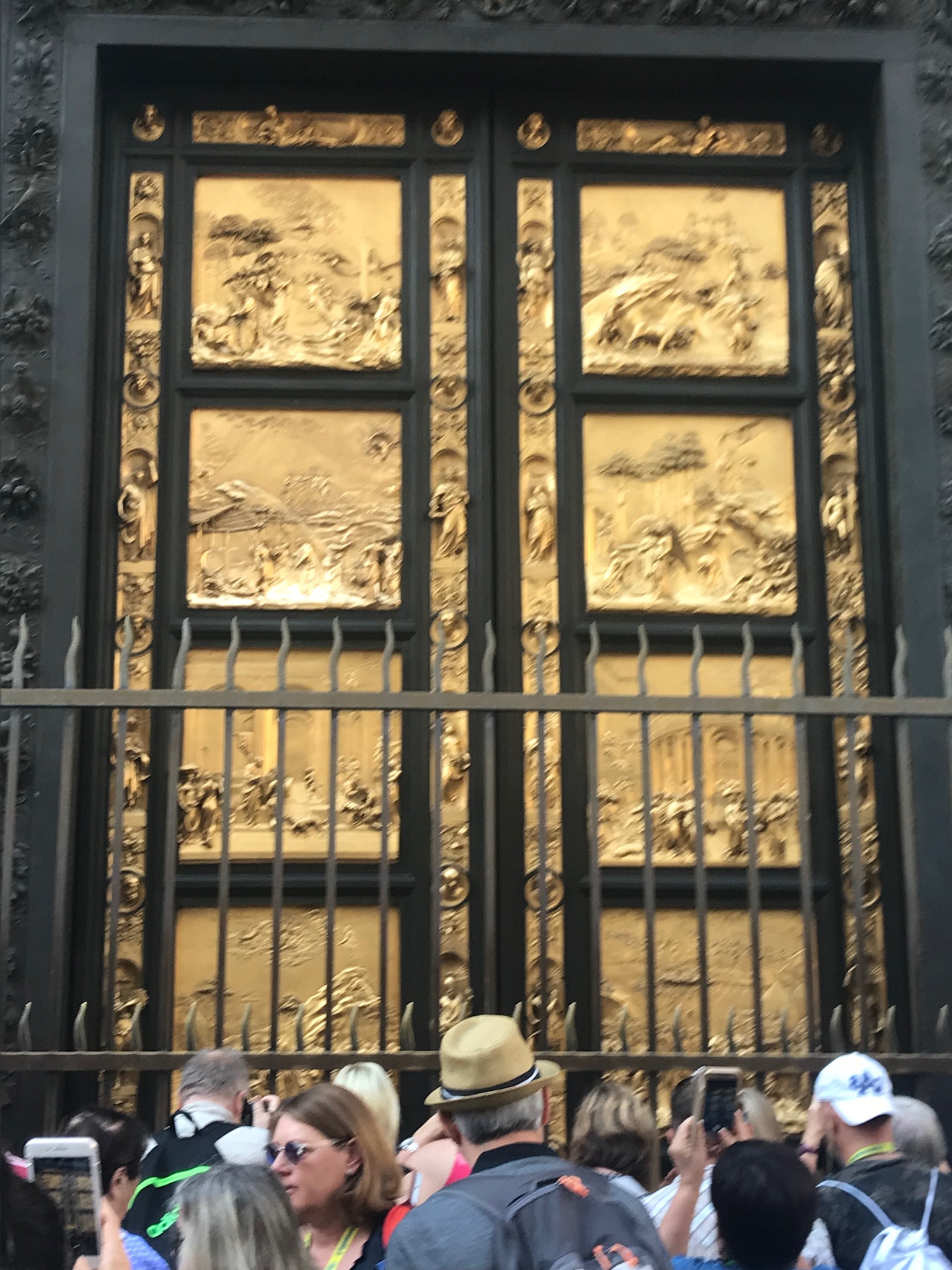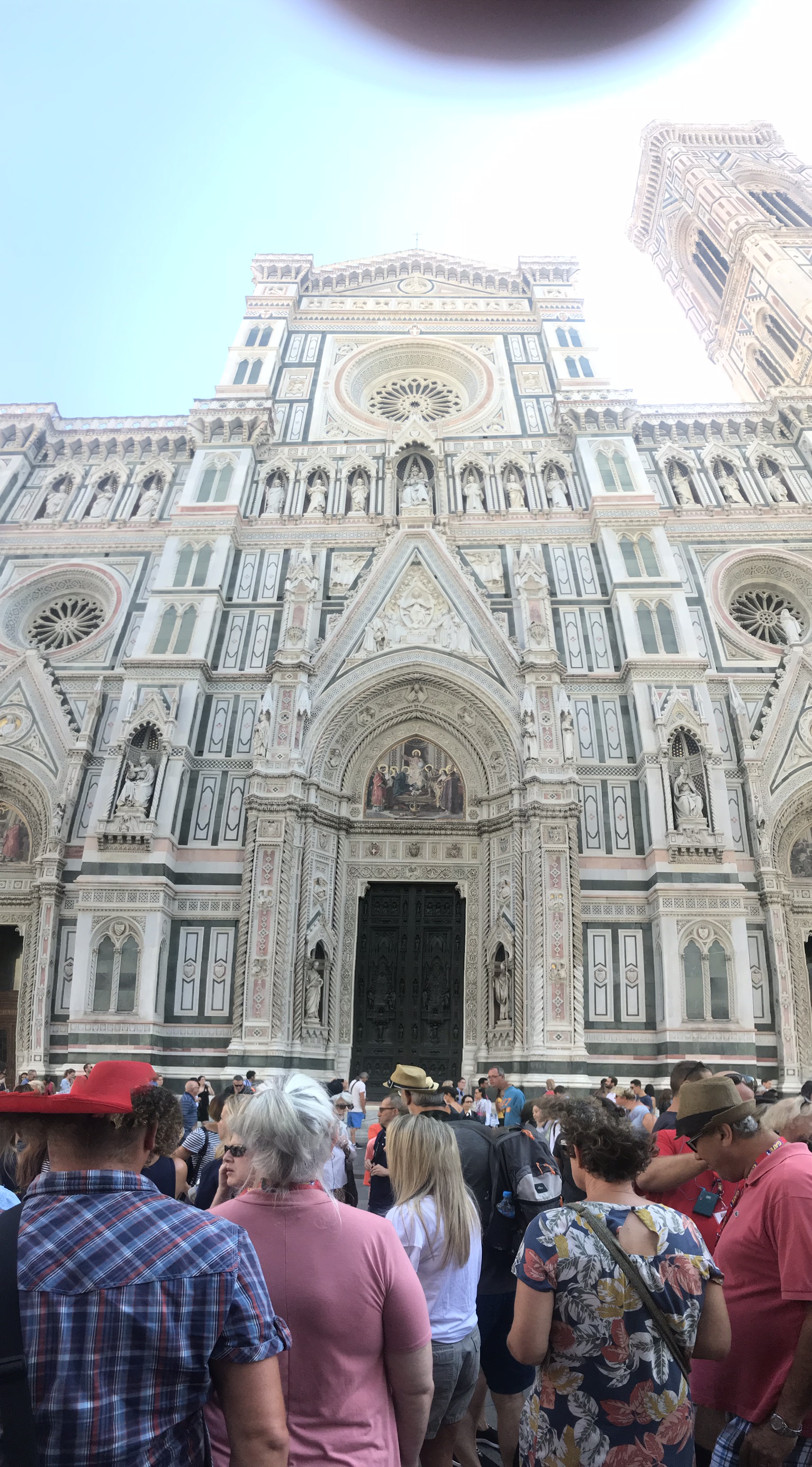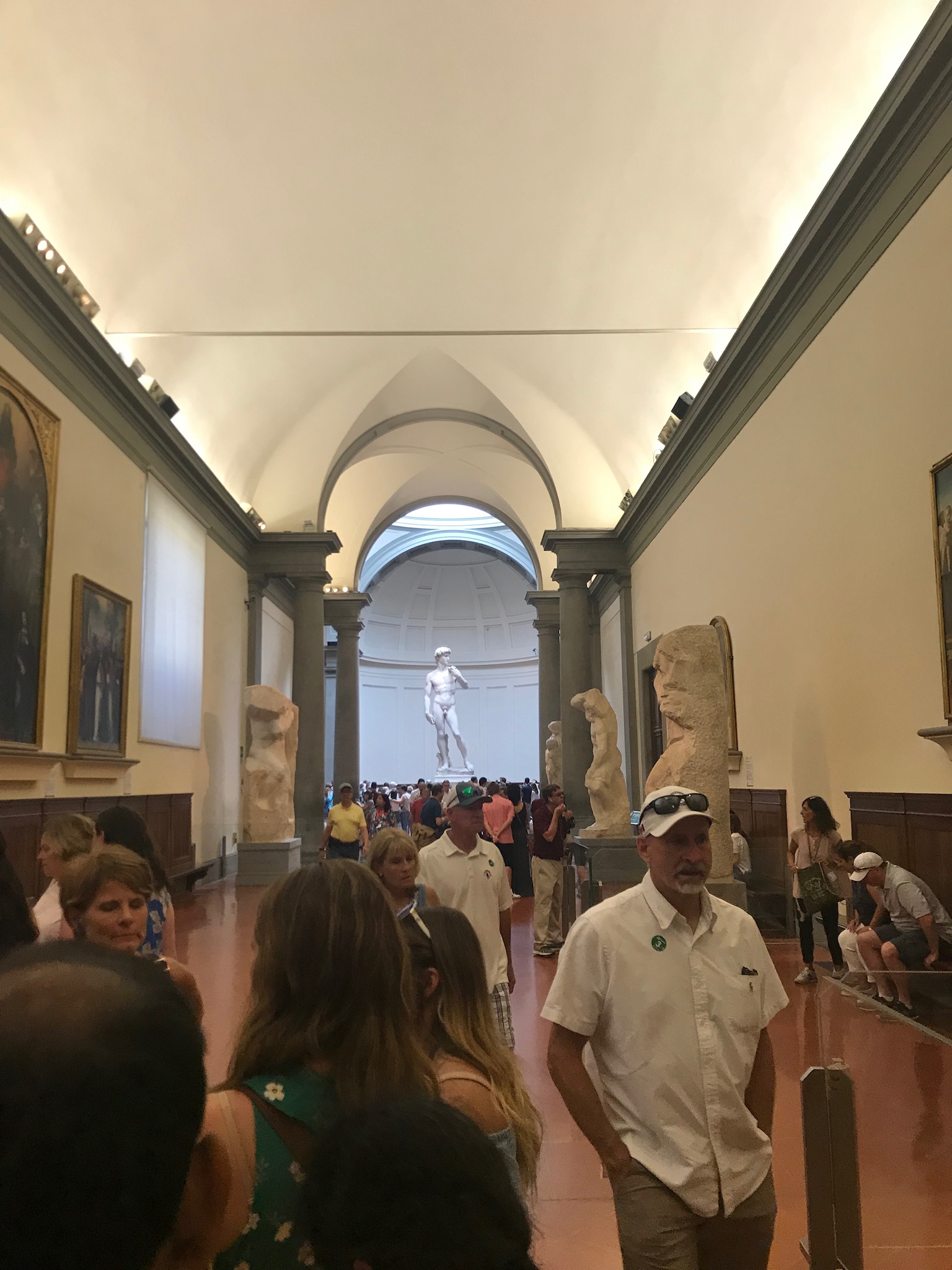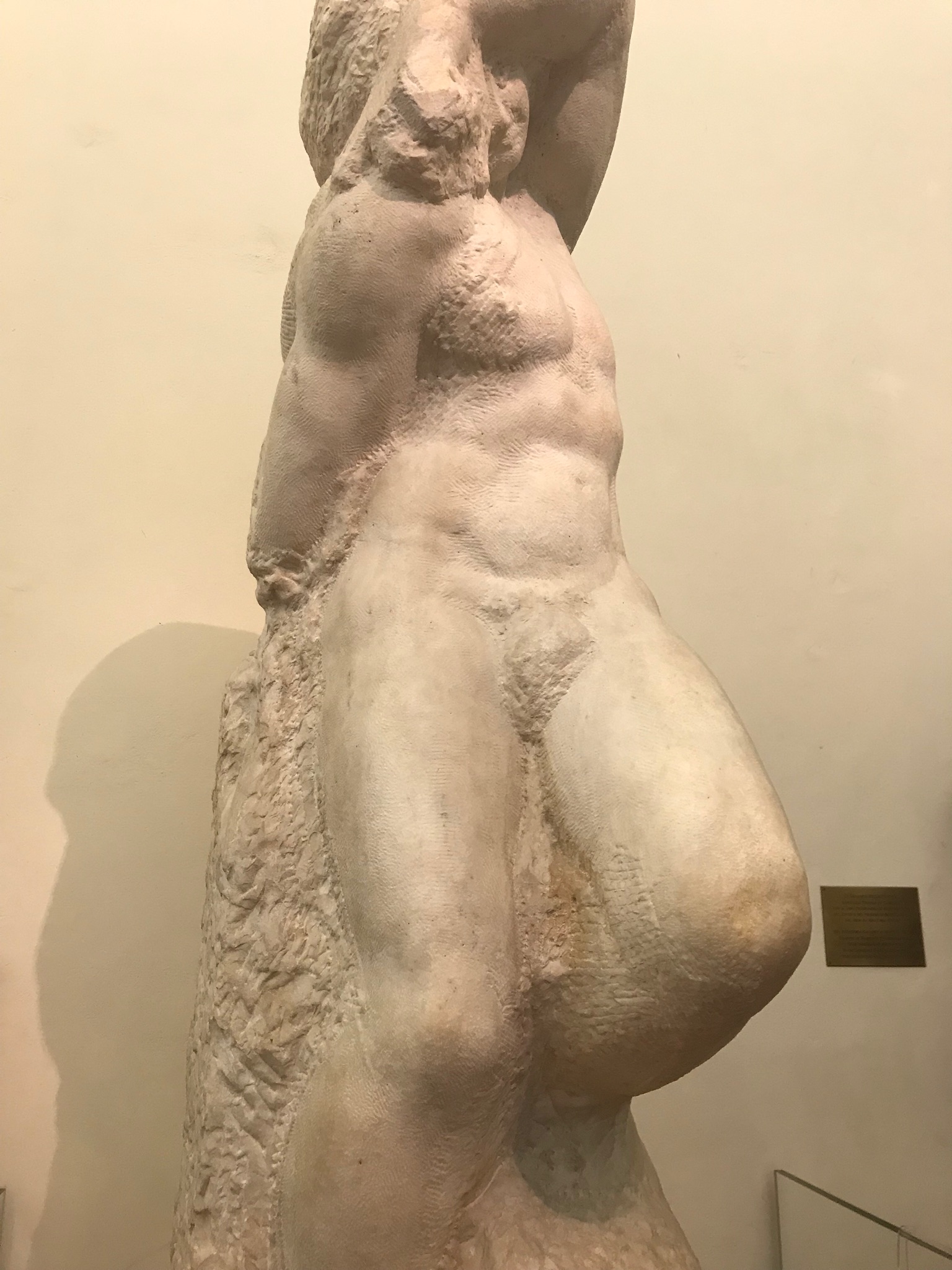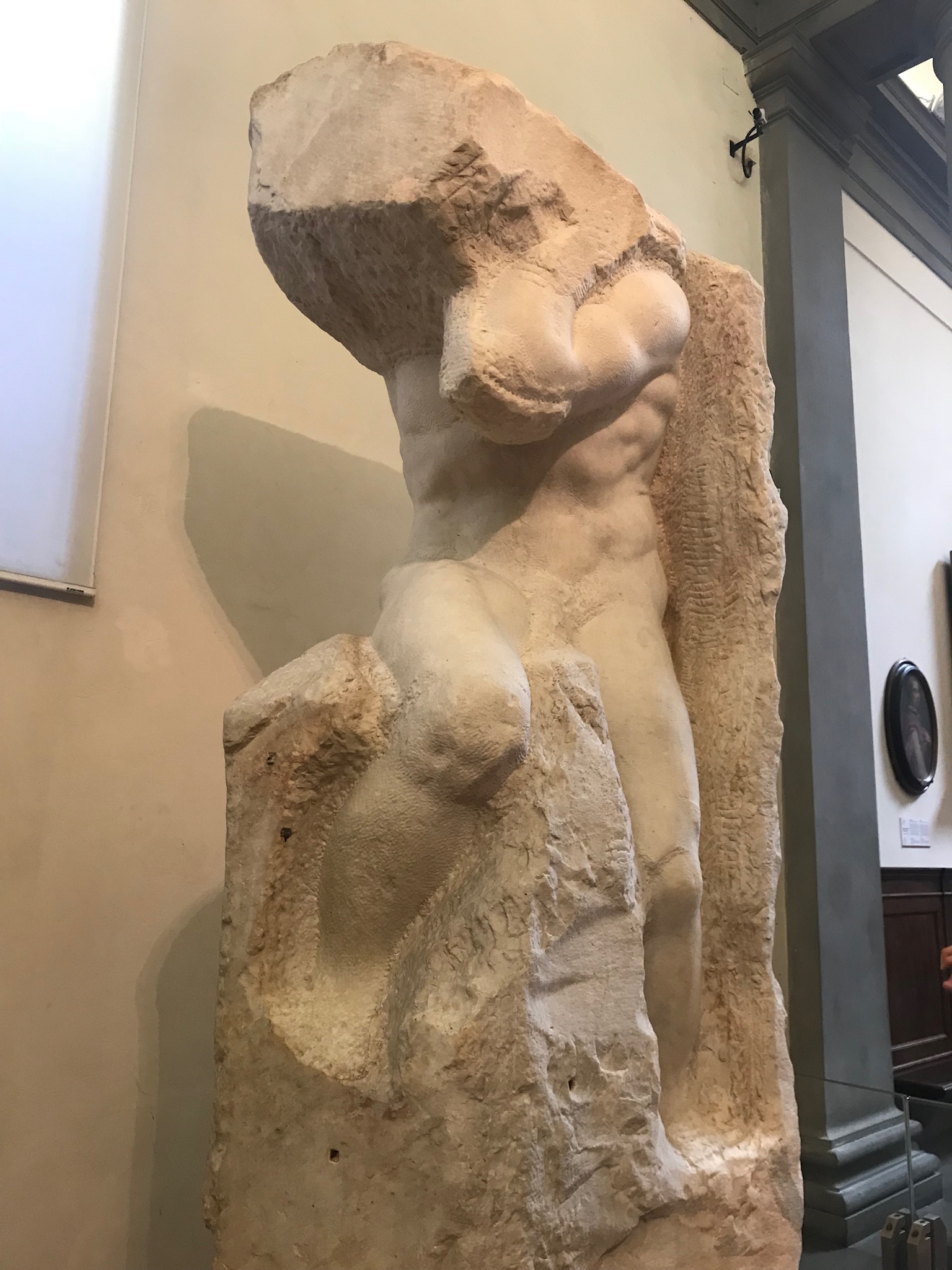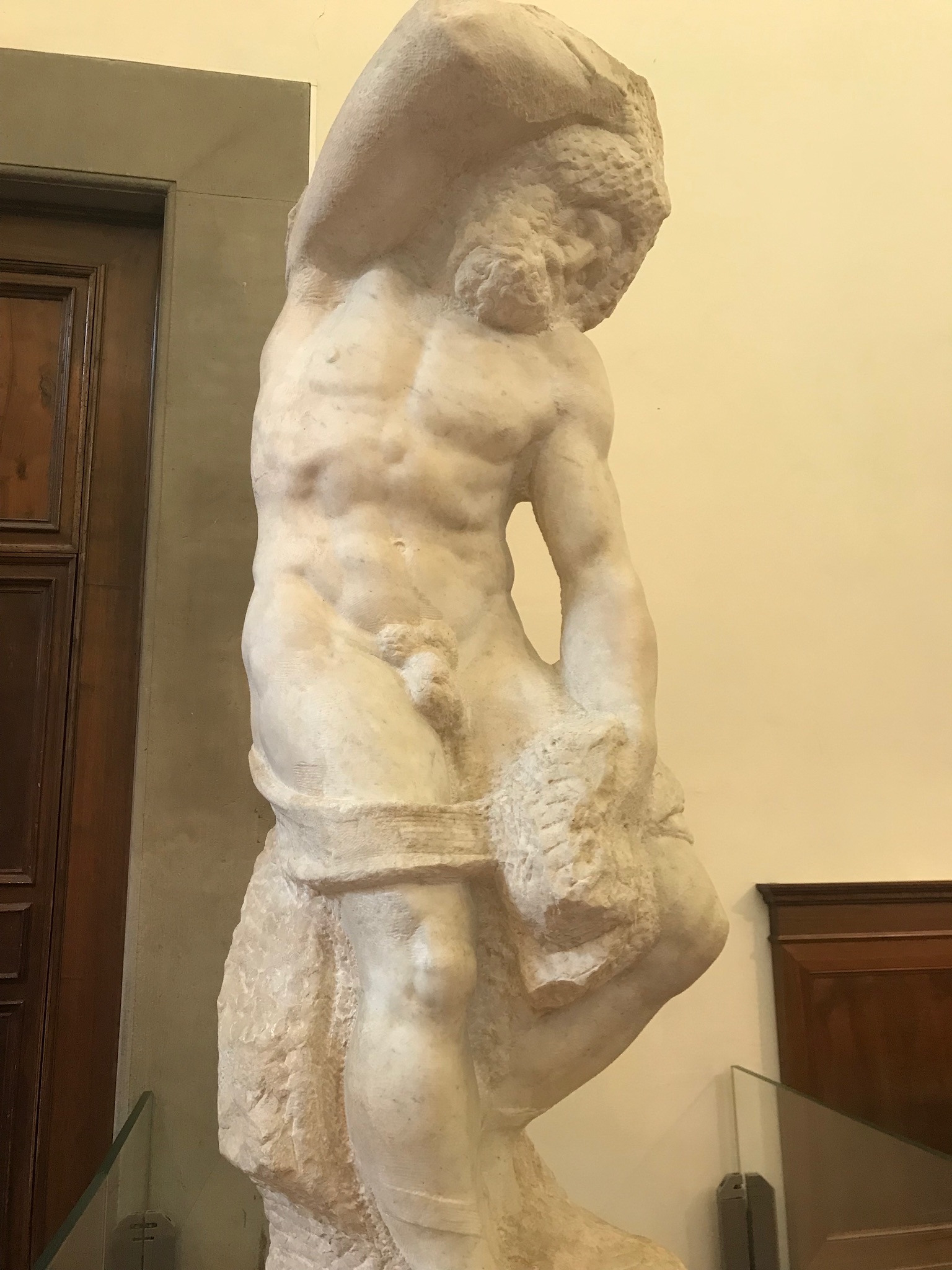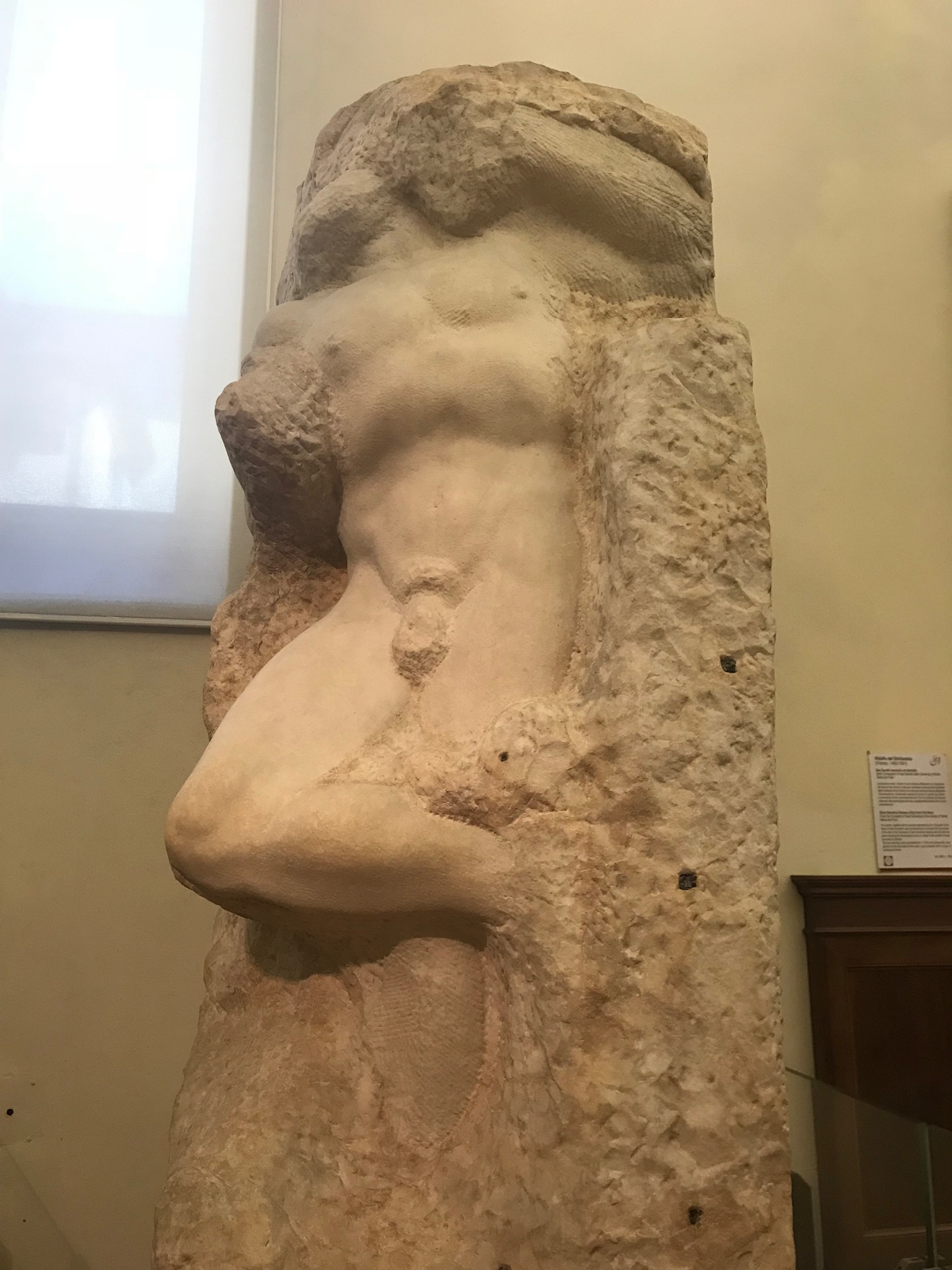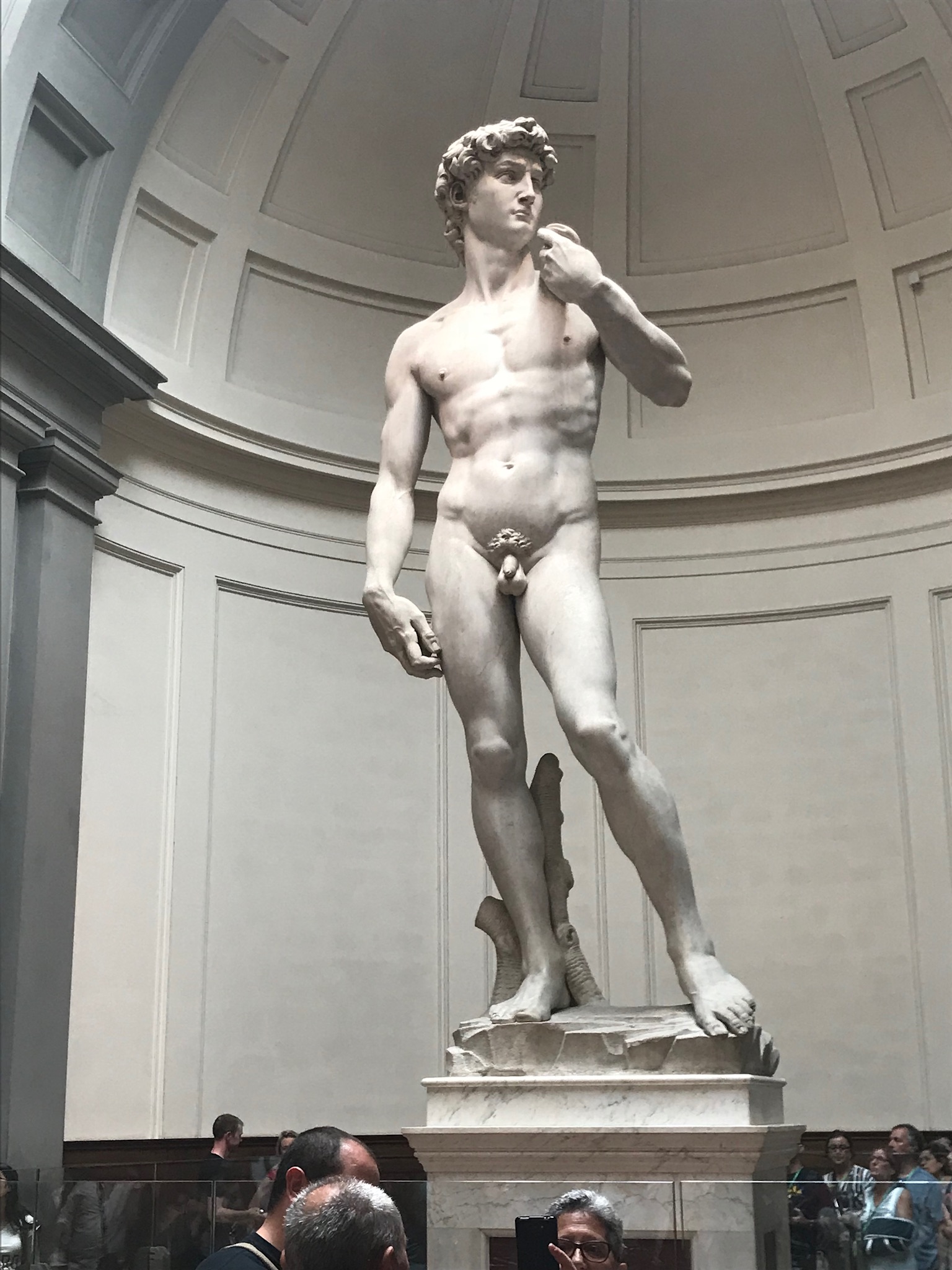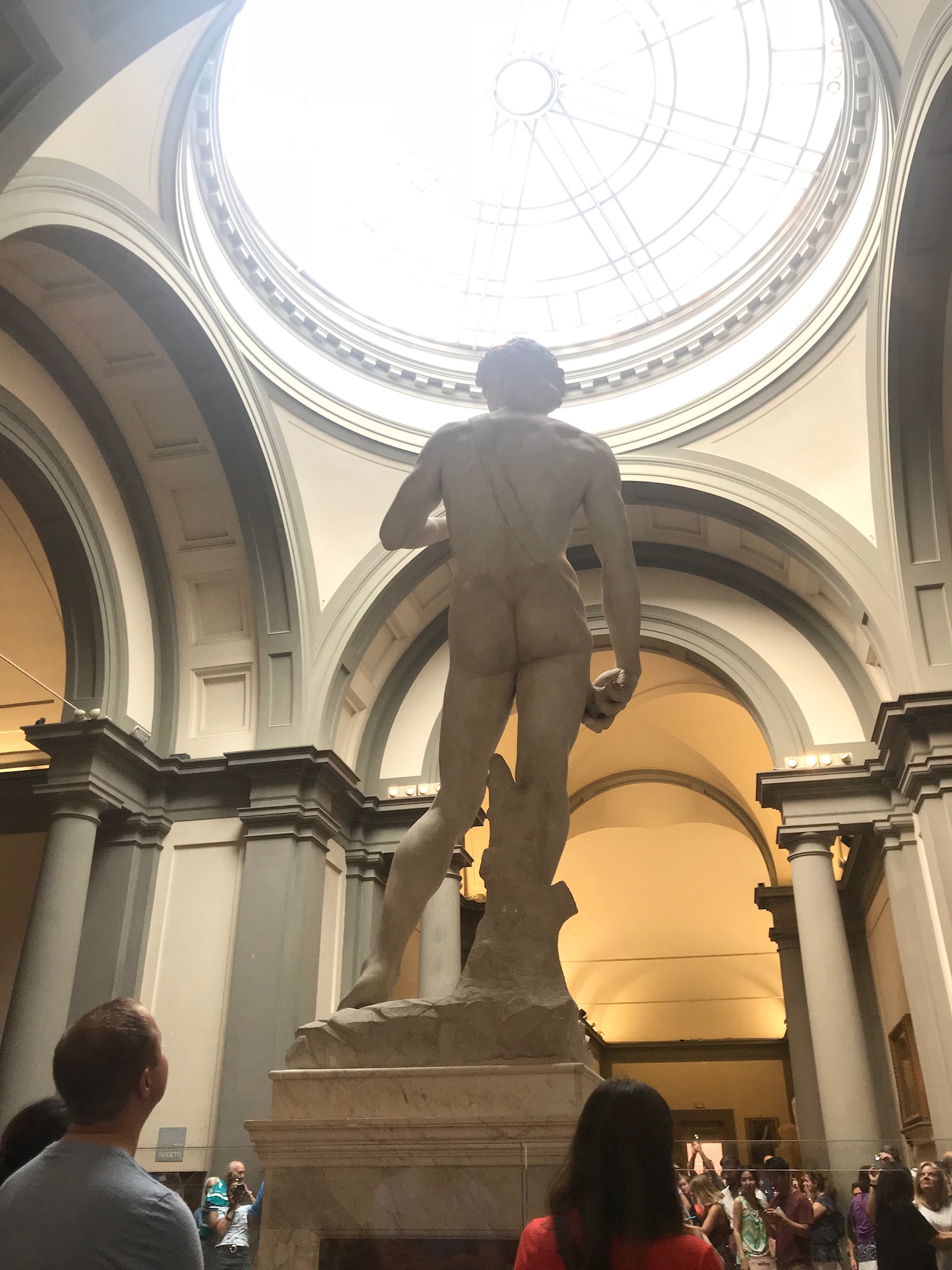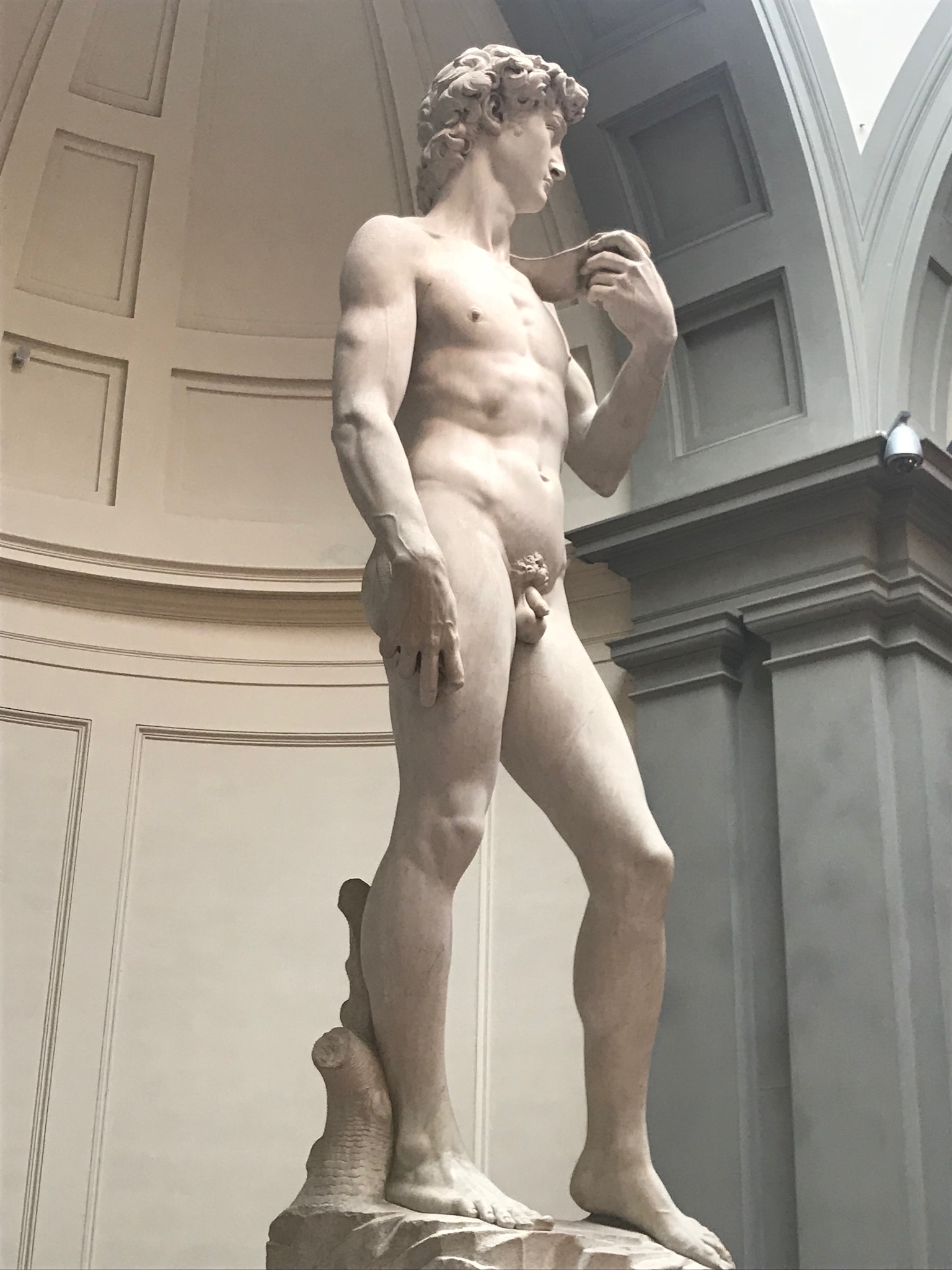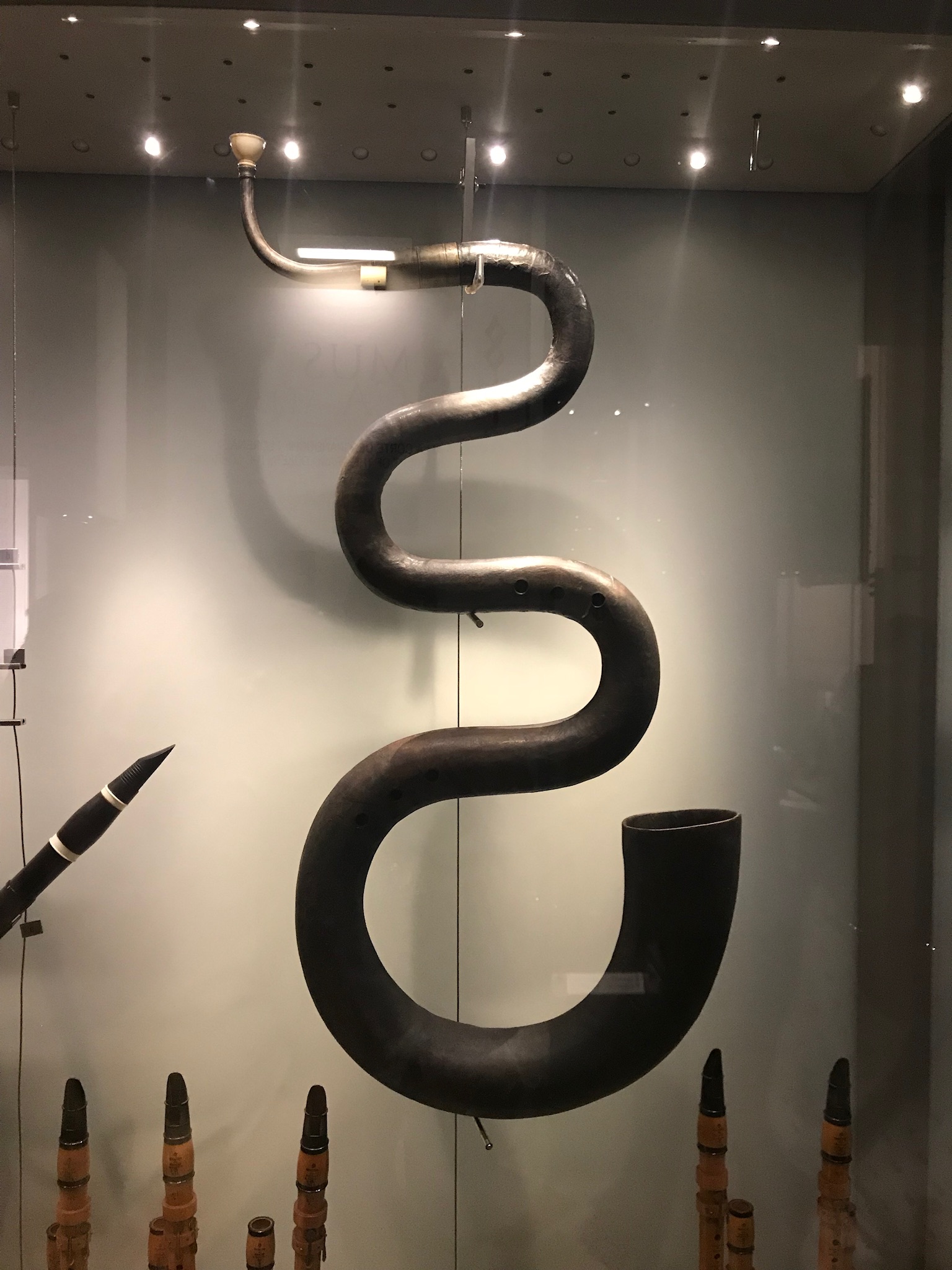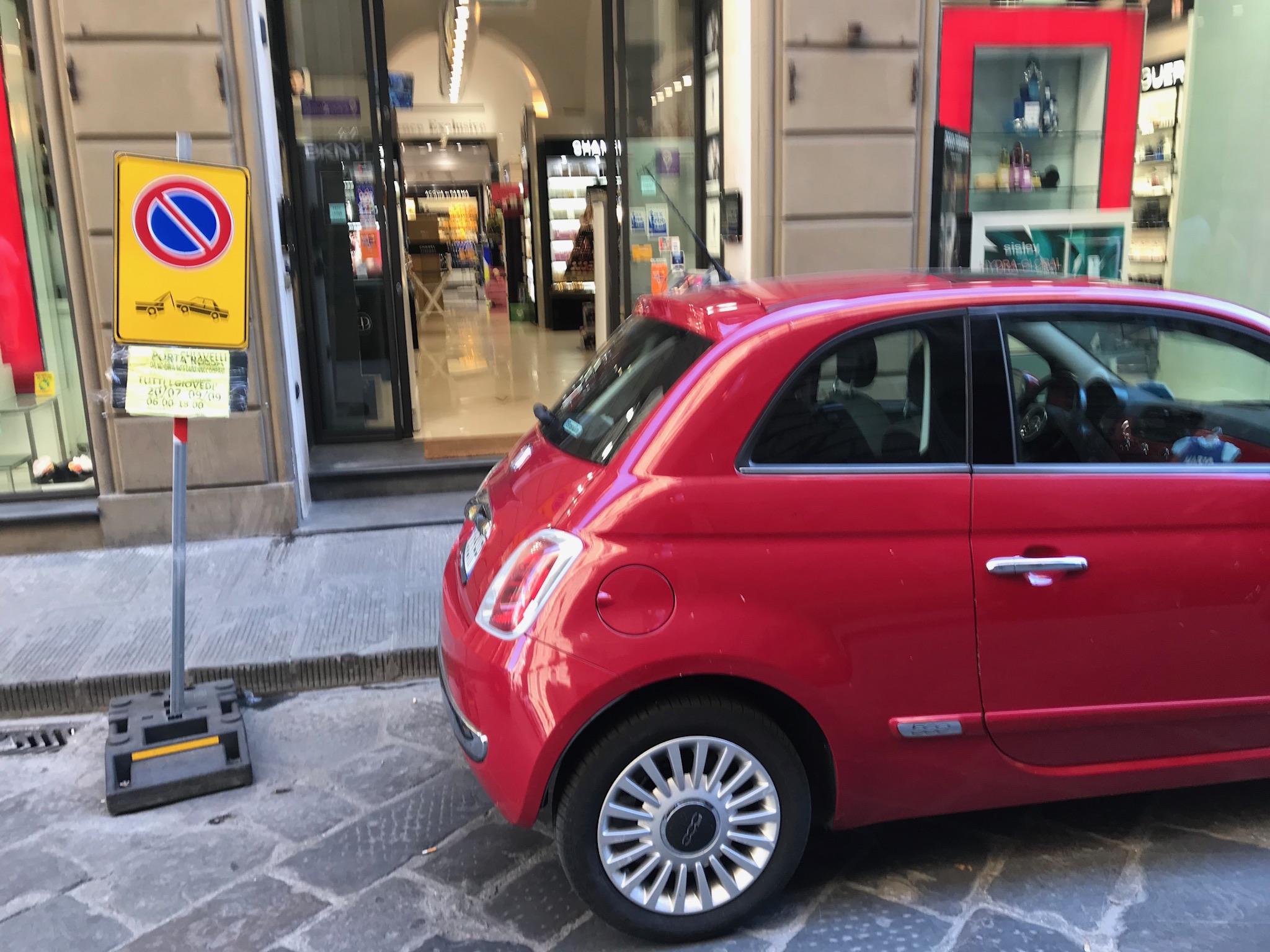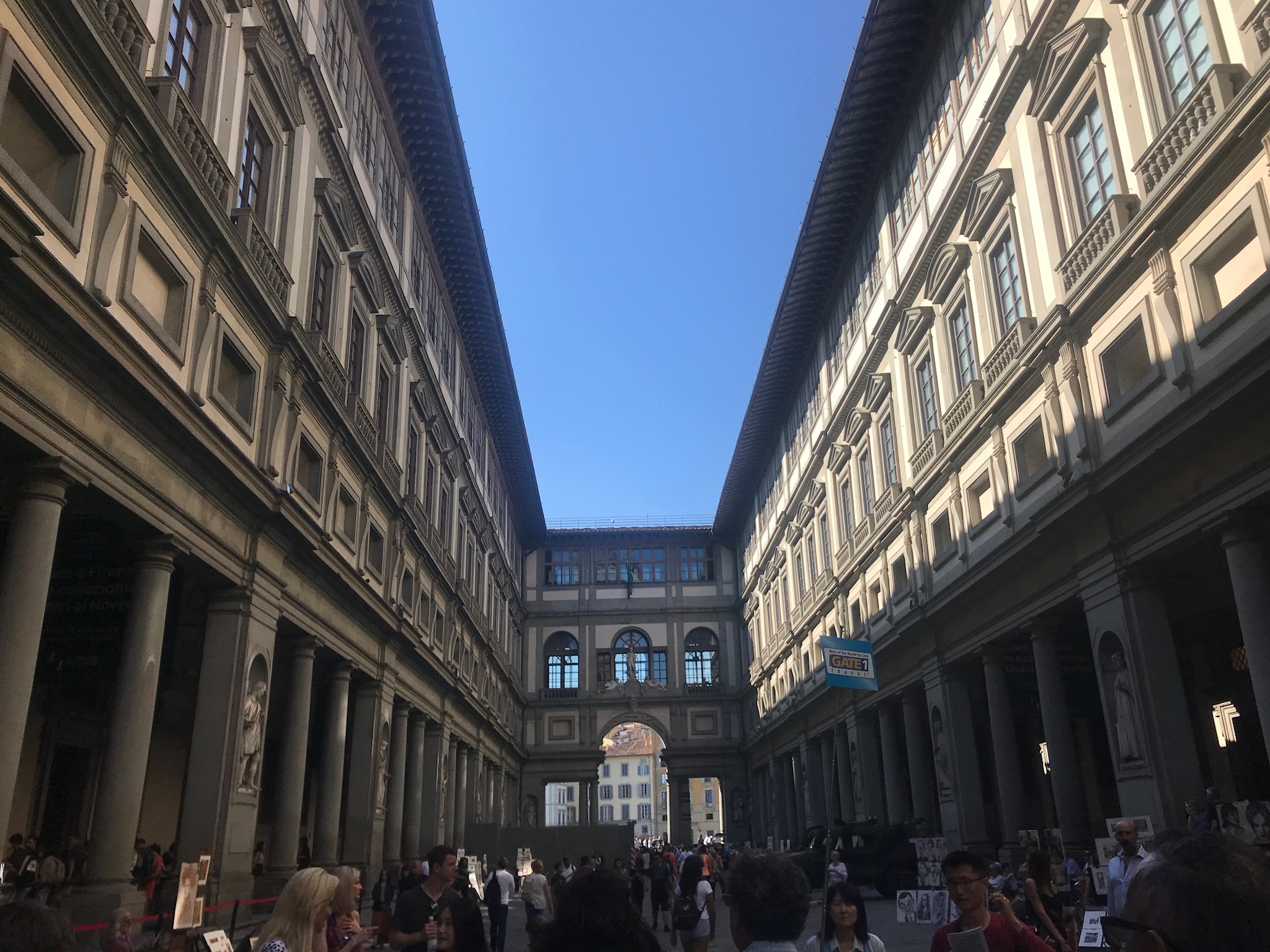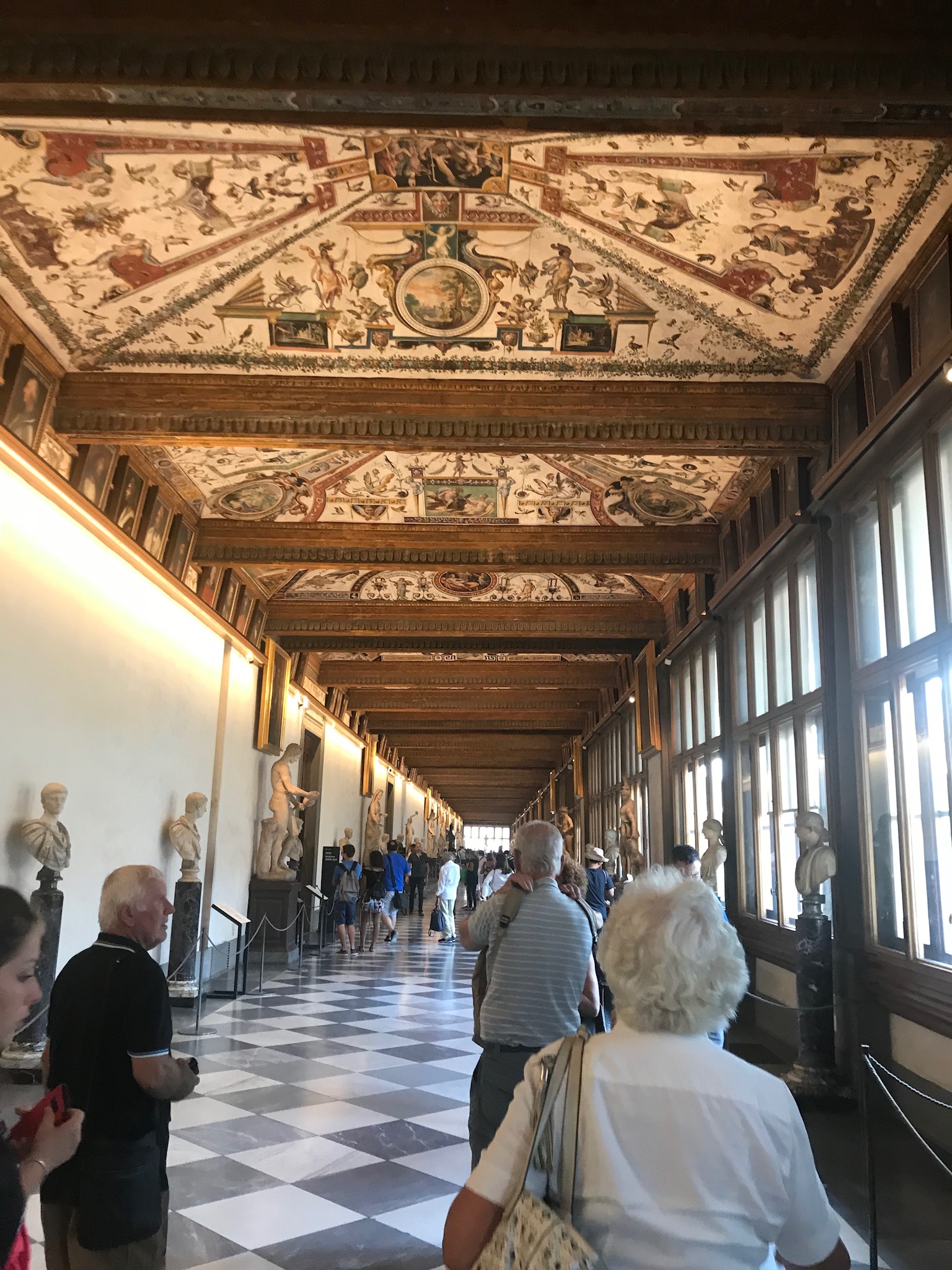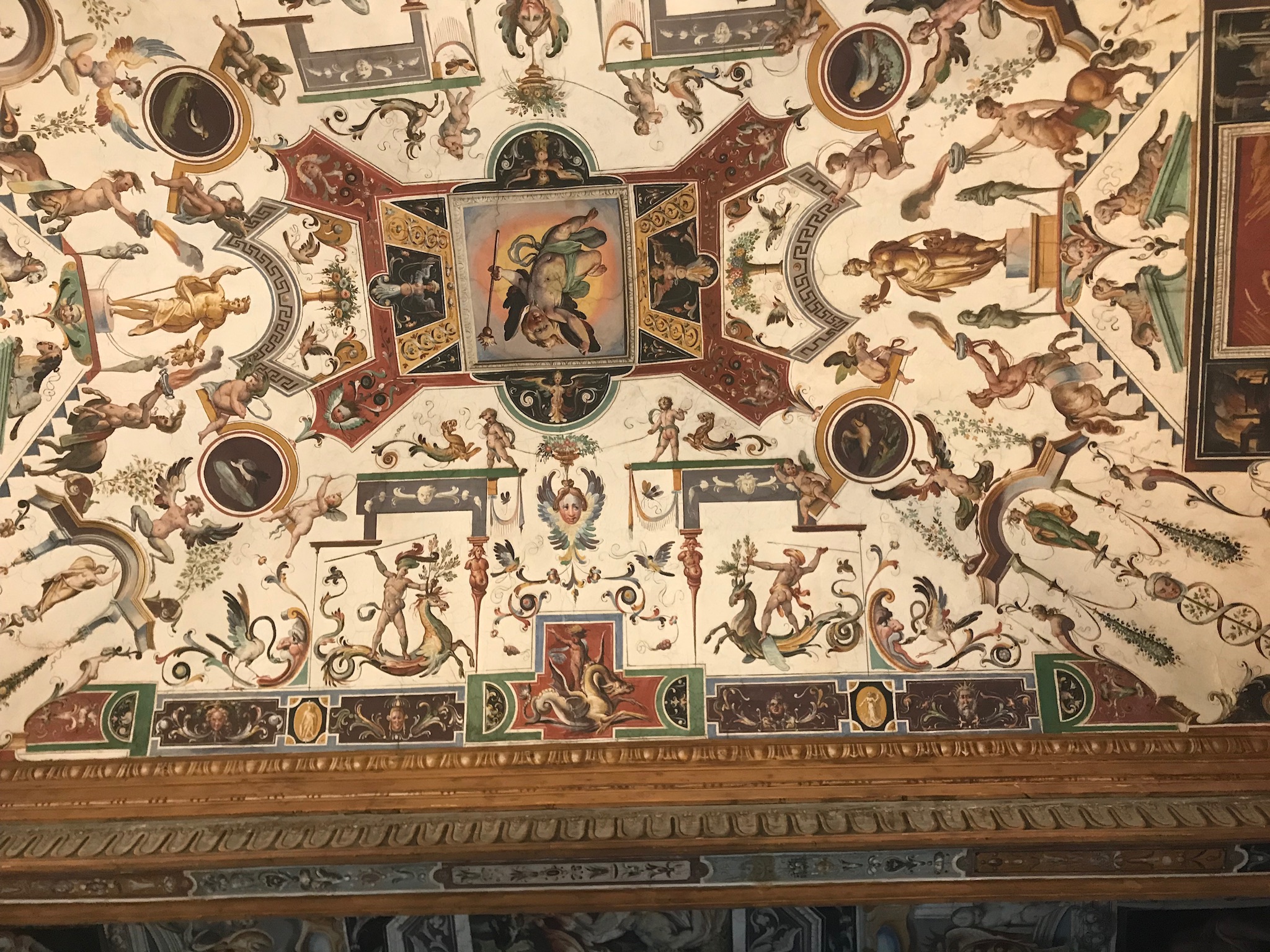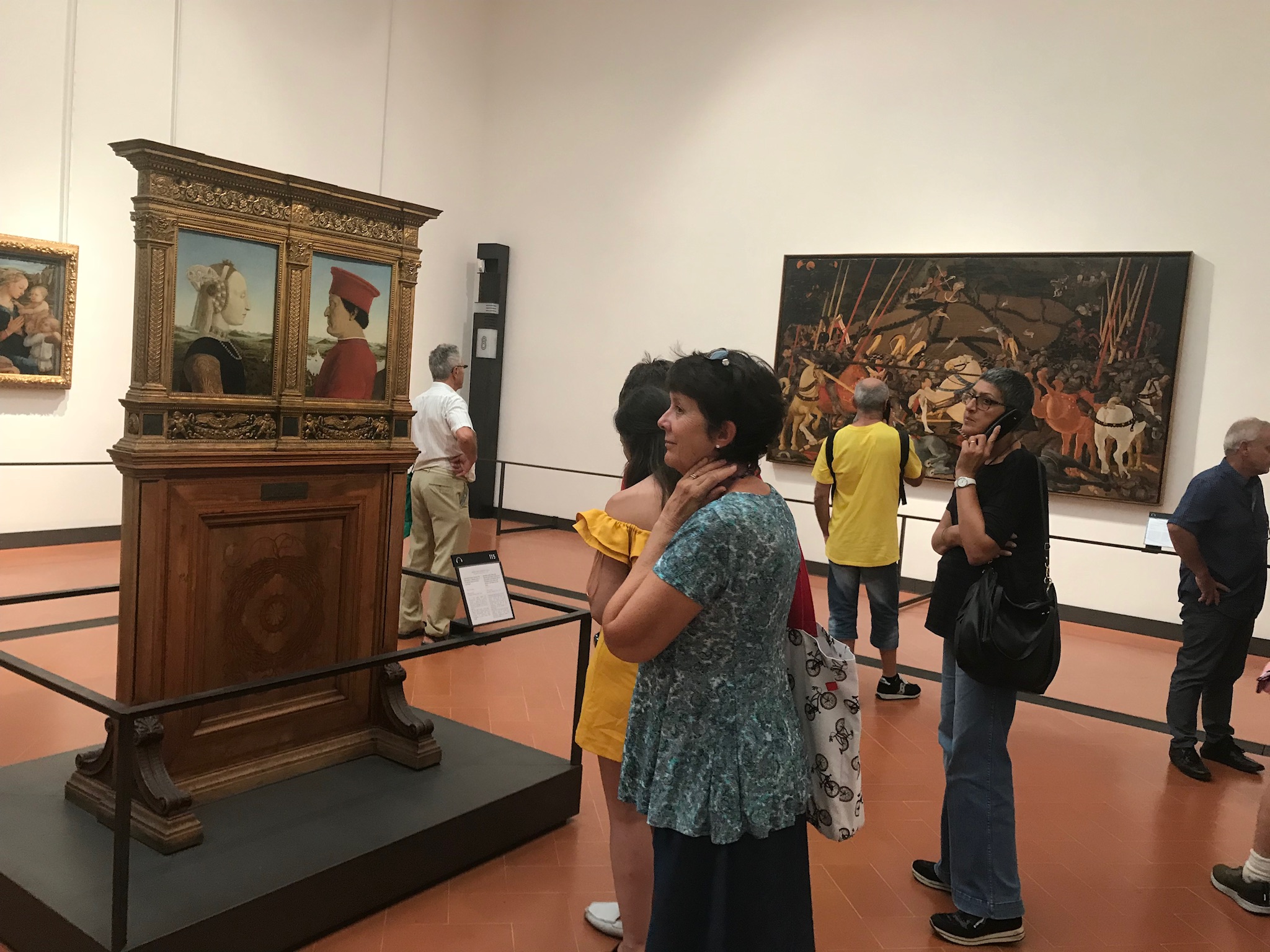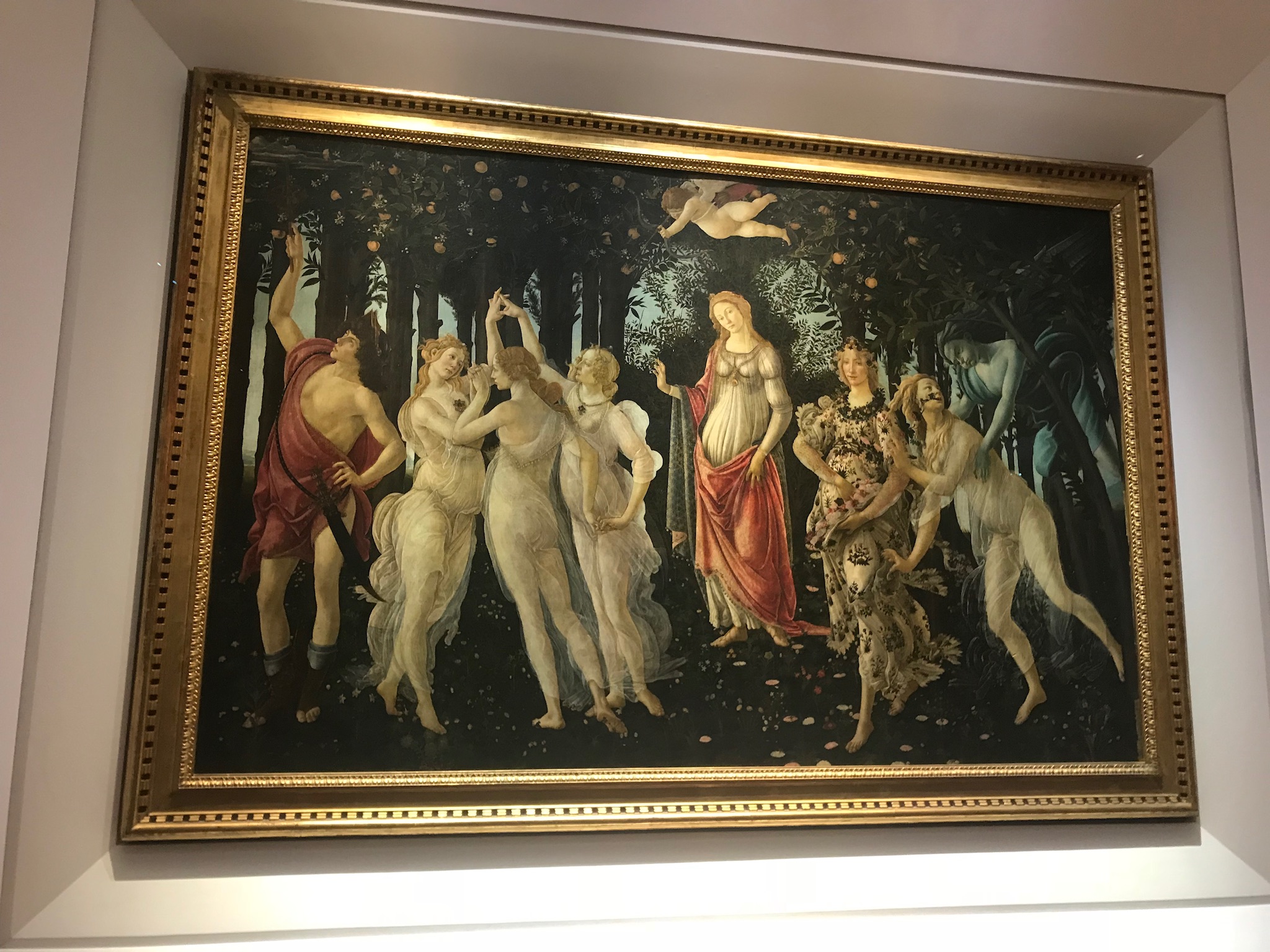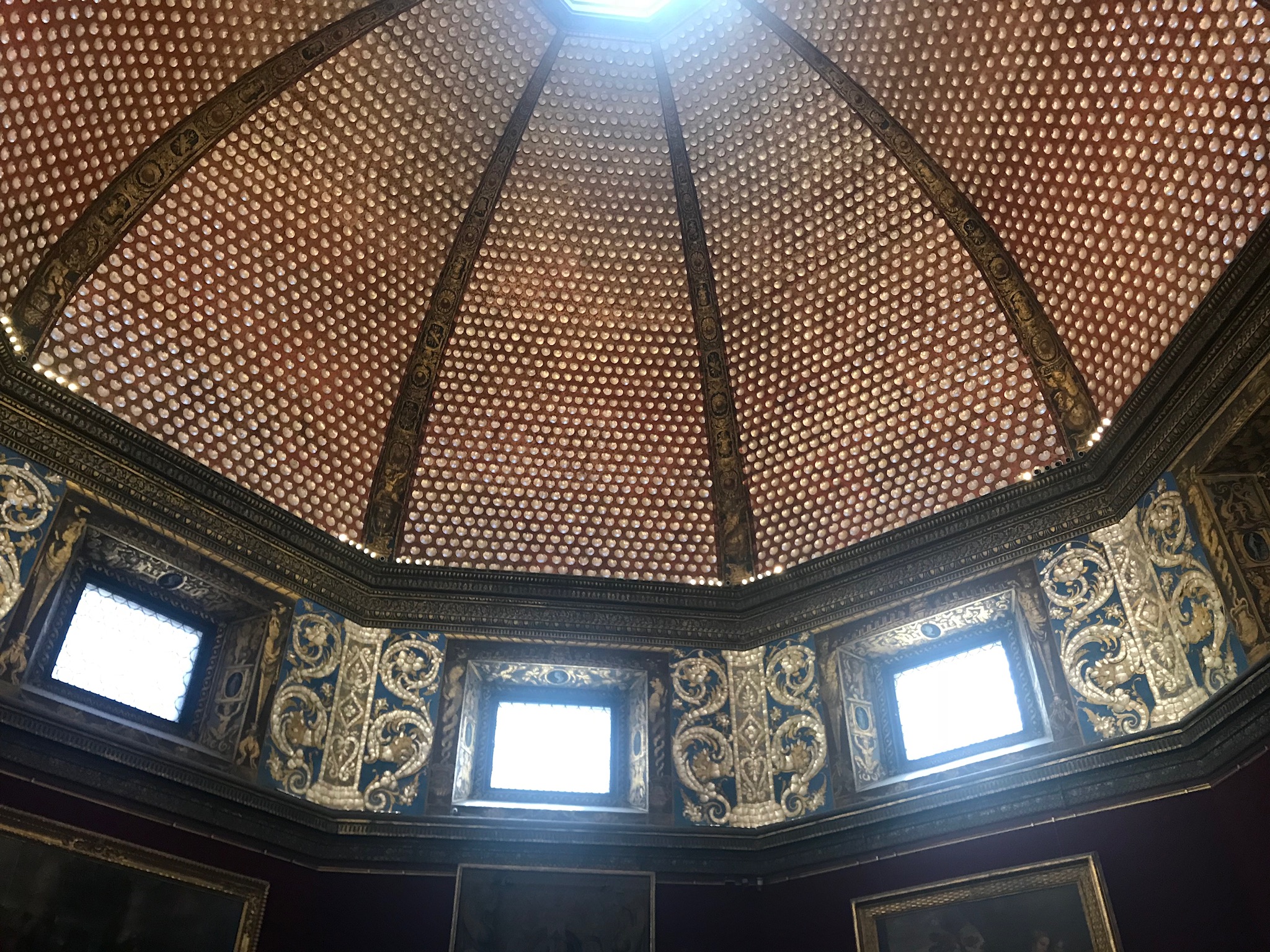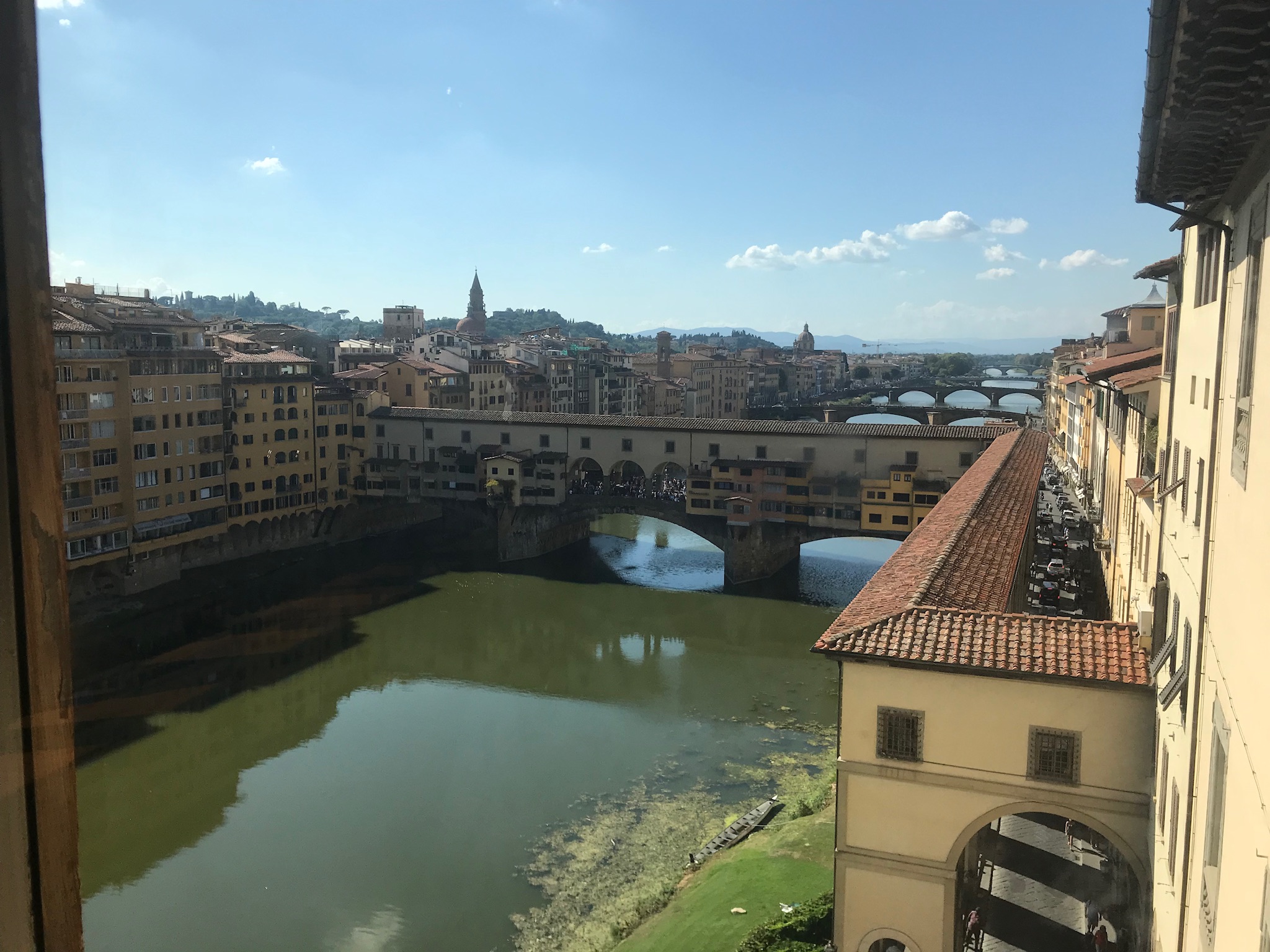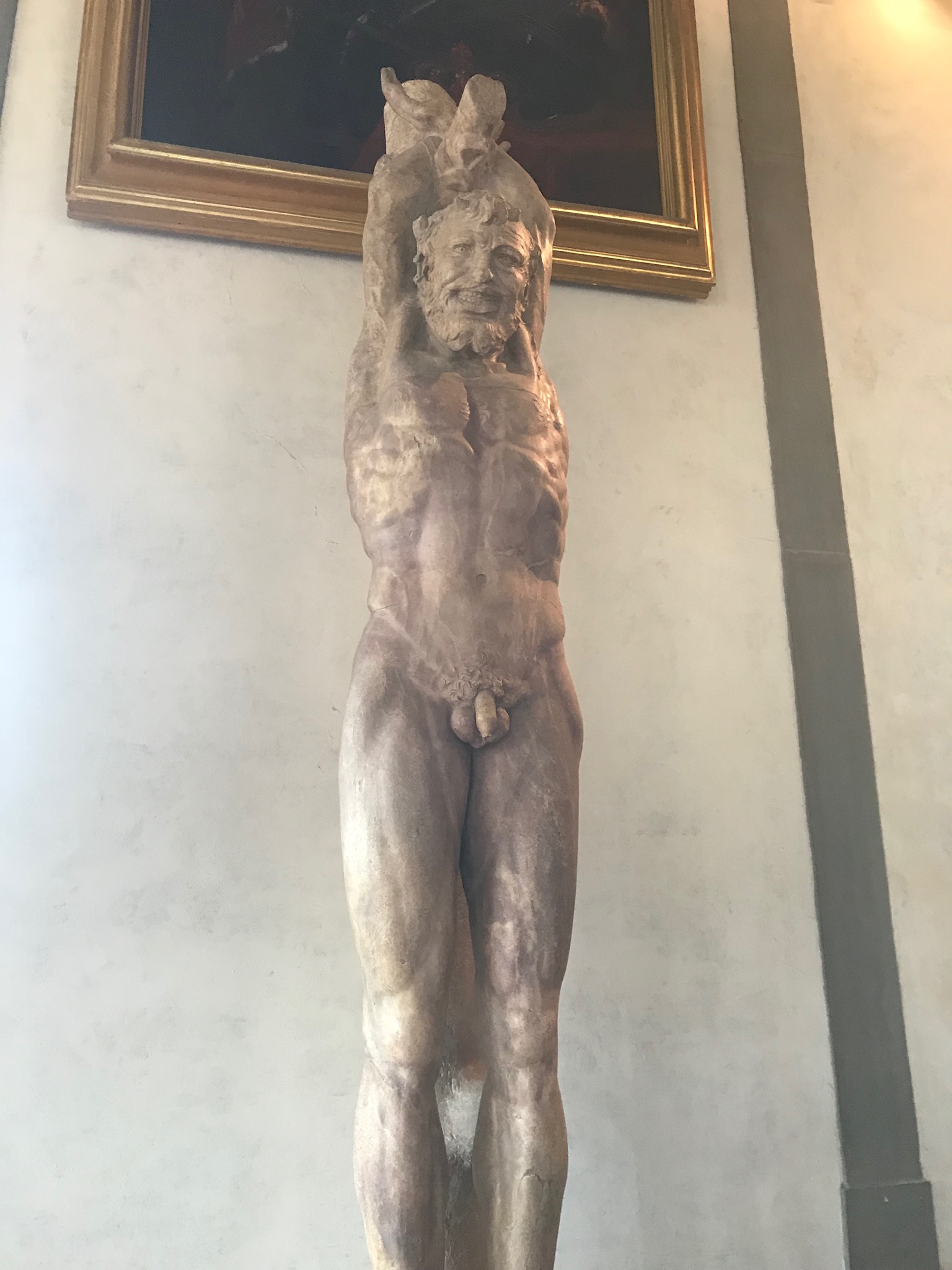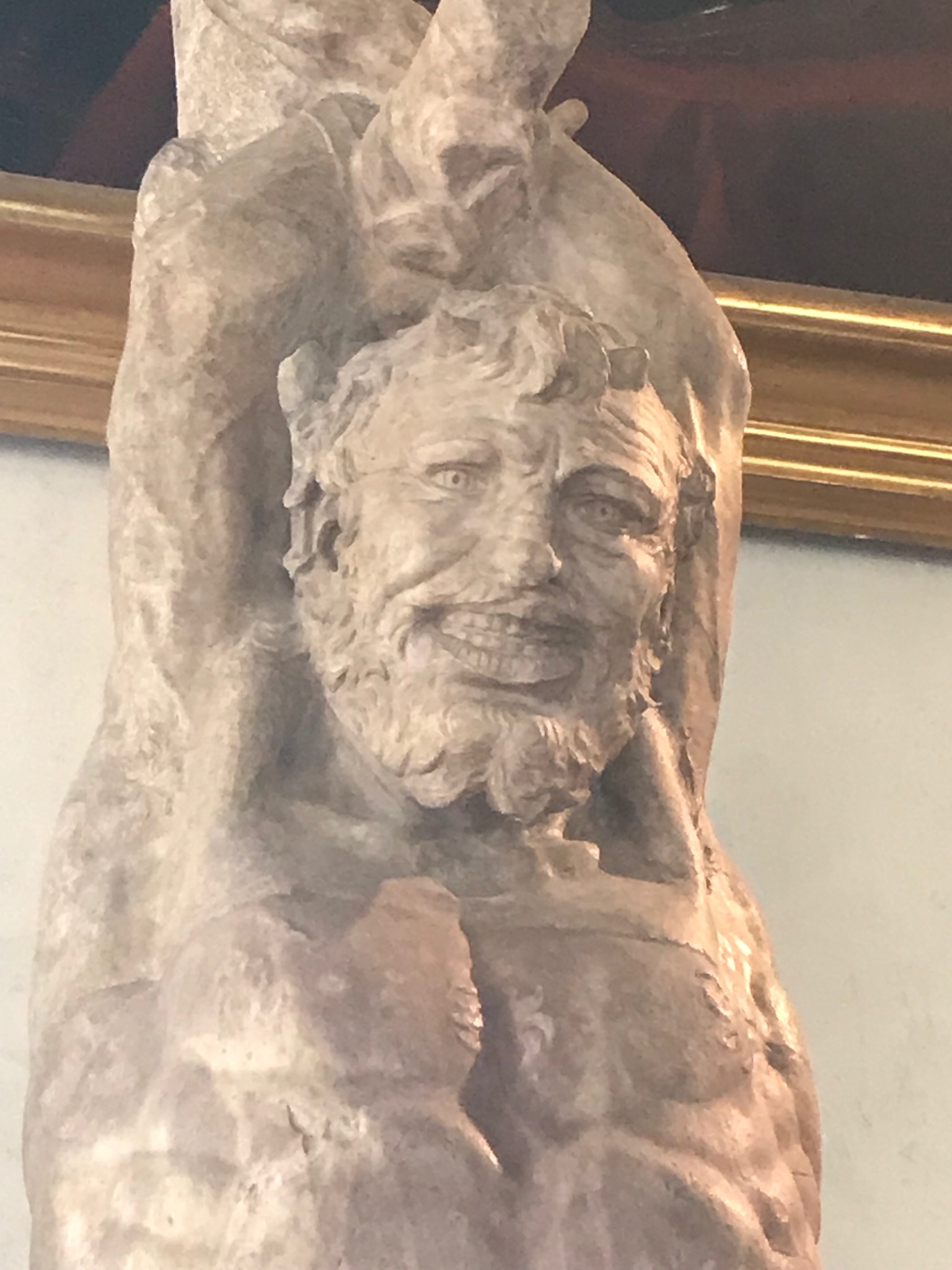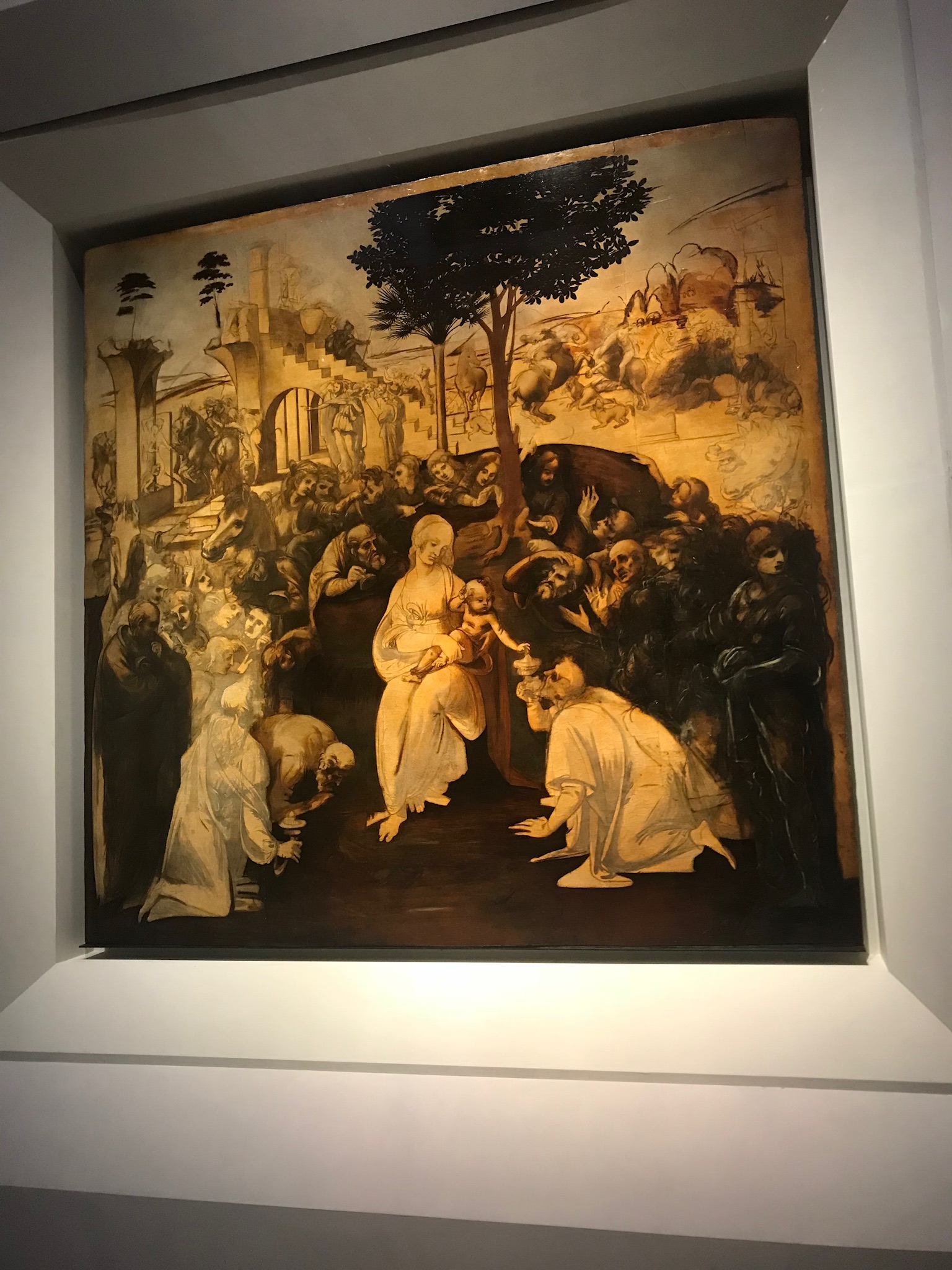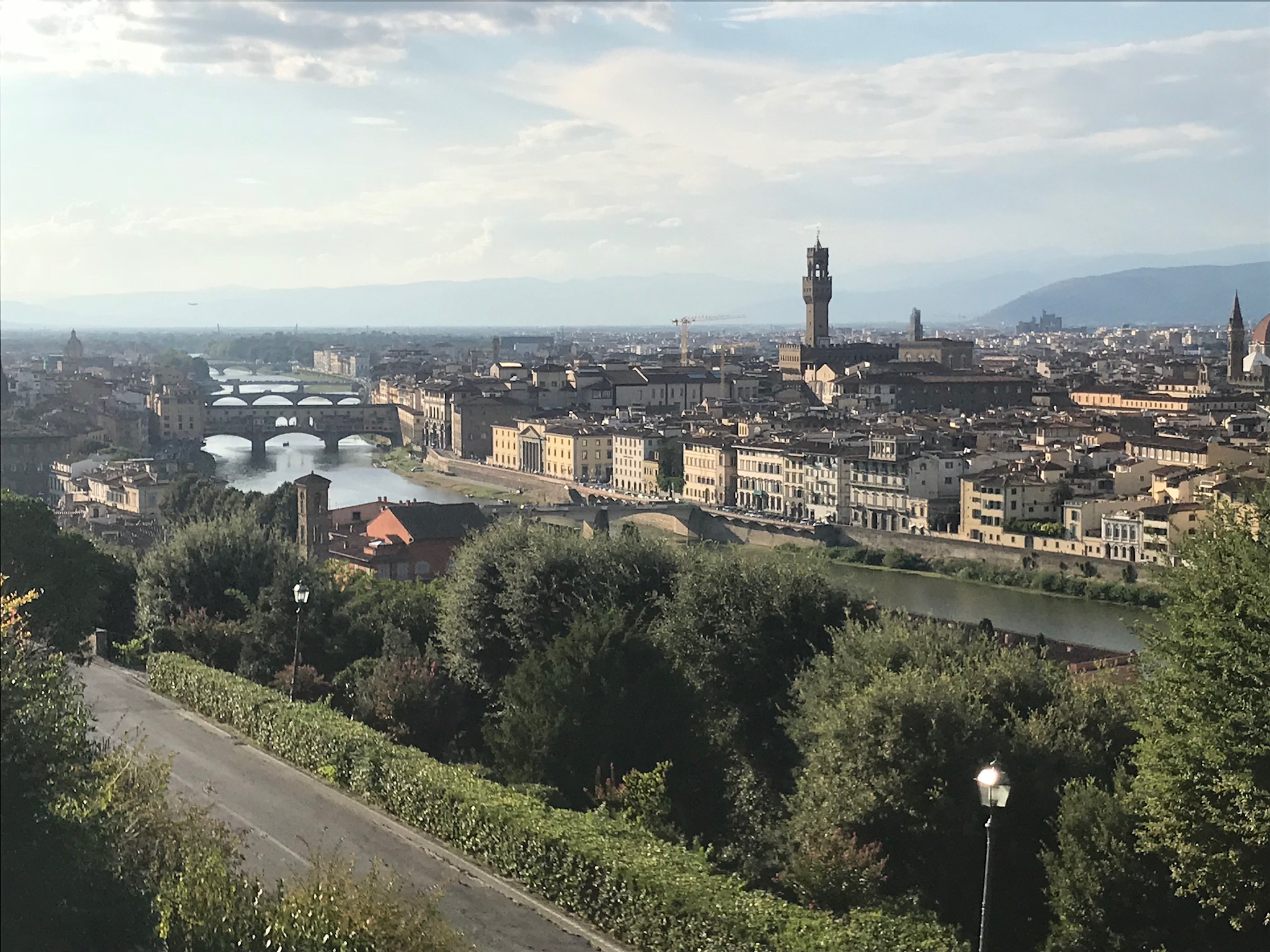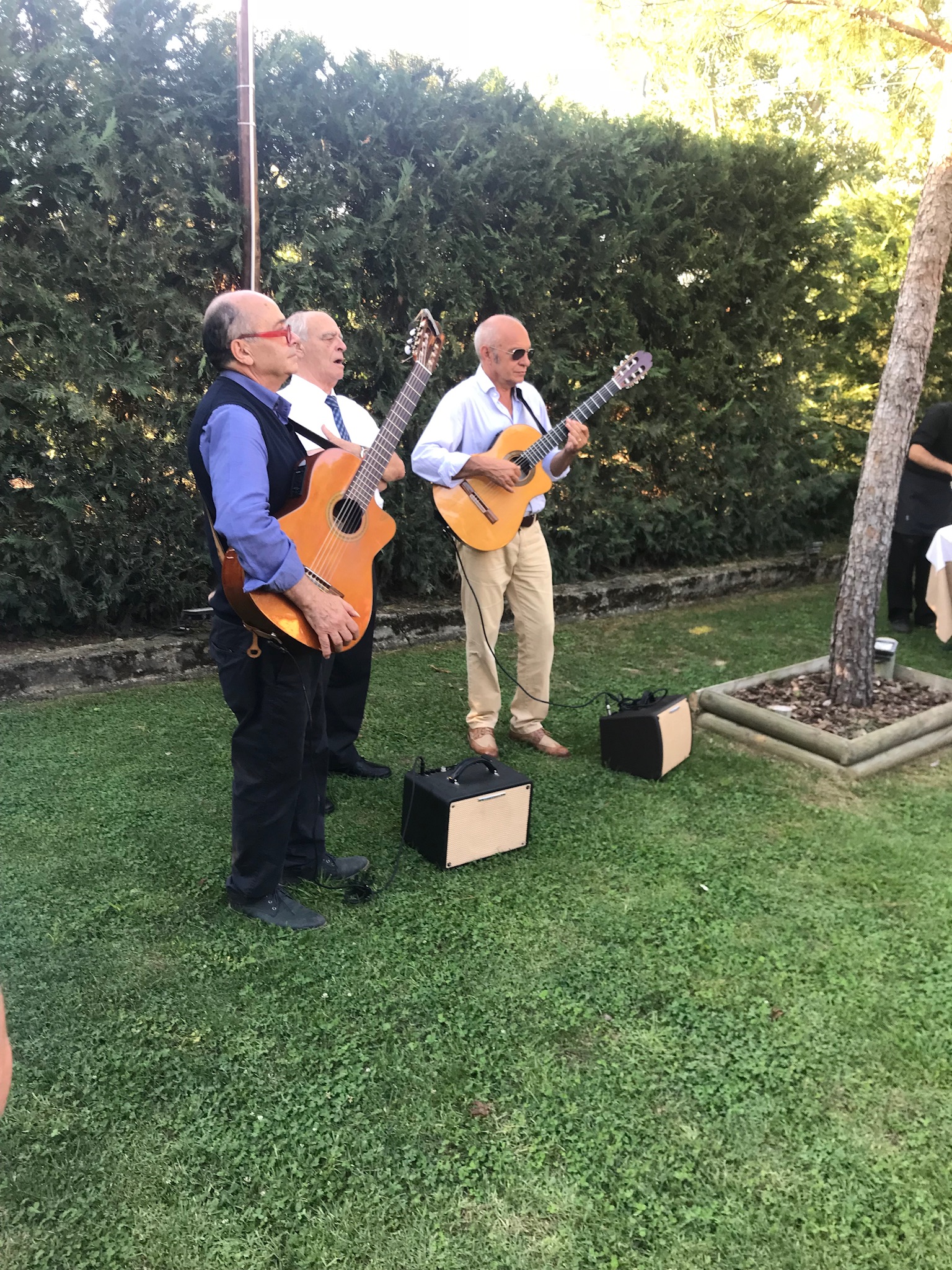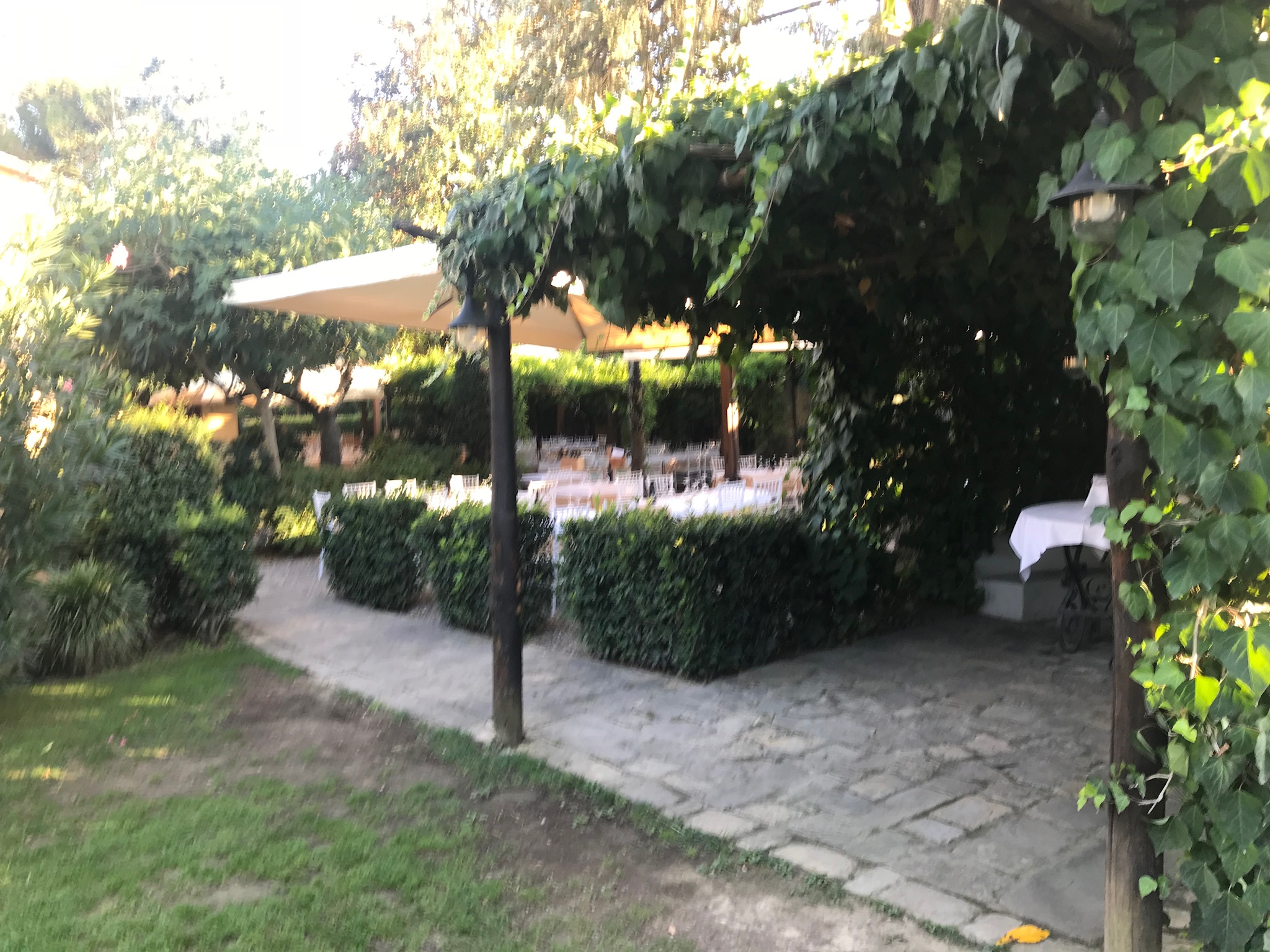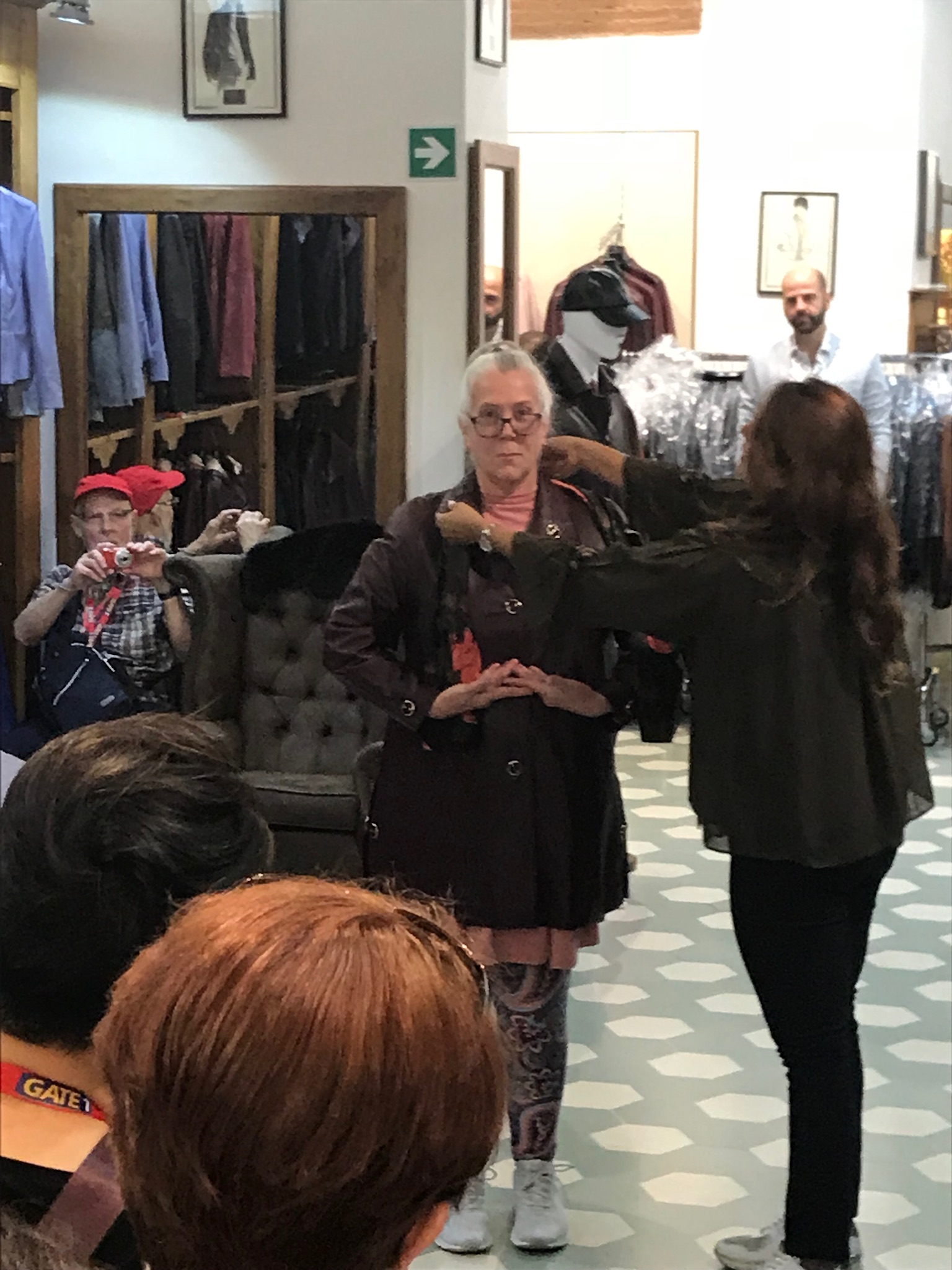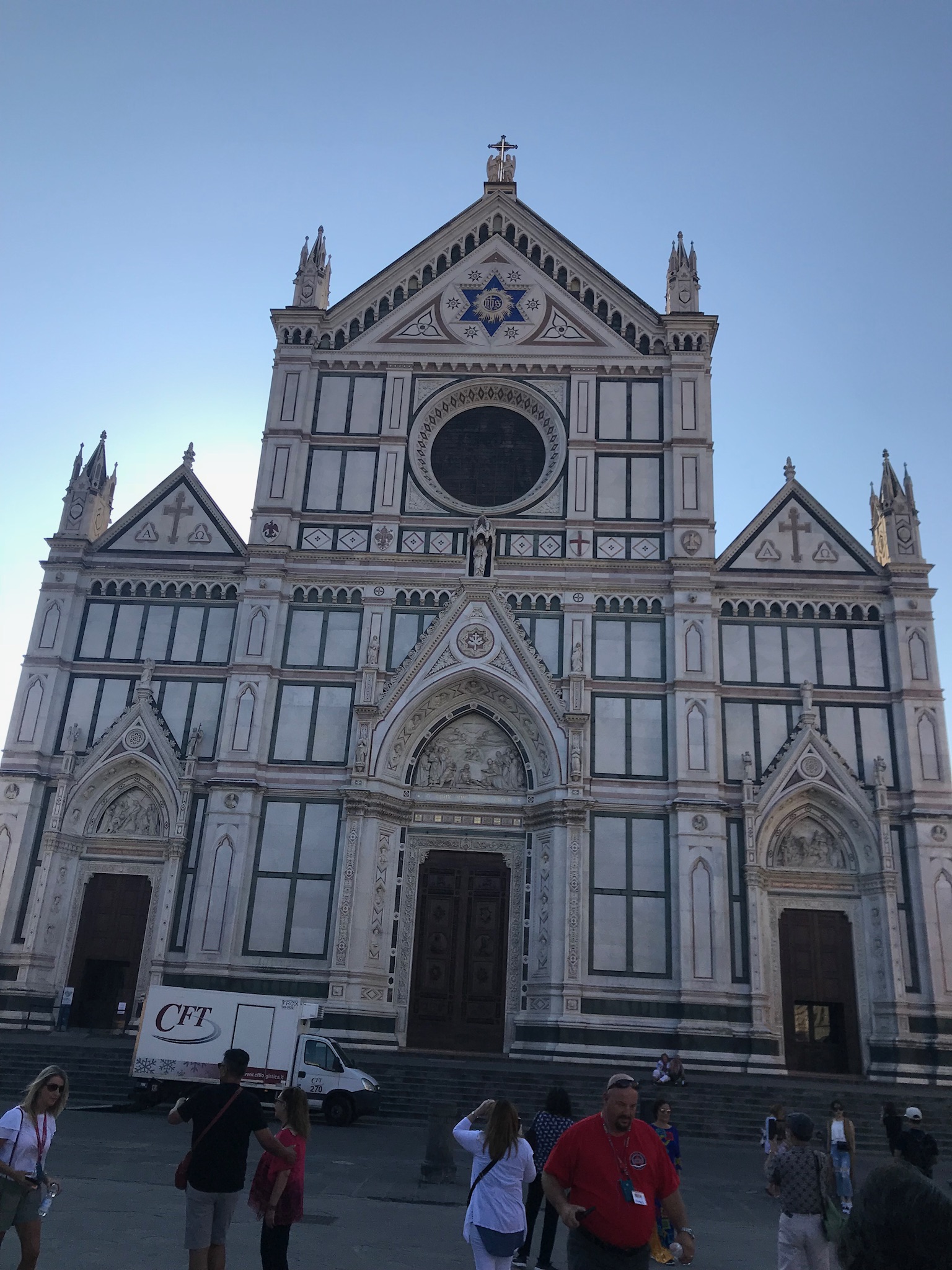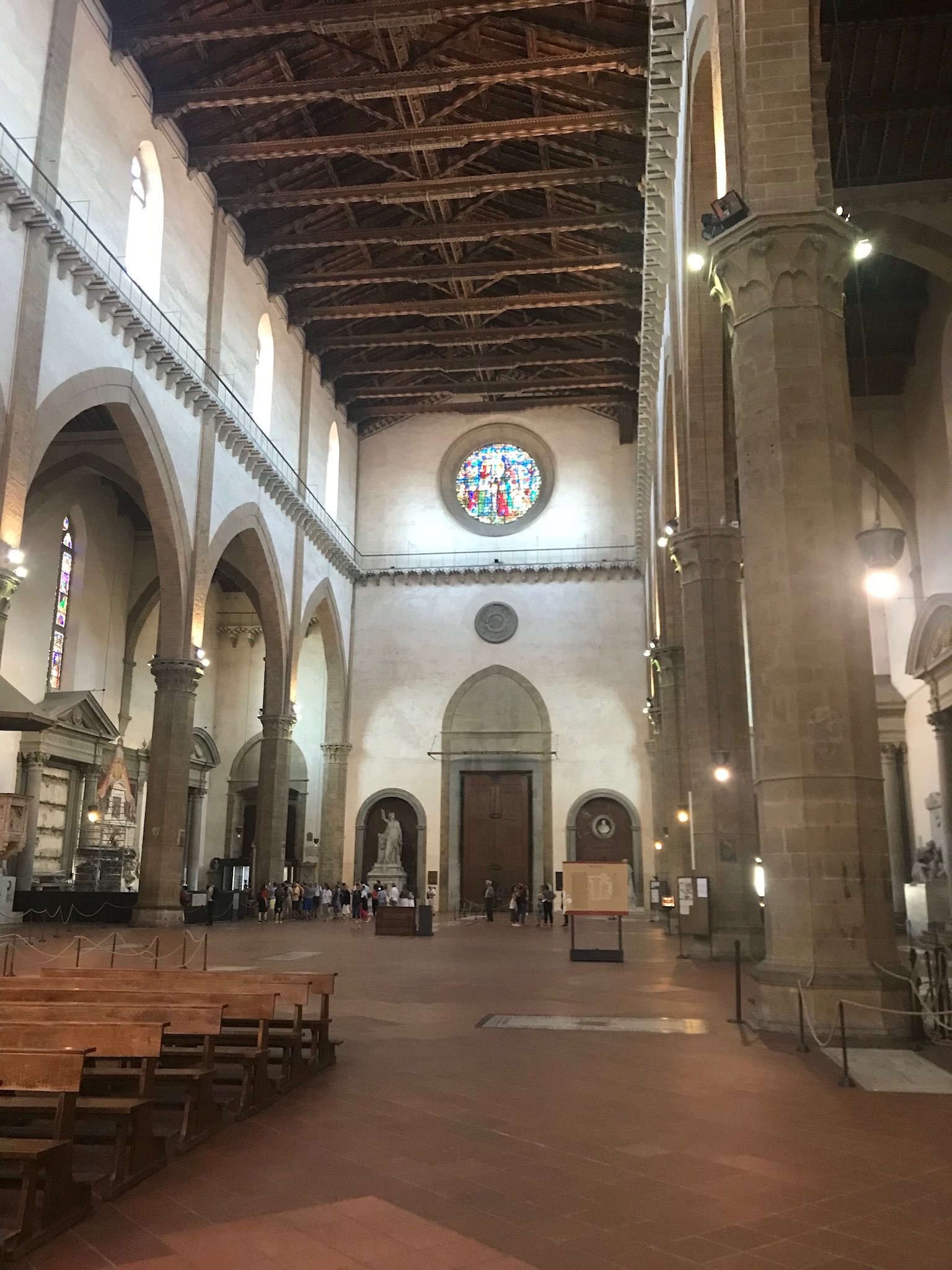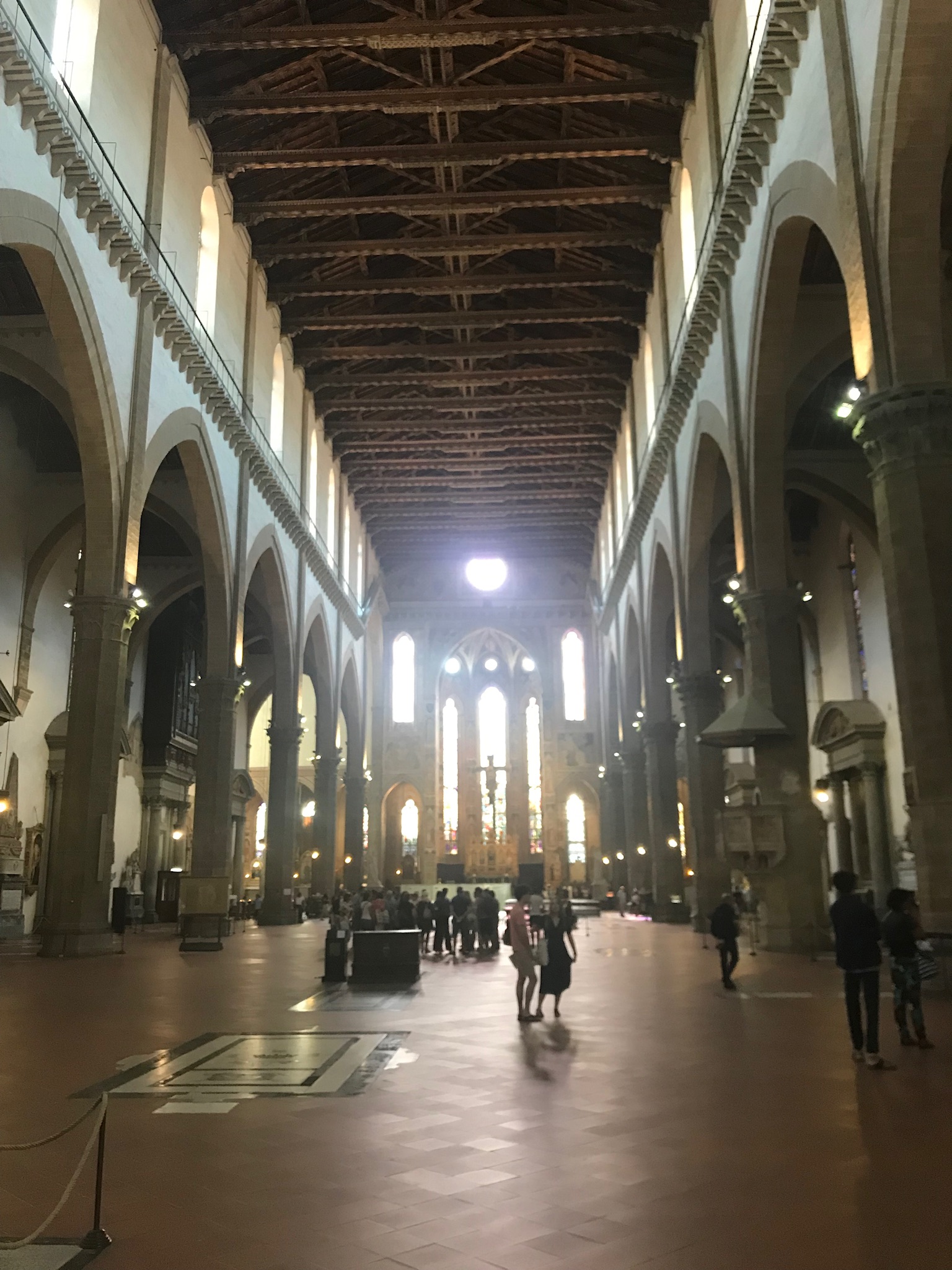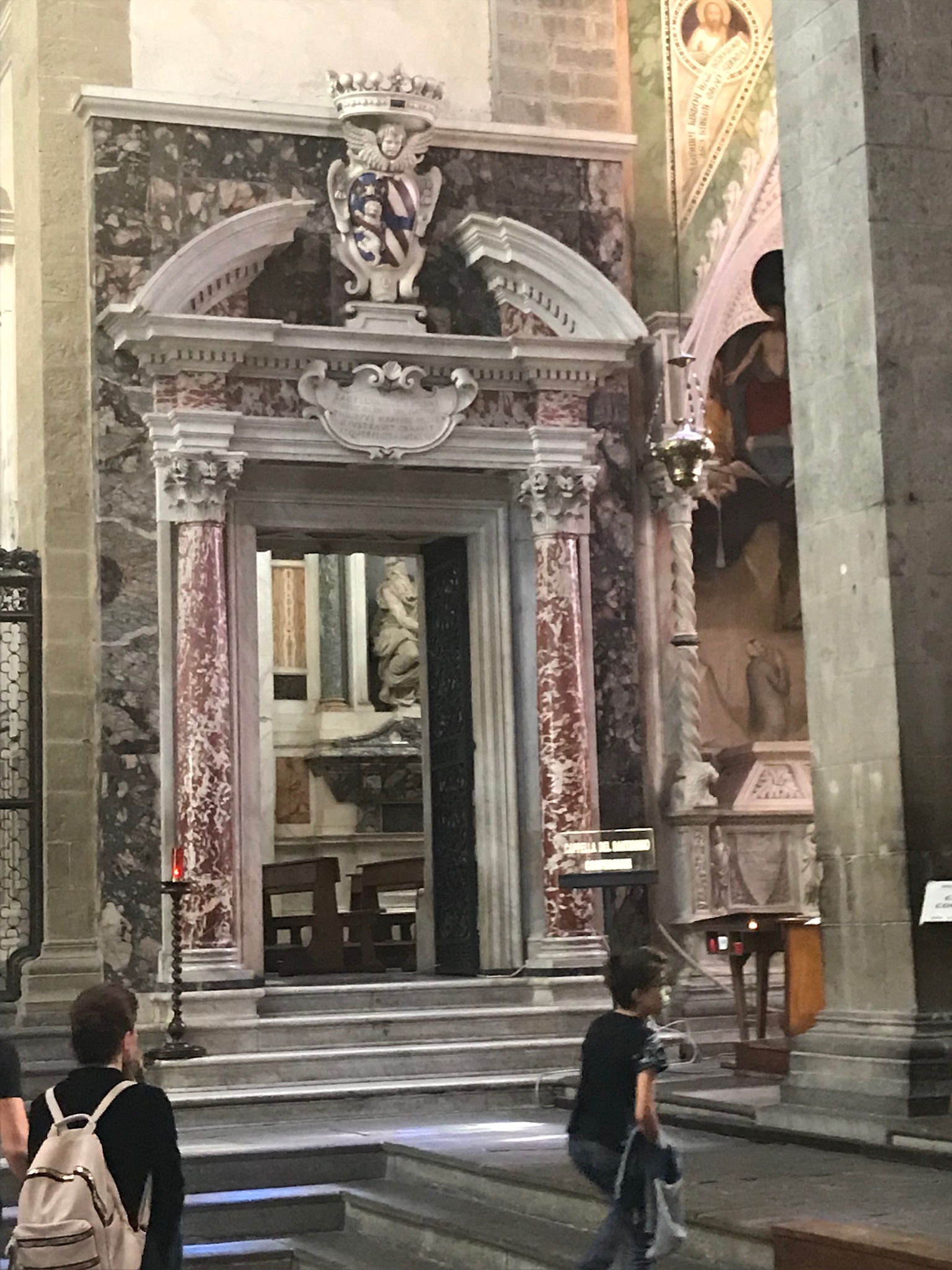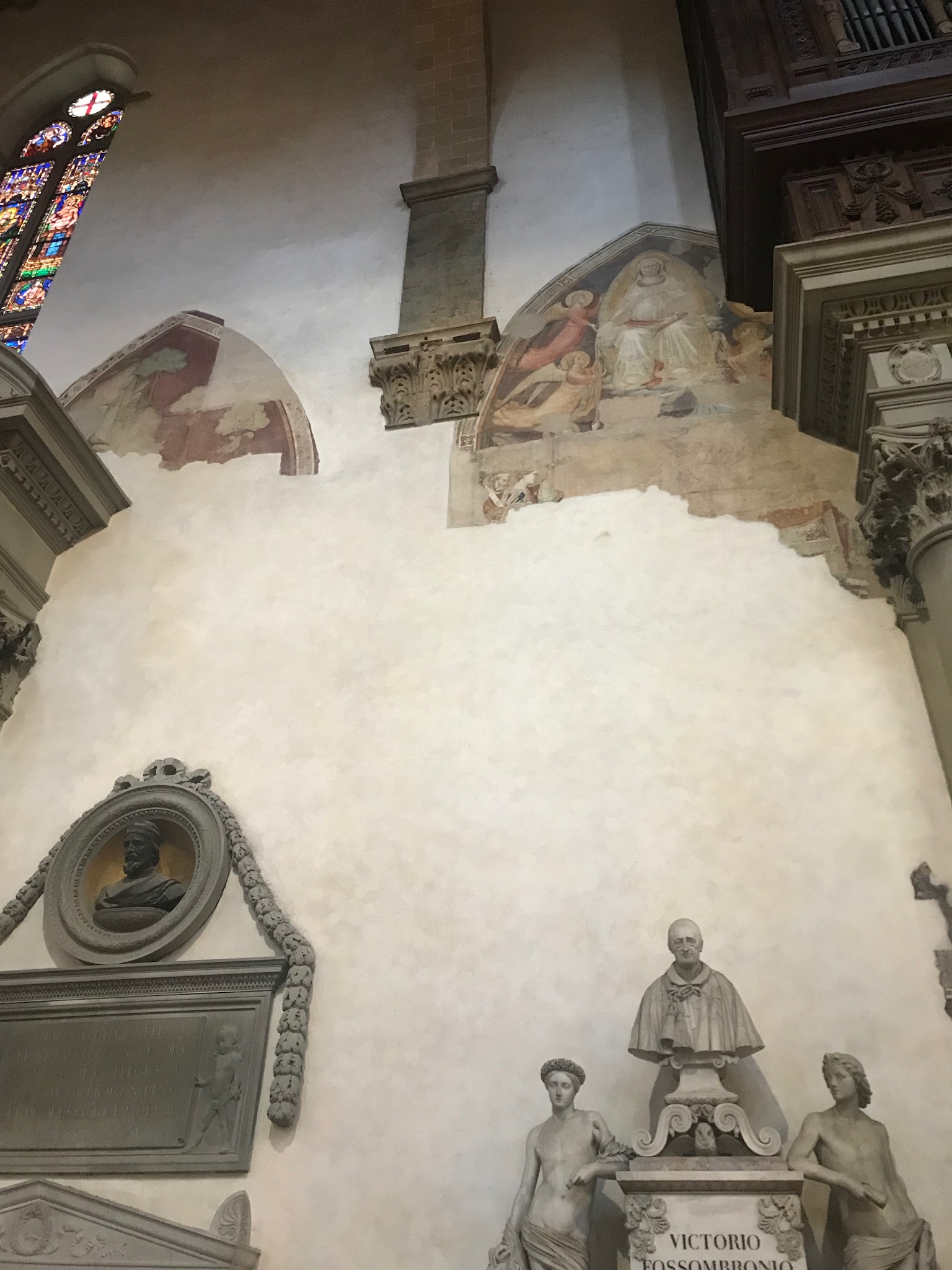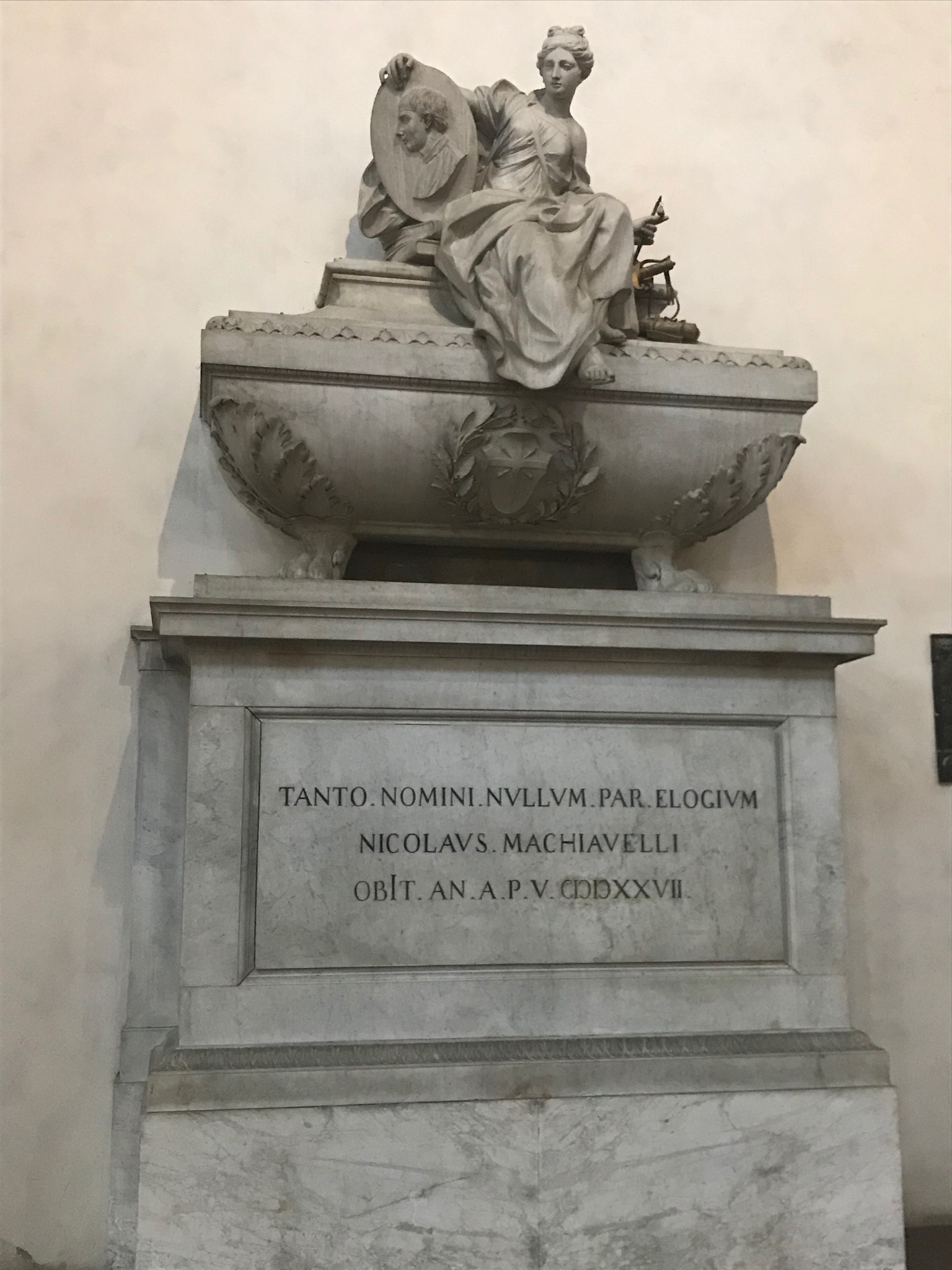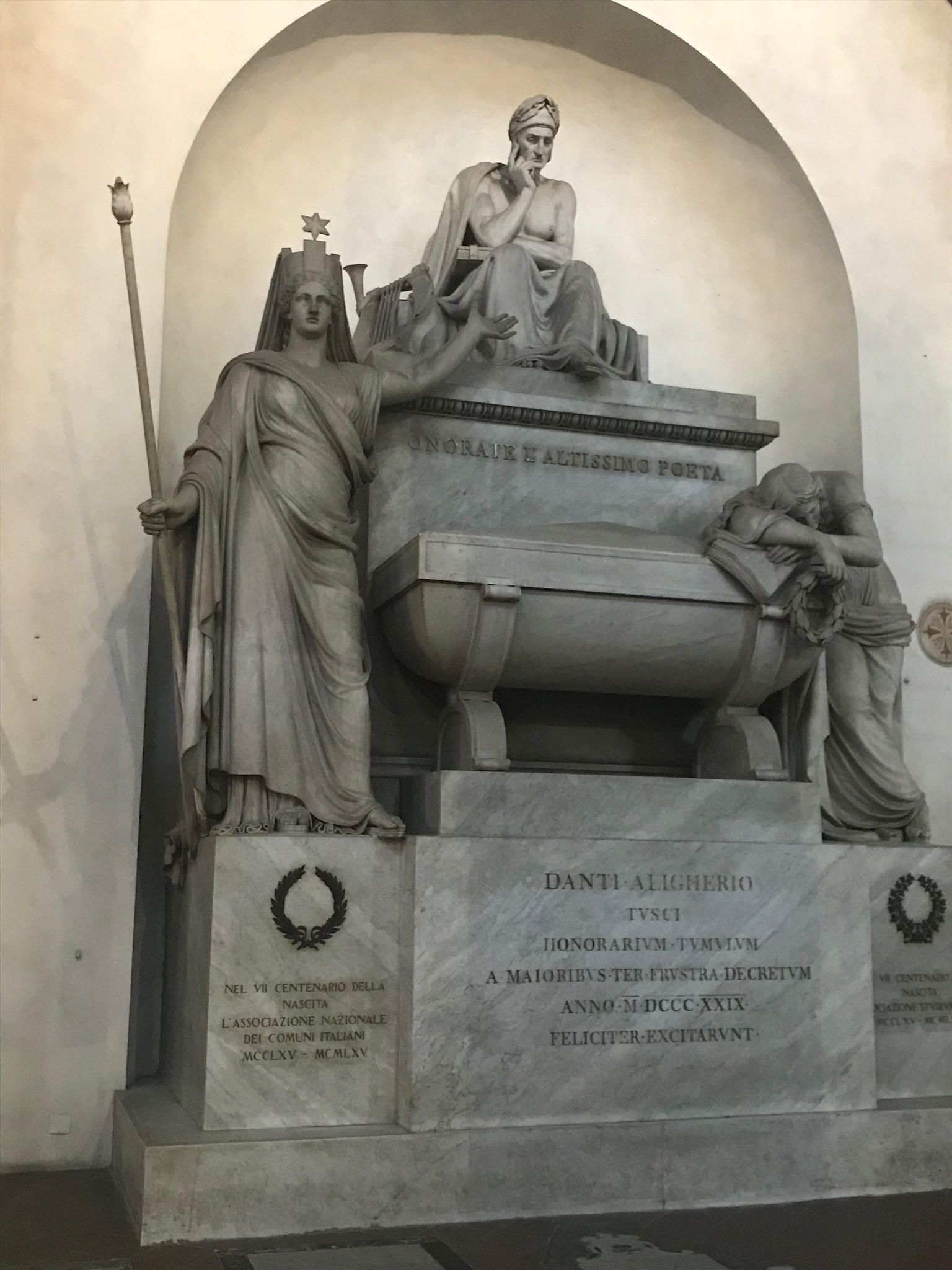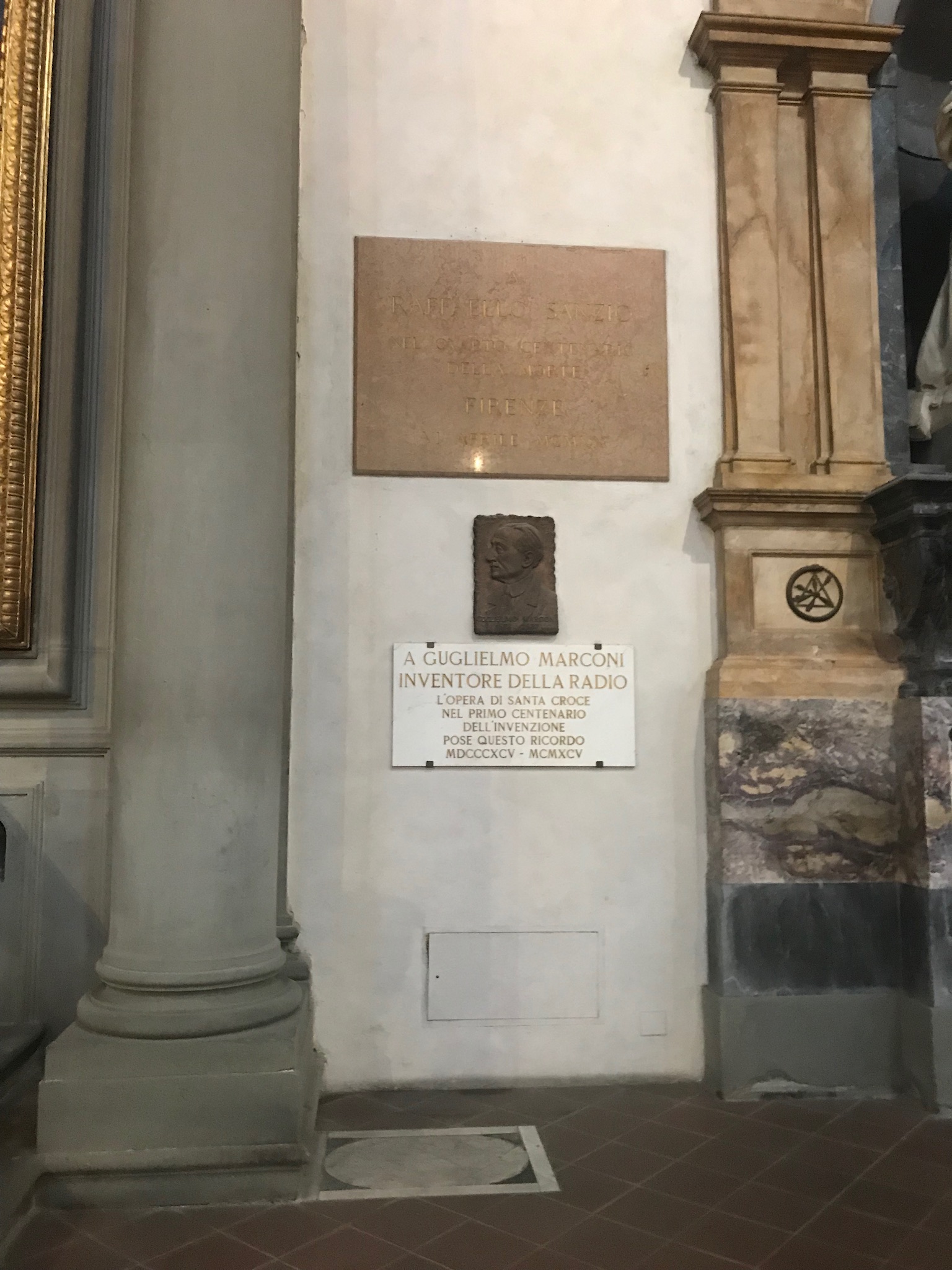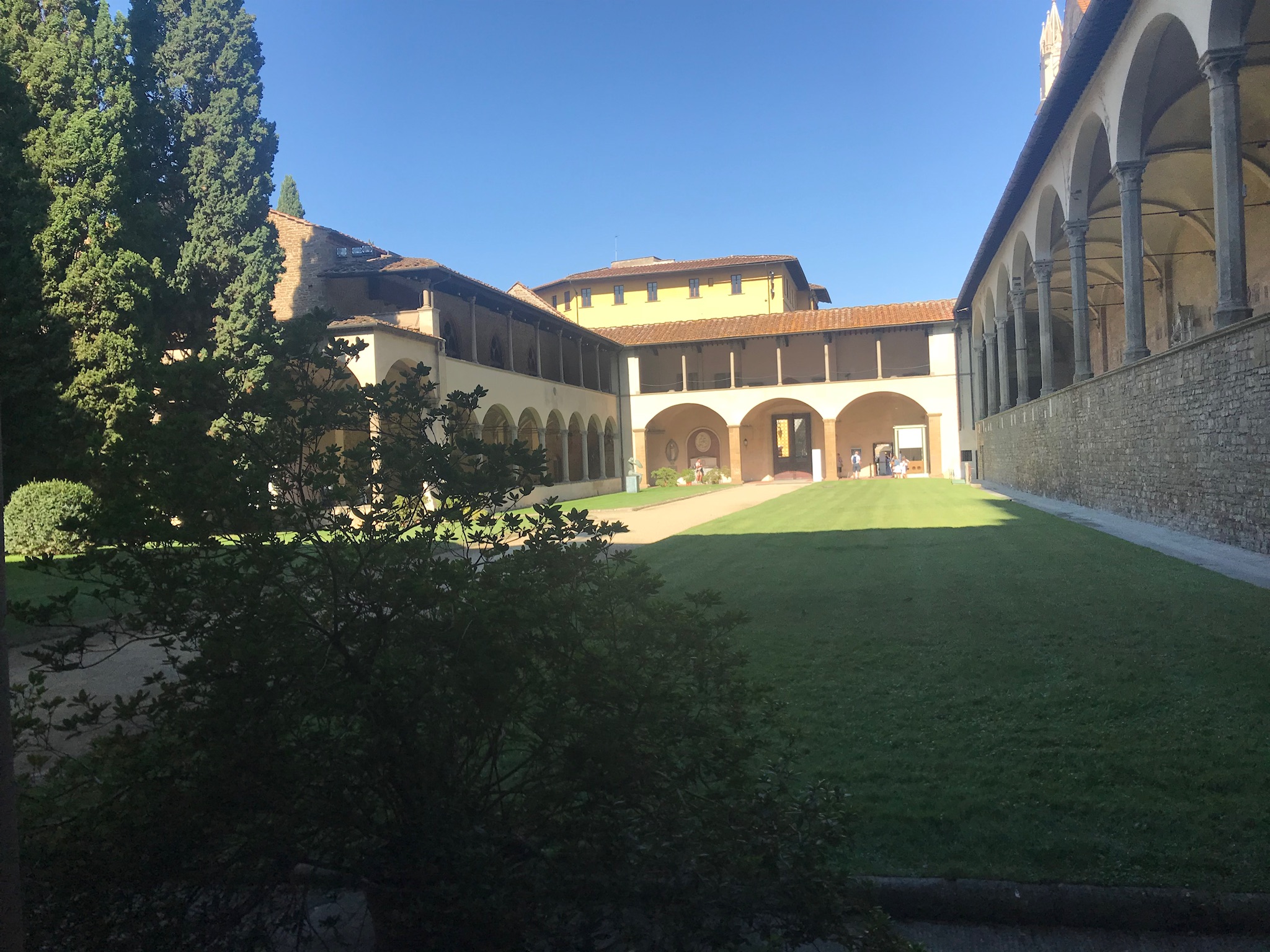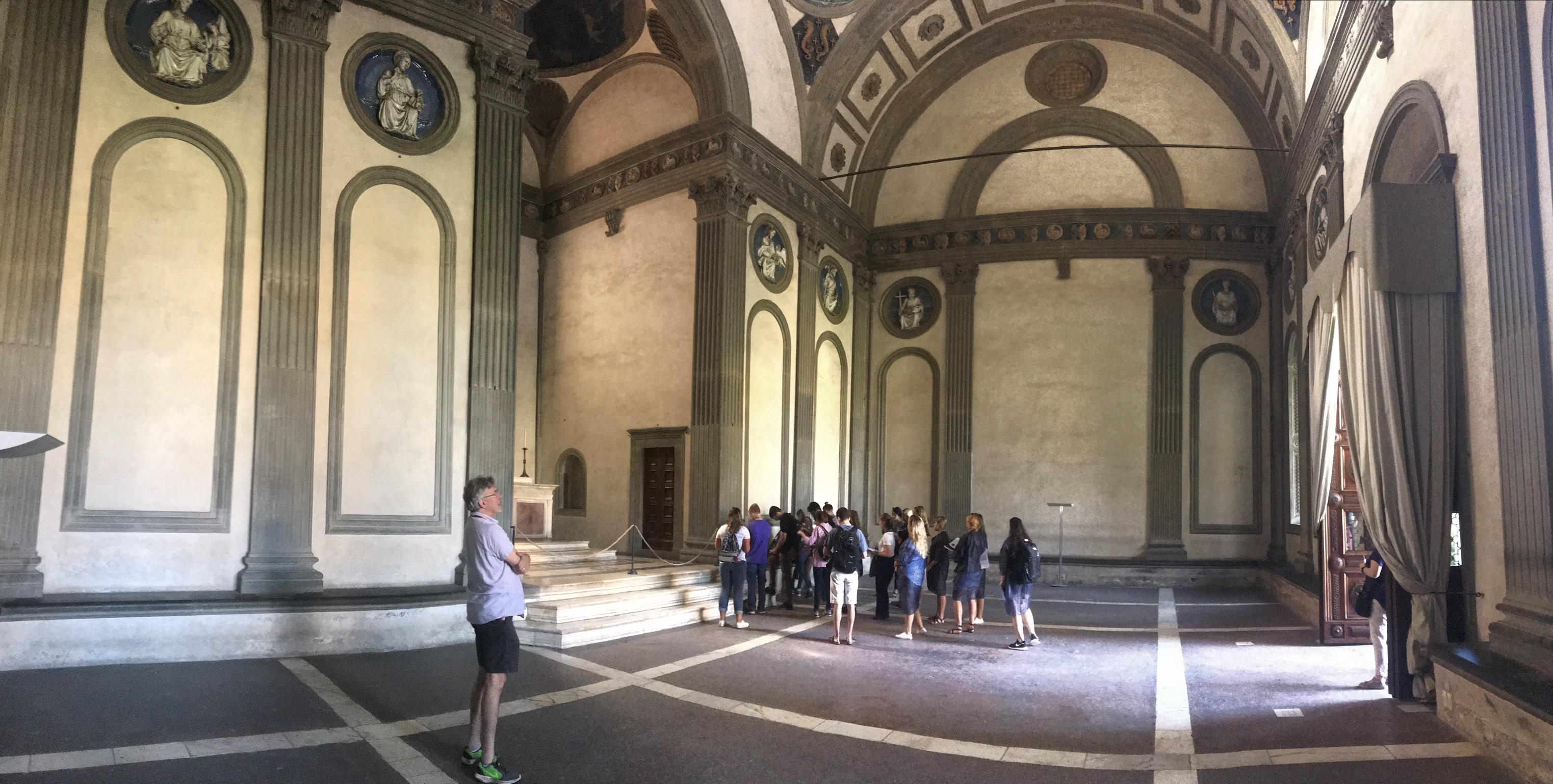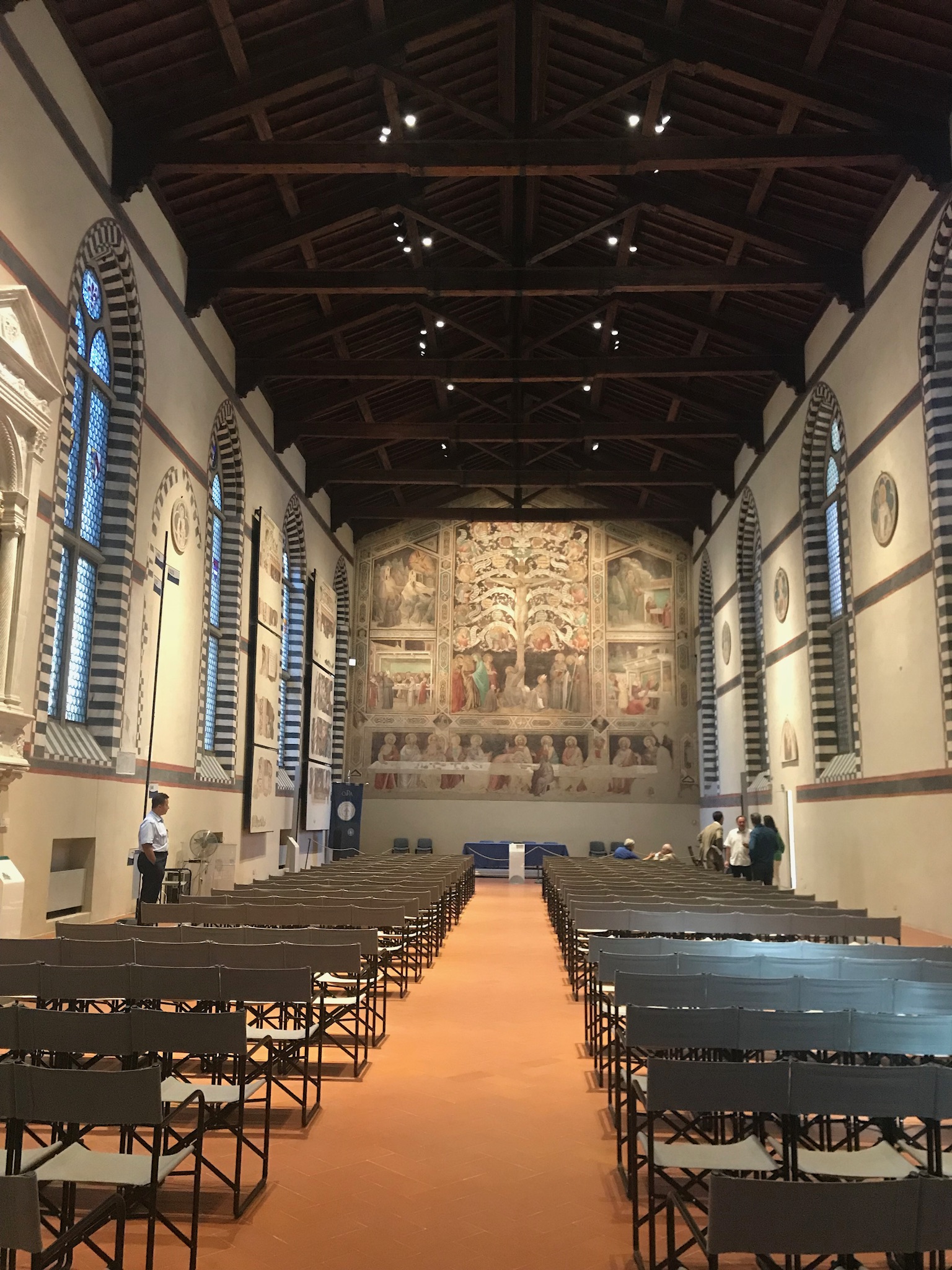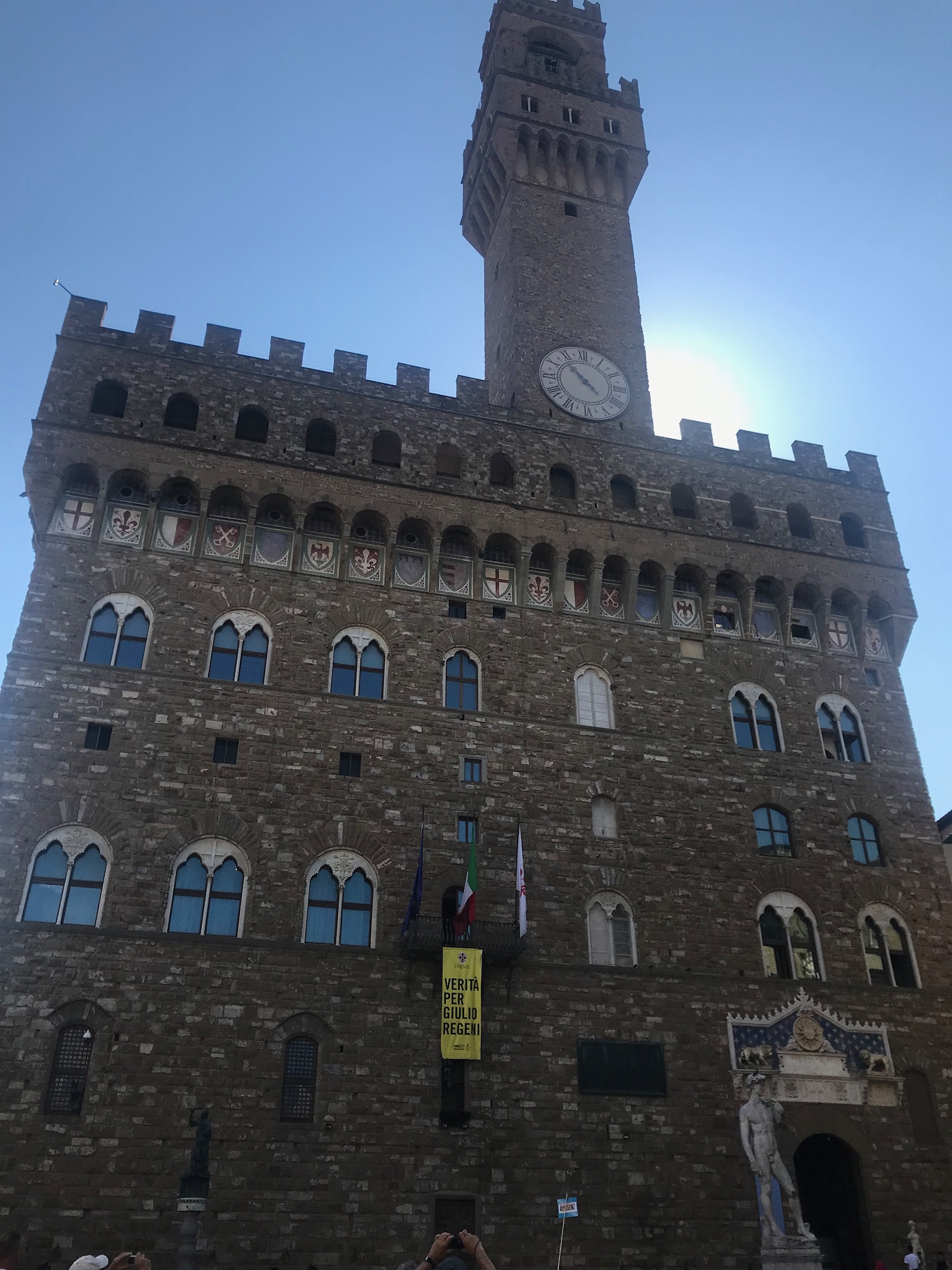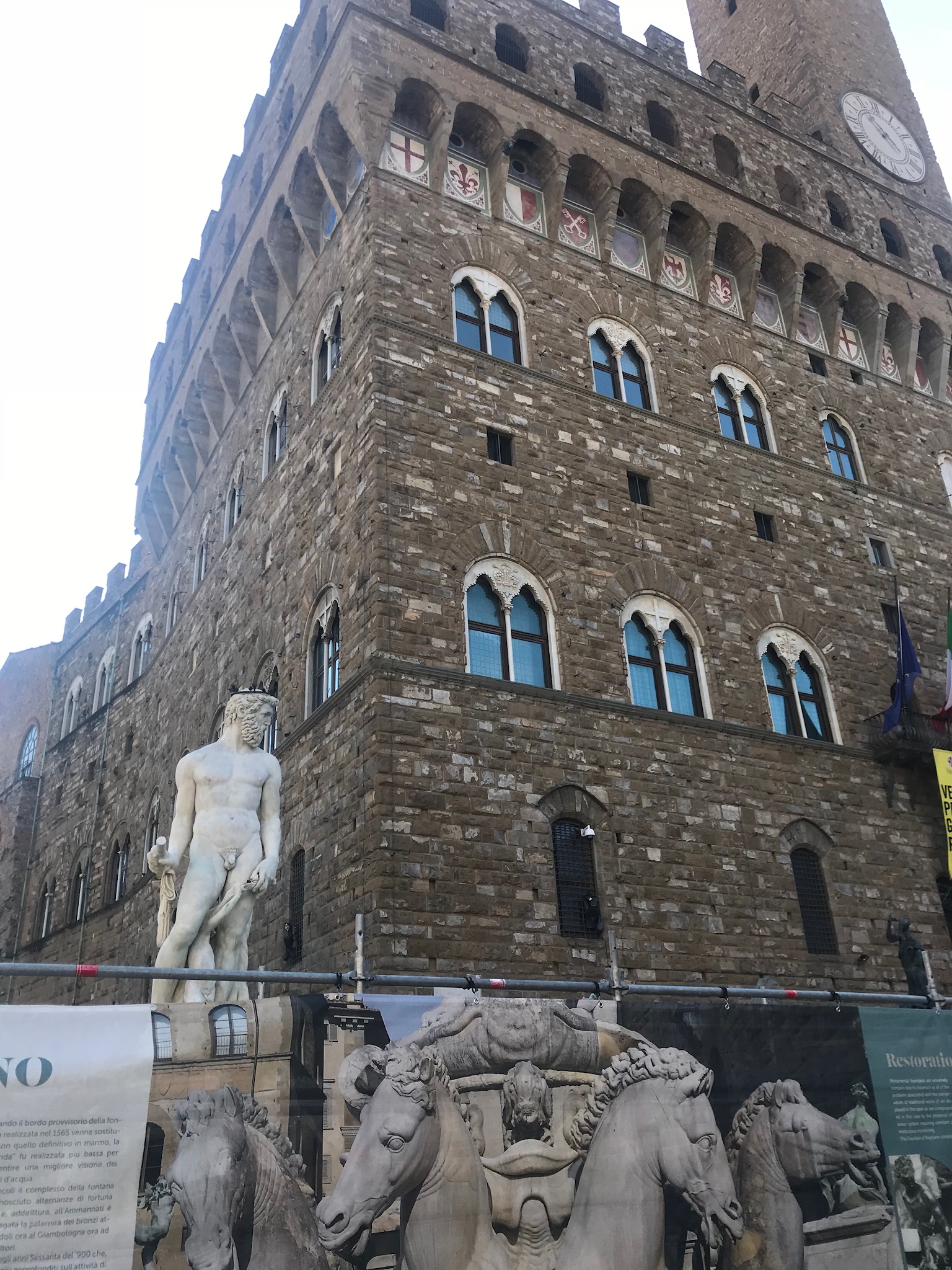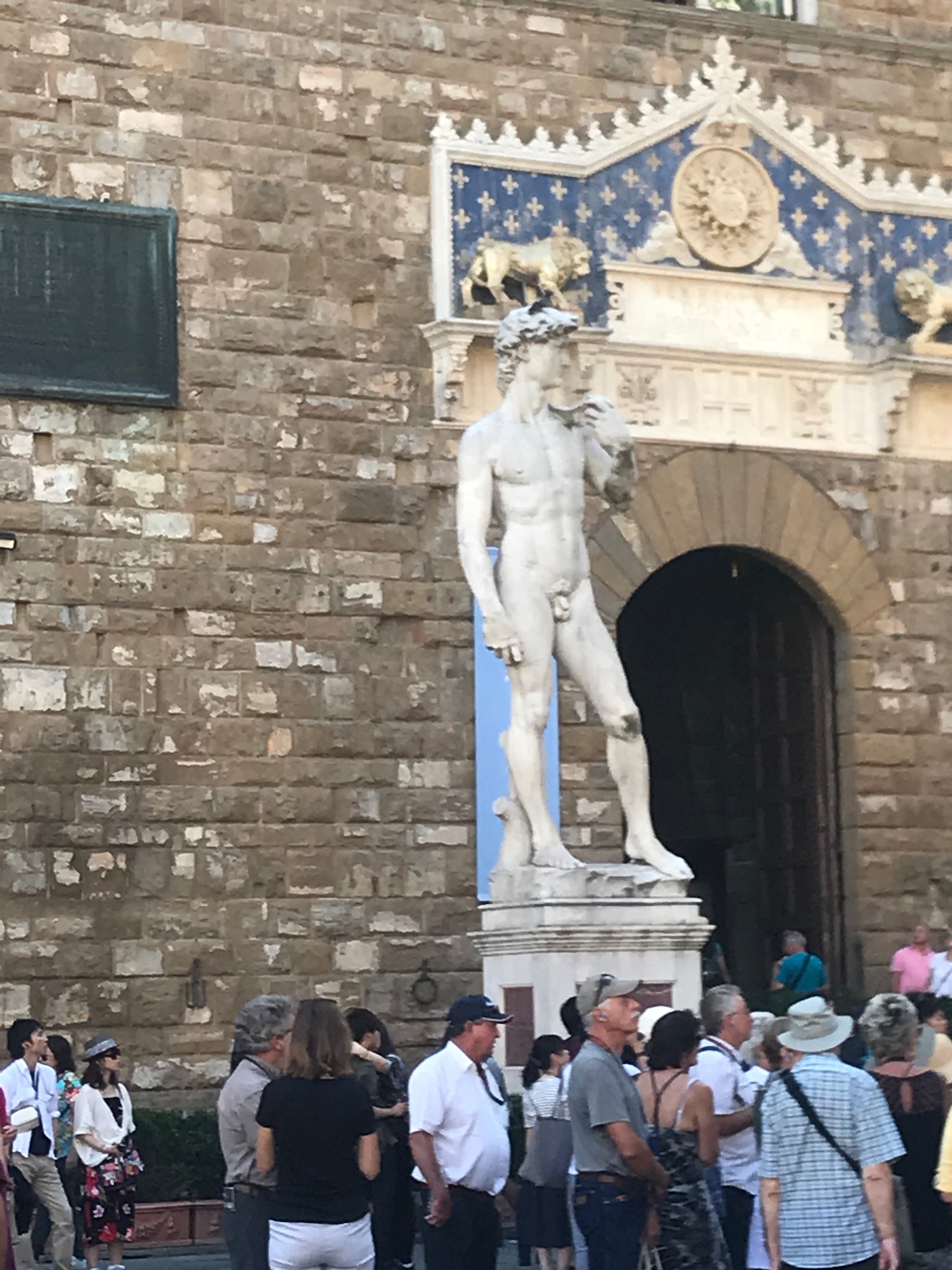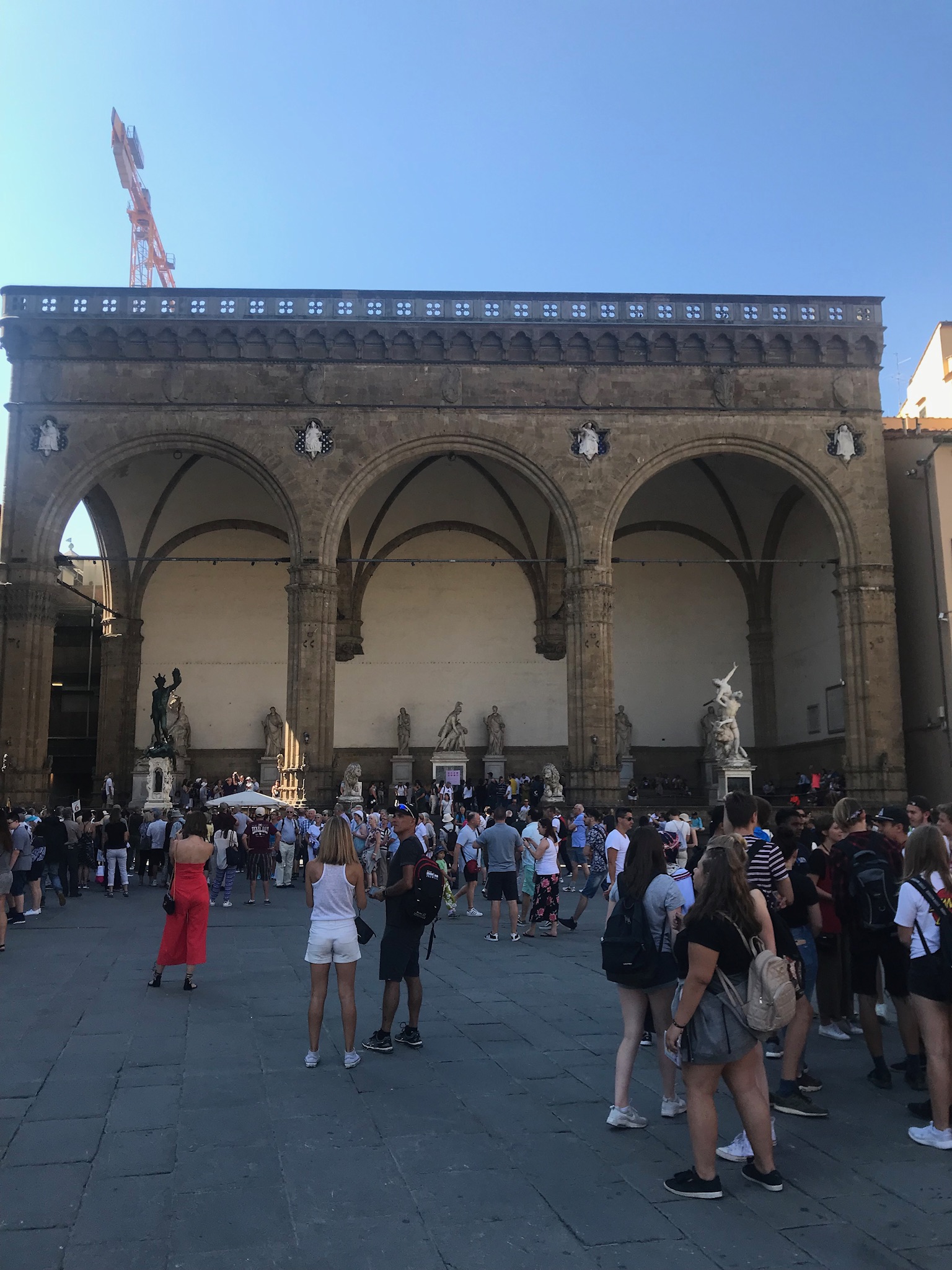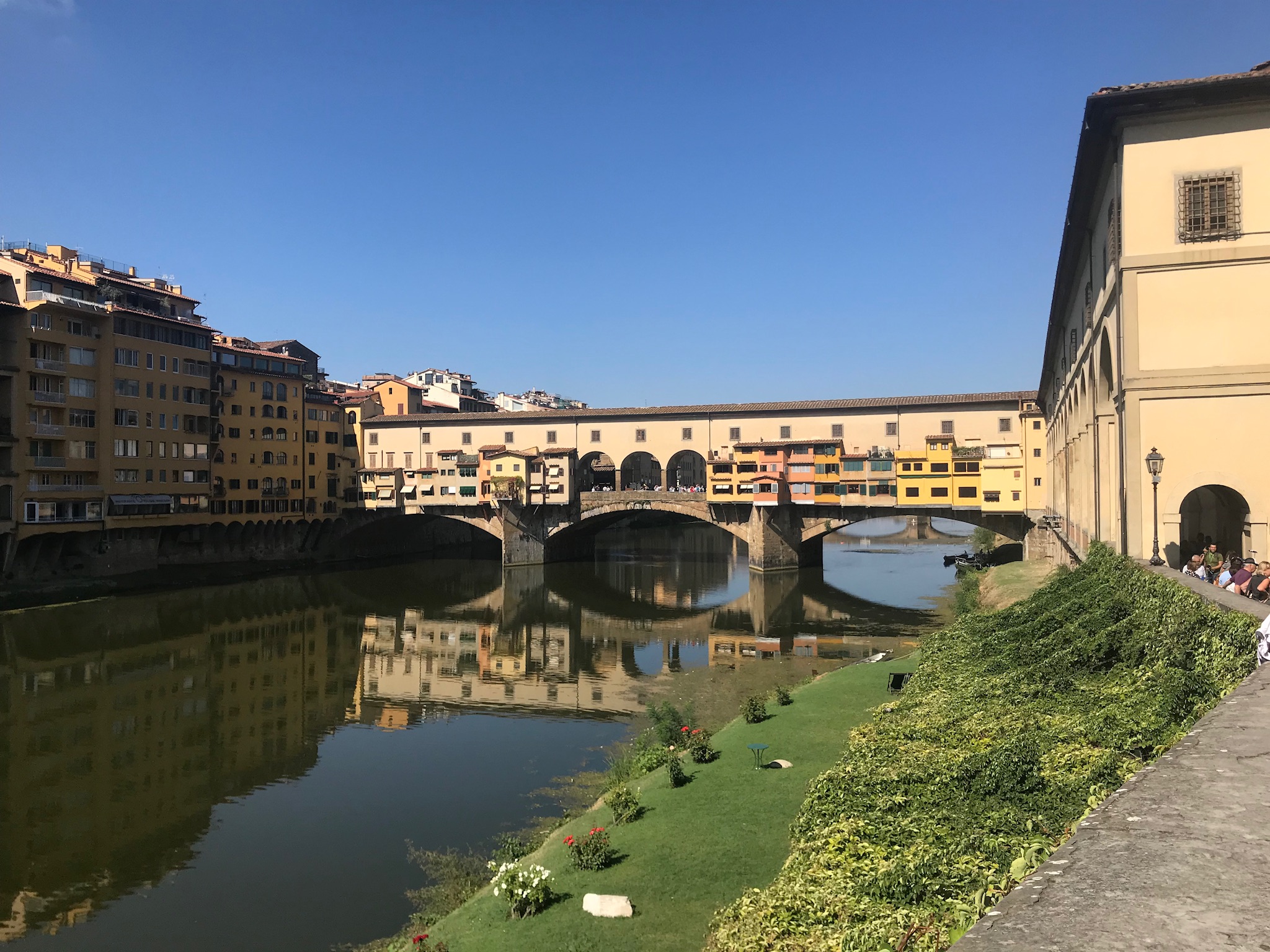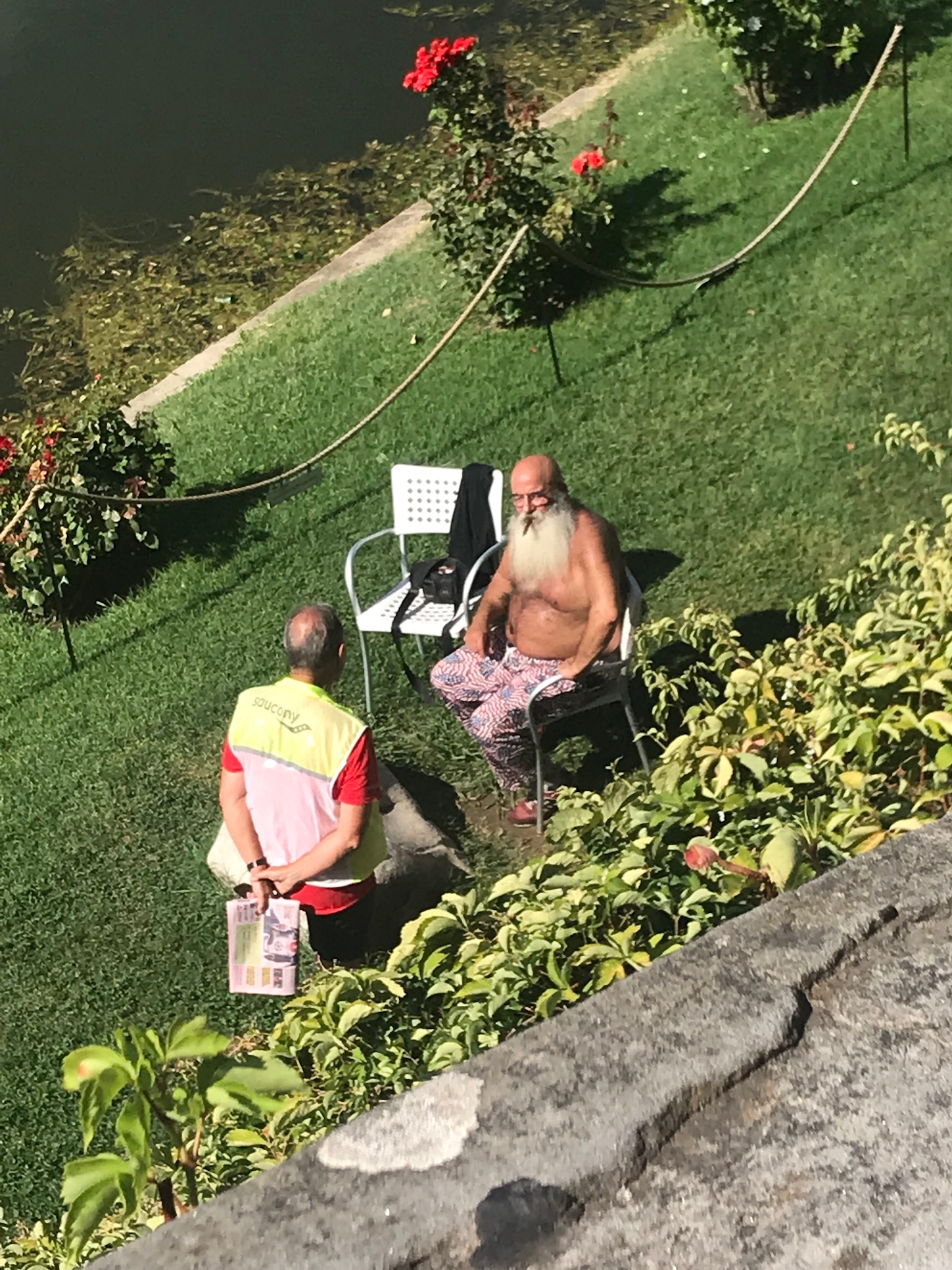It’s Wednesday, and I’m on an Air France 777 somewhere over Caen, heading back to ATL.
On Friday we were in Rome.
As you know, Vatican City is an independent state. It used to be its own kingdom, but when Italy was united in 1870 the Holy See lost all its temporal property; Pope Pius IX pitched a hissy and refused to talk to anyone.
In 1929, the government of Italy signed a treaty with Pope Pius XI, agreeing to his sovereignty over his 110 acres, plus a ton of tax goodies and privileges.
While our hotel is in sight, indeed, of walking distance, of St. Peter’s, it was necessary for us to board the bus, get dropped off, walk around the walls, and enter through the Vatican Museum.
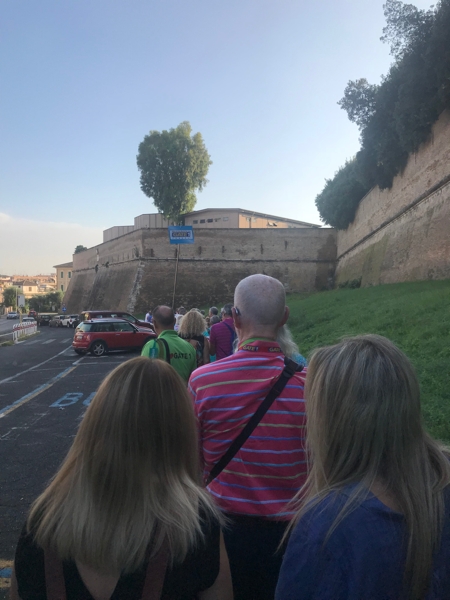
Here’s our first view of the Vatican:
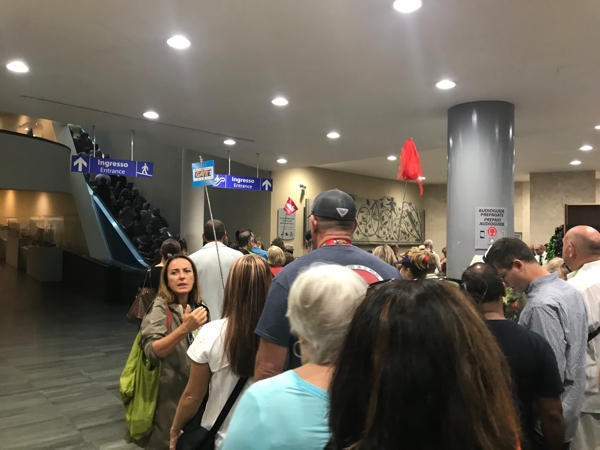
It didn’t get better:

Ever.
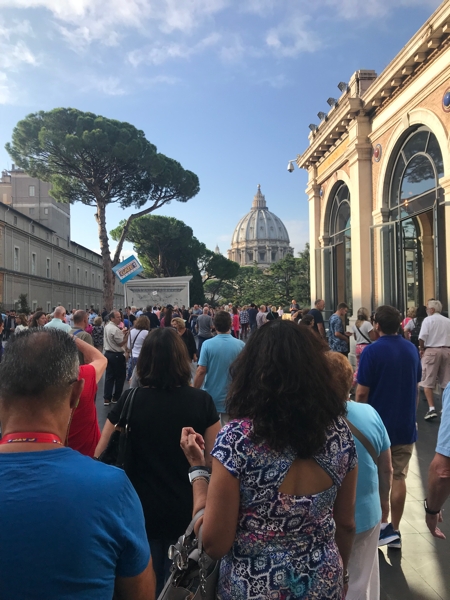
Out into the gardens…

The brass sculpture back there is a modern piece depicting the church. Despite the polished perfection of most of its surface, there are some gnarly bits that represent the ongoing construction of the faith.
It rotated majestically, and here’s my favorite bit:
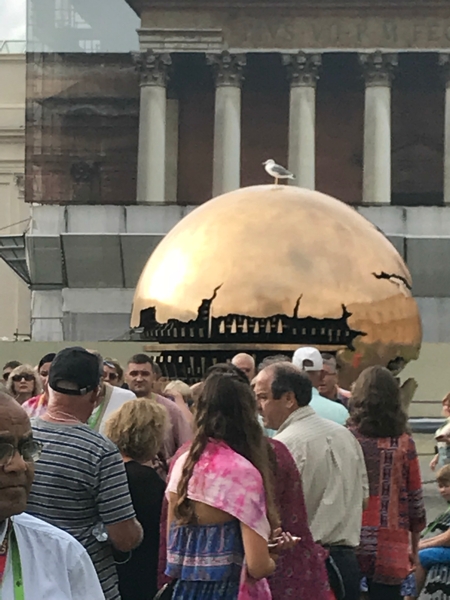
He stood there, rotating majestically with the globe, allowing the crowds to admire him. So unlike our dear Pope Francis, no?
Here’s a kitty:
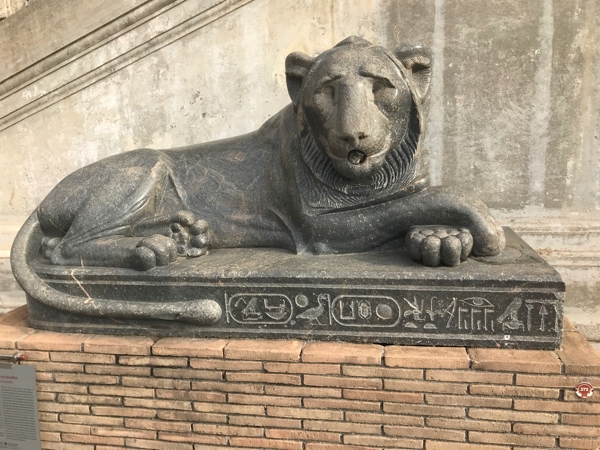
It’s stone, from Egypt, from the time of Cleopatra, I think. Remember him.
We enter the museum itself:
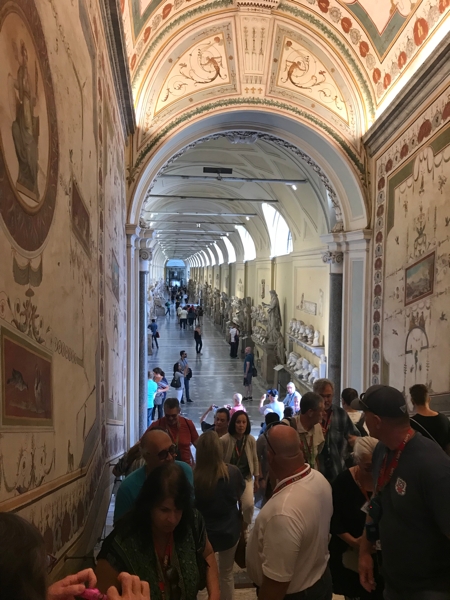
First up, Greek/Roman sculptures:
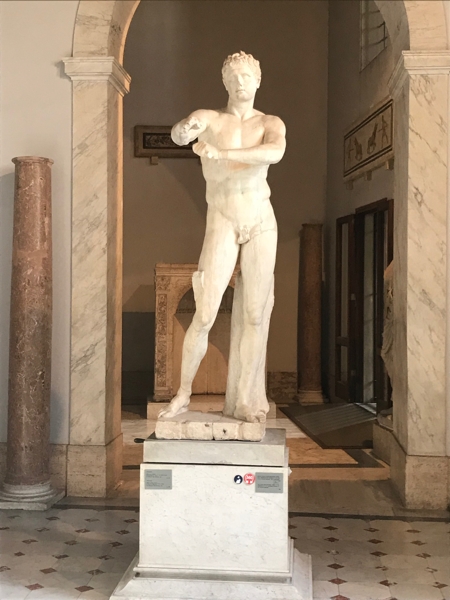
An athlete of some kind; I think he originally held a spear.
The Apollo Belvedere:
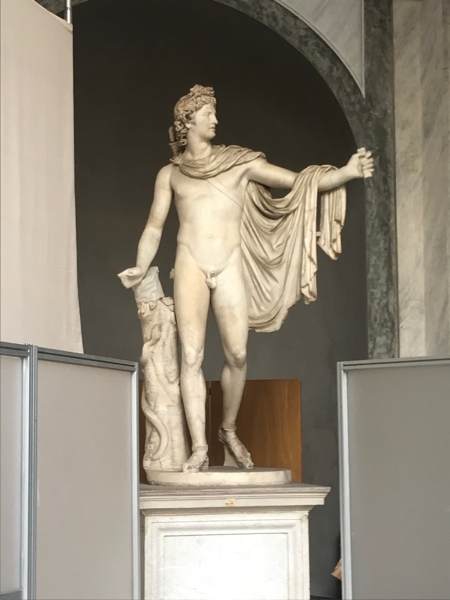
I have a bronze copy of this statue in the labyrinth.
The original Laocöon:
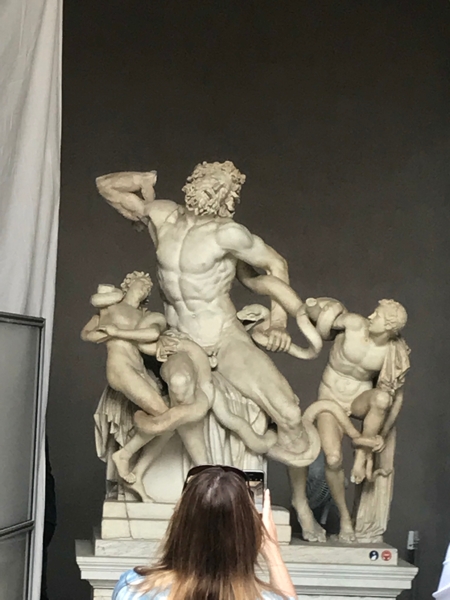
Dionysus:
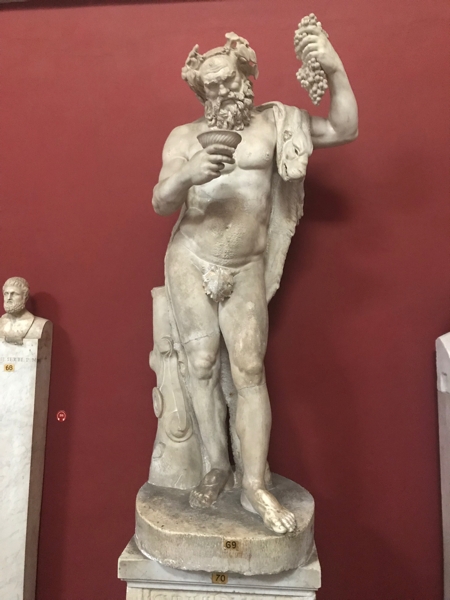
I do not have an actual Dionysus/Bacchus in the labyrinth (playing off the dichotomy between the cool, cerebral Apollo and the ecstatic Dionysus). I have a bronze Dancing Faun (from Pompeii) who stands in for him, though, because he’s much more ecstatic. This Bacchus seems closer to being a member of 3 Old Men than his usual portrayal as a joyful, androgynous youngling.
In this hall…
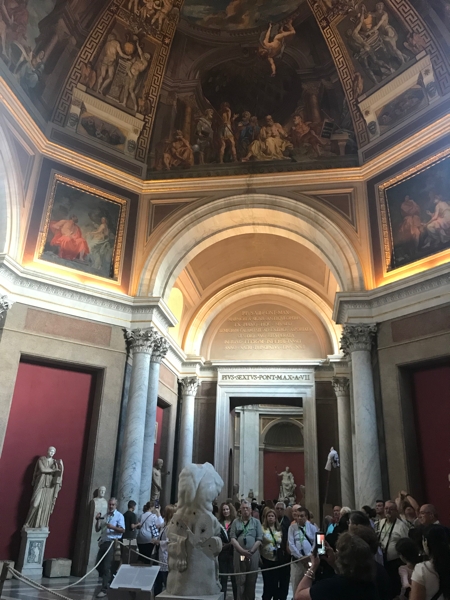
… was this Greek torso. It was one of the early discoveries, and let’s talk about that a moment.
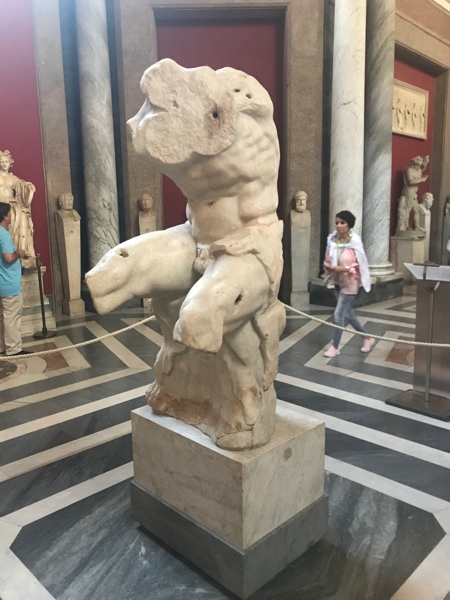
Before the Renaissance, no one remembered the Greco-Roman world; it was all buried literally under their feet. Our tour guide Susanna—the best we had on the trip—called the city a “lasagna”: layer upon layer of city after city built on top of each other. Once people started stumbling across the remains of the former civilizations, it was like a light switch going on.
This torso in particular helped spark the Renaissance, the rebirth of Roman perfection. No one had seen a sculpture with such accurate anatomy in centuries, and they got to work copying it.
This torso, in fact, is the very torso in the German poet Rainer Maria Rilke’s “Archaic Torso of Apollo.”
We cannot know his legendary head
with eyes like ripening fruit. And yet his torso
is still suffused with brilliance from inside,
like a lamp, in which his gaze, now turned to low,
gleams in all its power. Otherwise
the curved breast could not dazzle you so, nor could
a smile run through the placid hips and thighs
to that dark center where procreation flared.
Otherwise this stone would seem defaced
beneath the translucent cascade of the shoulders
and would not glisten like a wild beast’s fur:
would not, from all the borders of itself,
burst like a star: for here there is no place
that does not see you. You must change your life.
This is kind of cool:
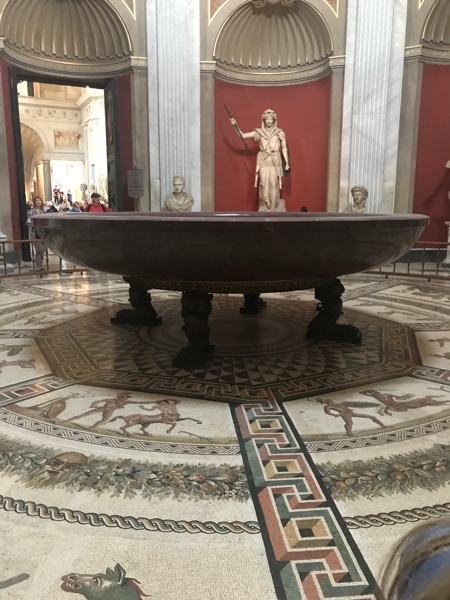
This is an enormous bowl made from a single piece of porphyry. There are several large objects like this scattered around. I regret to say I cannot remember what this one’s original purpose was, but the Vatican turned it into a fountain.
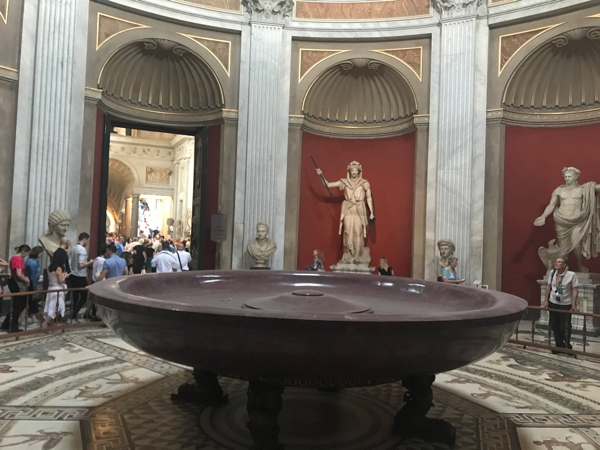
Here’s the Emperor Claudius, for those who remember him and who have the eerie sense that we’re seeing a rerun of I, Claudius from PBS. (No, the real Claudius was not ripped like a soccer player; his head was “photoshopped” onto the body, as was the custom of the time. Y’all remember this when it comes time to build my memorial.)
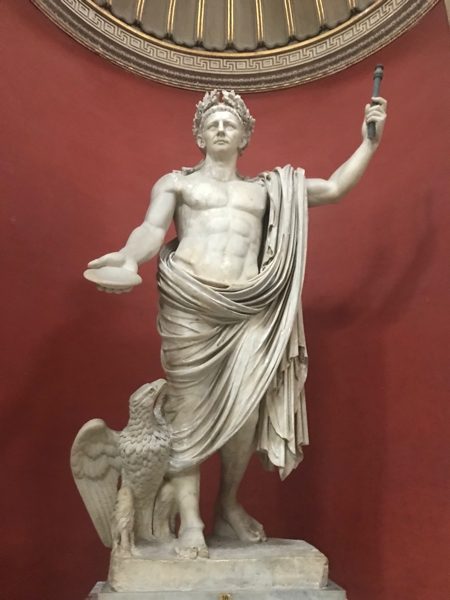
In case you have forgotten:
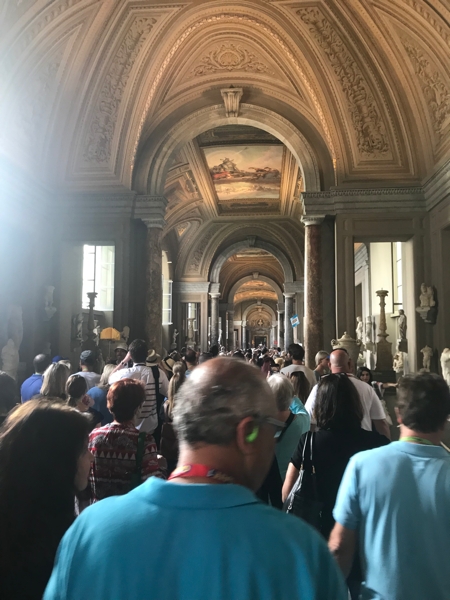
Here’s a fun one:
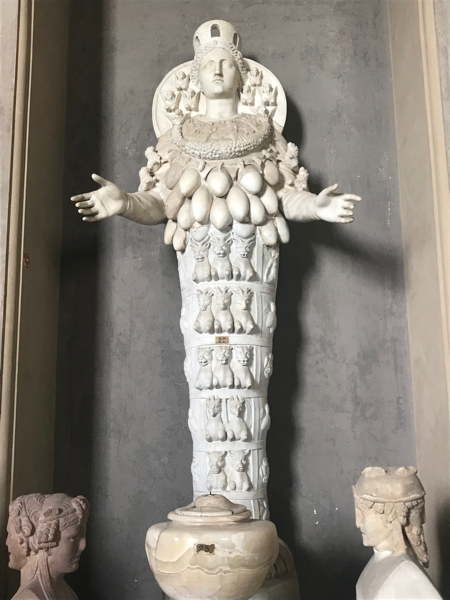
This is Diana, from the temple at Ephesus, which you will perhaps remember from St. Paul’s letters to the Ephesians and Shakespeare’s Pericles, Prince of Tyre. As Susanna said, “Those are not mangoes.” The odd thing is that there is some conjecture that those are not breasts, but testicles. Make of that what you will.
I just liked this bowl with the ugly, naked dwarfs holding it up.
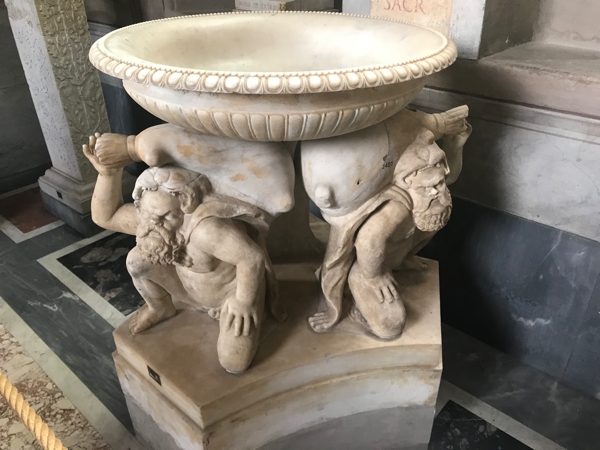
Here’s Dionysus as we know and love him:
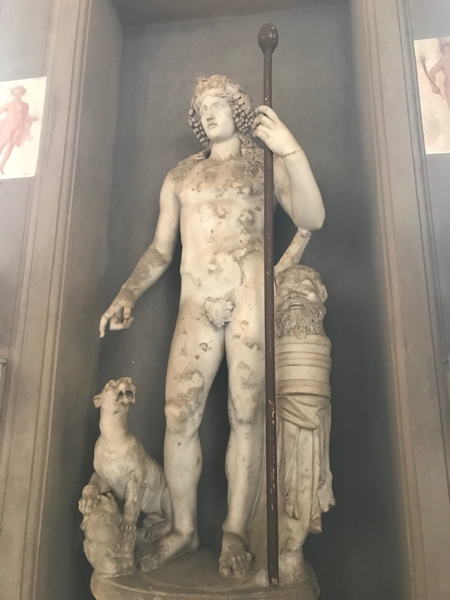
Moving on:

The scenery, of course, was stunning:
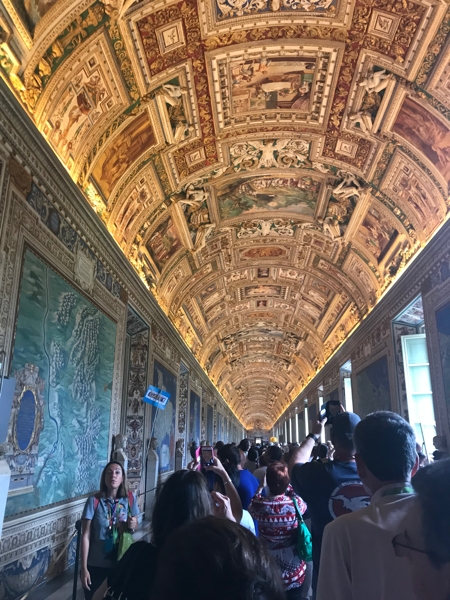
Down some stairs…
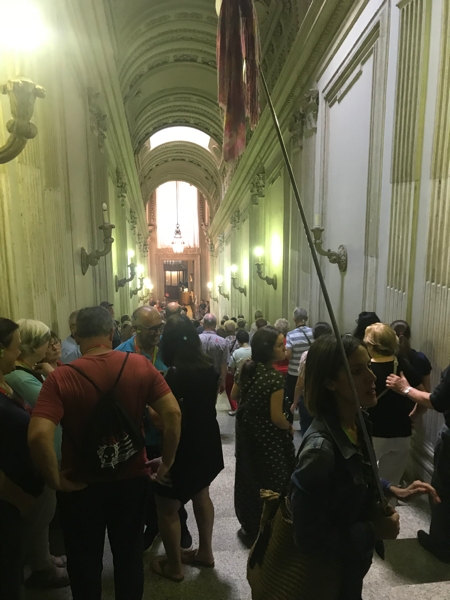
… outside…
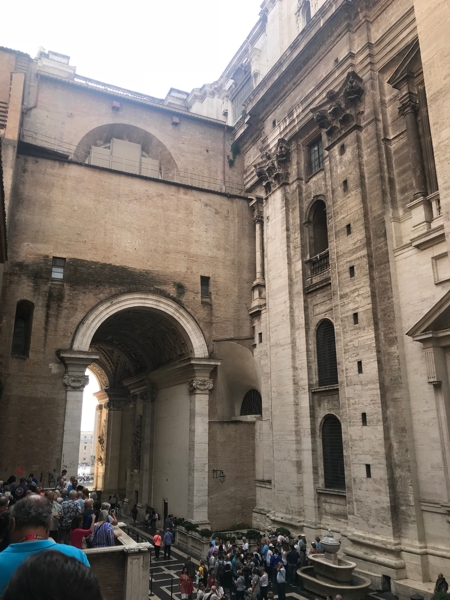
… along a couple more passages…
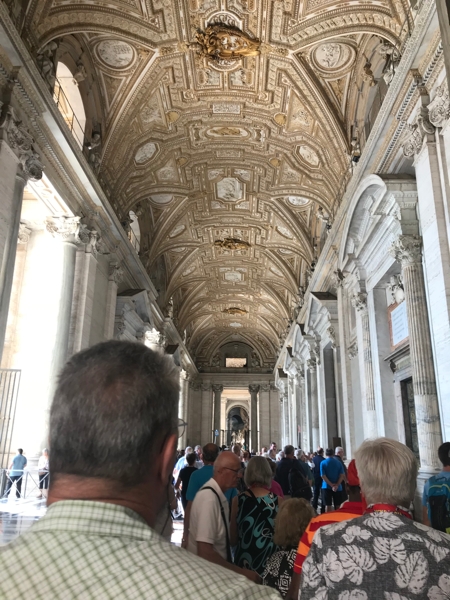
…and here we are coming out of the Sistine Chapel.
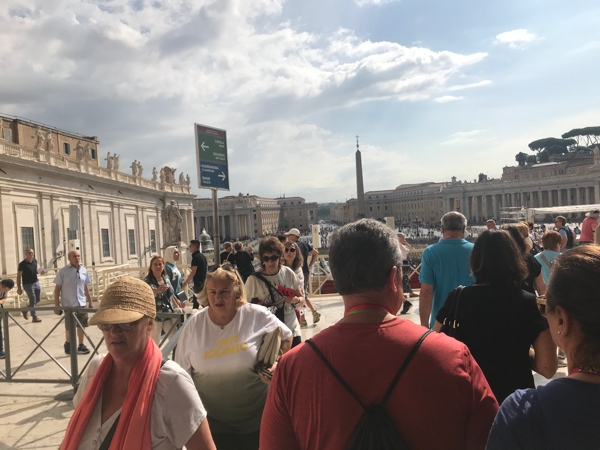
What, no photos of Michelangelo’s masterpieces? Nope. The official excuse is that too many people were taking flash photos — STOP TAKING FLASH PHOTOS IN MUSEUMS, PEOPLE; IT’S NOT HARD TO TURN YOUR FLASH OFF[1] — but I seem to recall that the Japanese company that funded the restoration got some kind of copyright on the ceiling. Inside St. Peter’s Basilica, though, there were no restrictions on photography.
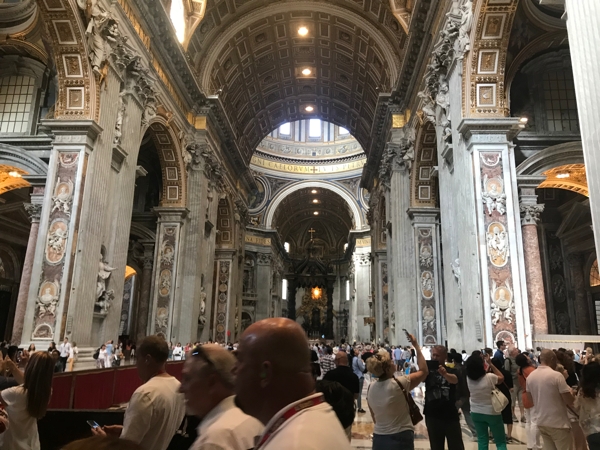
The place is huge.
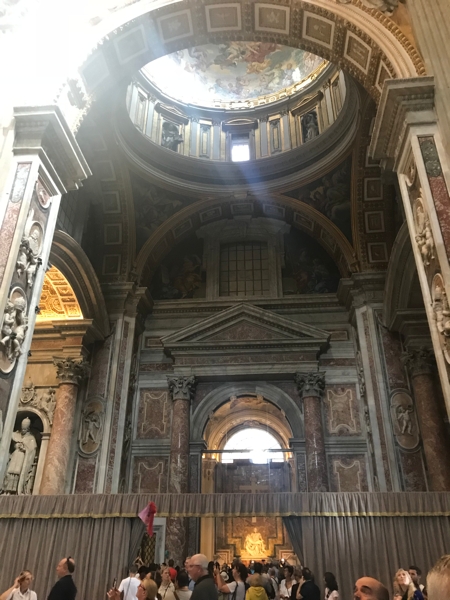
Bernini’s baldequin over the altar is, for example, 90 feet tall. The letters you see around the top of the columns are six feet tall.
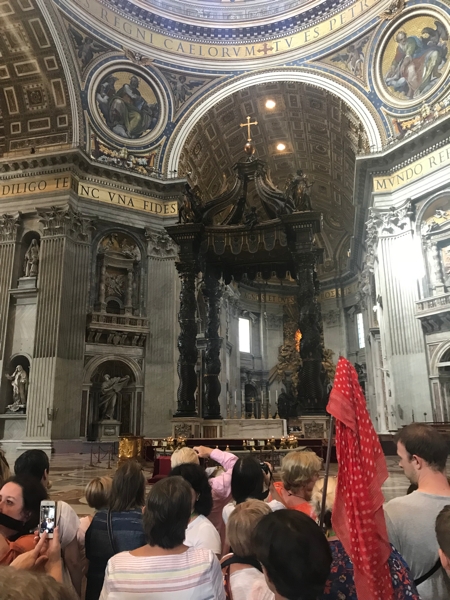
Here is Michelangelo’s Piéta:
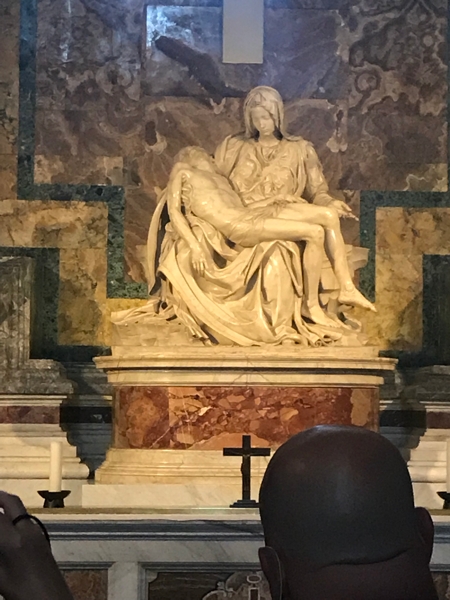
It’s always hard, looking at Michelangelo’s sculpture, to remember that it’s marble and not flesh and fabric.
The dome above the altar:
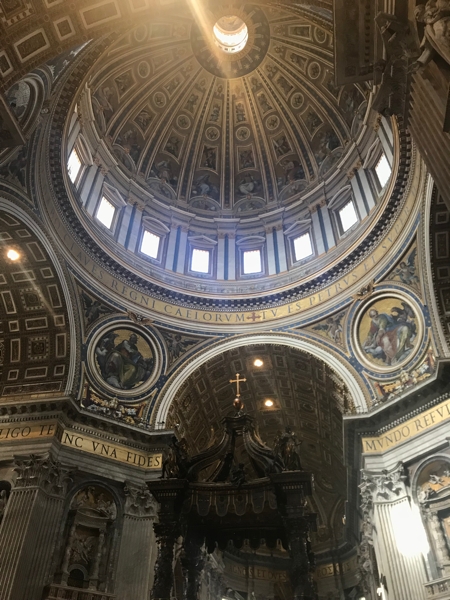
And back outside into the square:
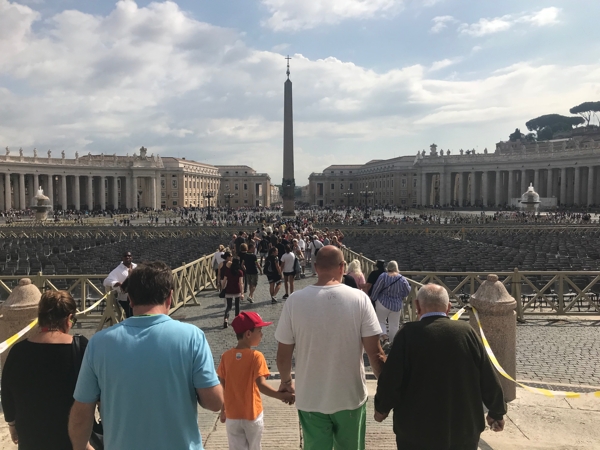
The front of the Basilica:
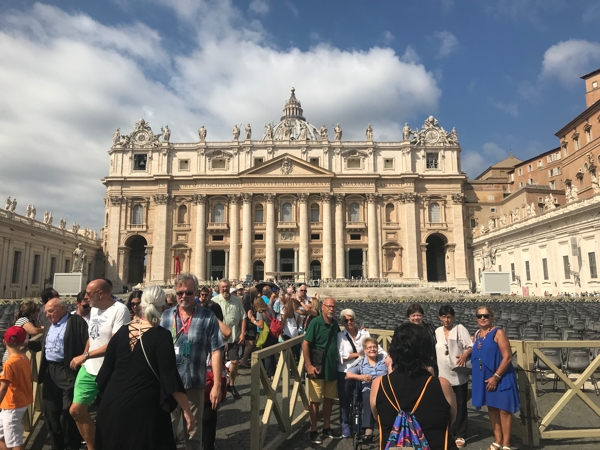
They were setting up for some special event with the Pope addressing lots of people. No details beyond that.
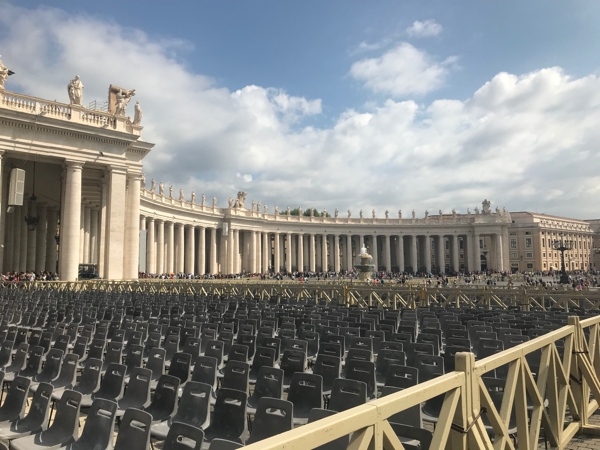
We lunched at Piazza Navona, which has not one…
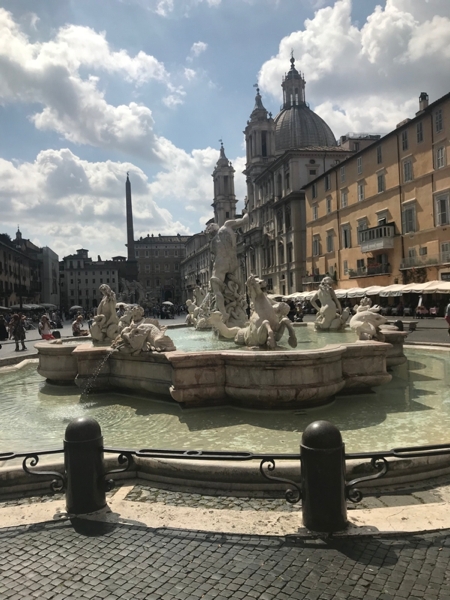
…but two fountains:
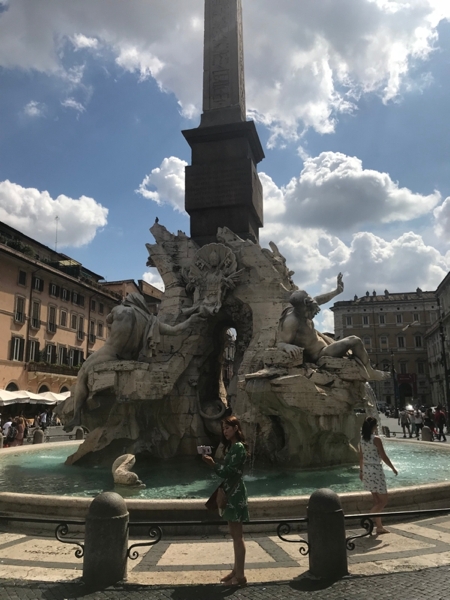
This is the Fountain of the Four Rivers, depicting the four longest rivers of the four continents (at least the ones known at the time).
For “America” we had the Rio de Plata in Argentina/Uruguay, with that fiercest of river life…

…the armadillo. Yeah, they got it wrong. In all kinds of ways.
After lunch we had some free time, and there was a “stationery” shop there that had the most phenomenal hand-made blank books. The LFW’s guidebook, though, listed other such shops, so I walked out without buying anything. This was a mistake, because the other shops were pathetic, and we never returned to that first shop.
From the Piazza Navona, we headed to the Pantheon.
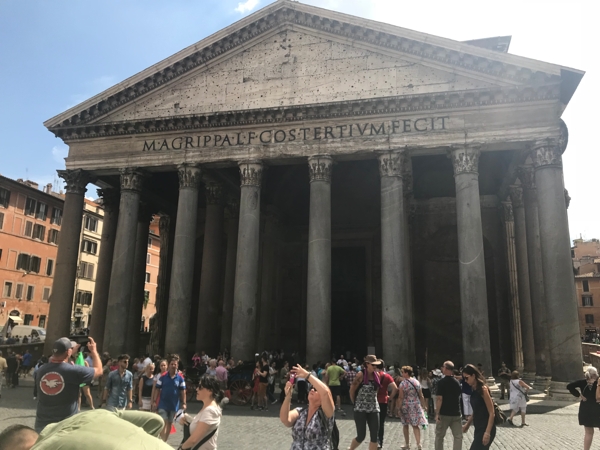
People, if I had to pick only one thing to see in Rome, it would be the Pantheon.
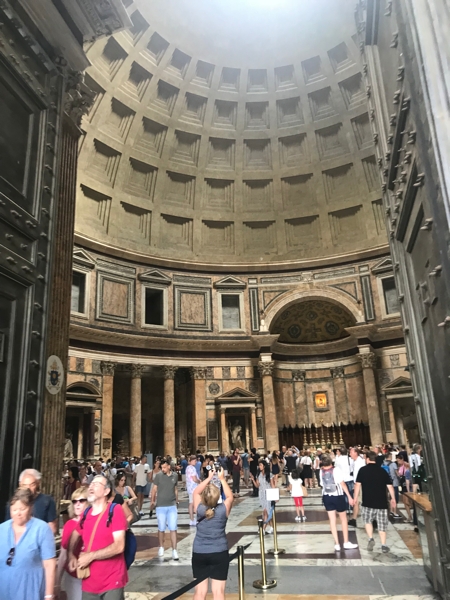
It is so beautiful, so stunningly proportioned and so perfectly executed, that you will be overawed when you enter, if not brought to tears by its perfection. The dome is a perfect hemisphere; the base is a perfect cube which would hold the bottom of the sphere.
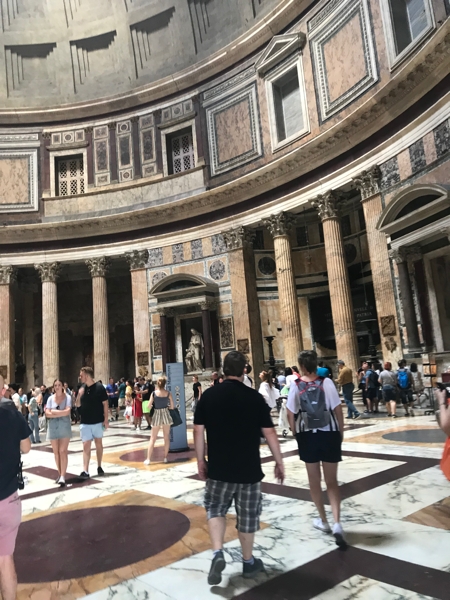
It was built by the Emperor Hadrian in 126 AD to house All The Gods. Whoever you worshiped, you were welcome to worship him/her/them/it at the Pantheon.
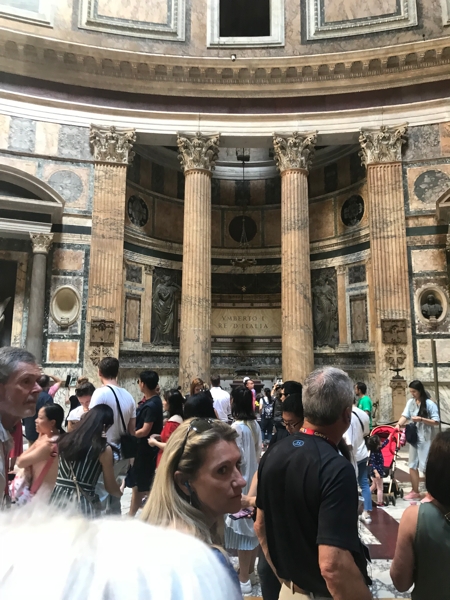
The Pantheon is the only fully extant Roman building, and for centuries it was the largest dome in the world. It’s still huge.
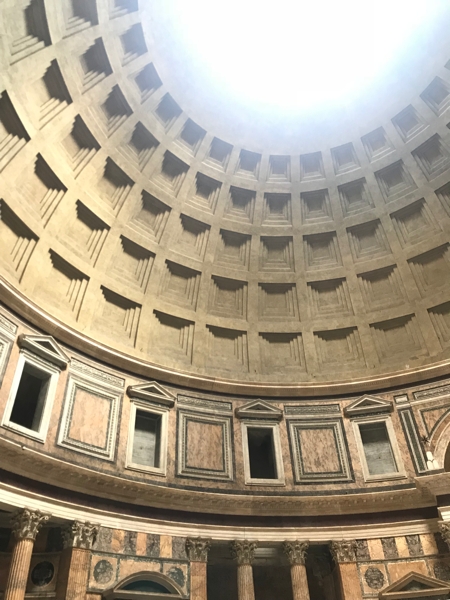
The coffers in the ceiling are structural, helping sustain the weight, and the oculus at the top is open to the sky and always has been. Usually rain is blown back out of the oculus by air currents, but if it does make it to the floor, it is quickly drained away to the sewers:
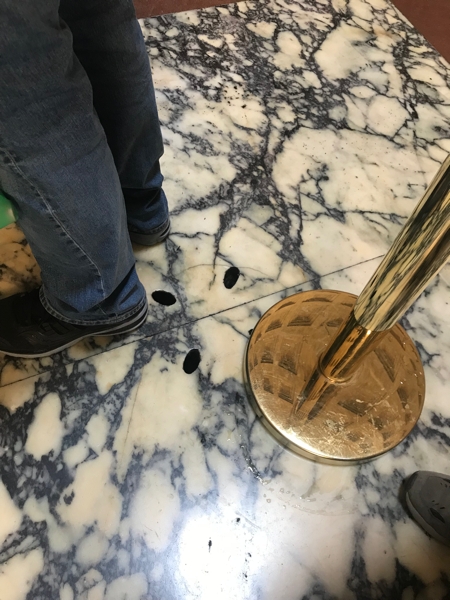
The oculus has another secret: the sun at noon traverses the architrave throughout the year, and originally the architrave held the signs of the zodiac, signaling the turning of the seasons and times of the major festivals. (The Christians removed all the pagan symbology, and the Pantheon itself was saved from destruction only because Pope Boniface IV proclaimed it a church; there is an altar now across from the front door. Otherwise, it is as Hadrian built it.)
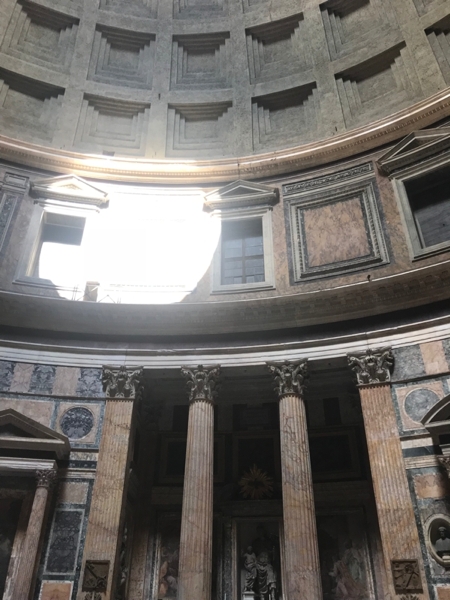
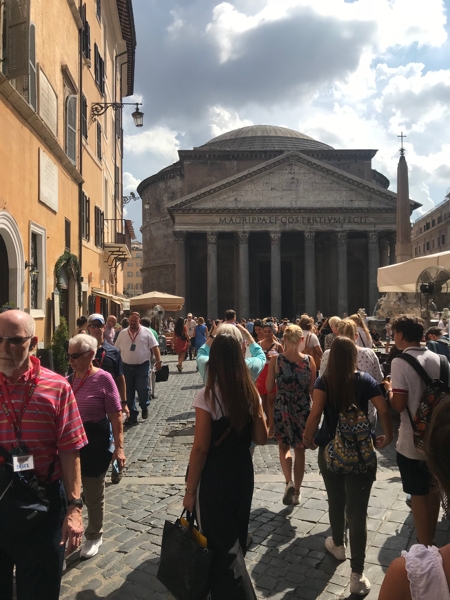
Speaking of Hadrian, here’s Hadrian’s Temple, built in honor of his mother Domitia Paulina, who was apparently a kick-ass politician and wise, supportive woman.
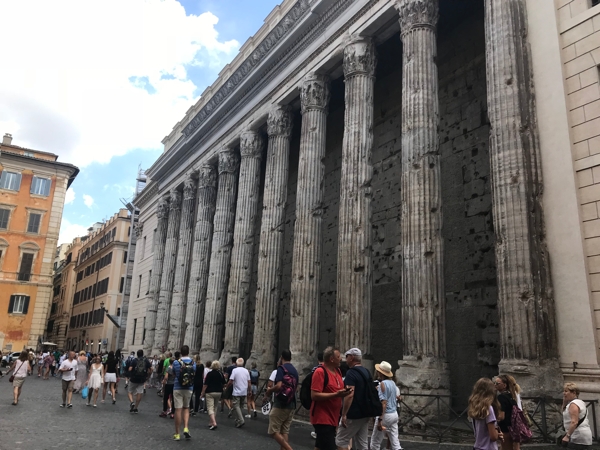
It now is the front of the Chamber of Commerce. Across the plaza was a bar which was touted on the intertubes as being “one of the best bars in the world,” but we never made it back to double-check that claim.
No visit to Rome would be complete without a visit to the Trevi Fountain, I suppose.
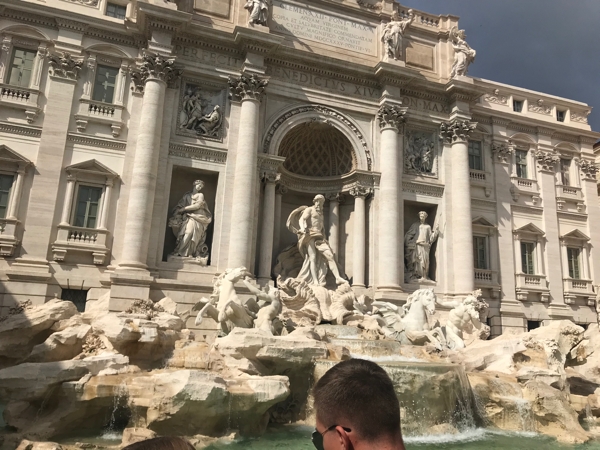
We made wishes: 1 coin for true love or an impossible wish; 2 coins for marriage; and 3 coins for an immediate divorce, such things being difficult in Roman Catholic Italy. I would have thought that qualified as an impossible wish, myself. My wish? To become a best-selling author.[2]
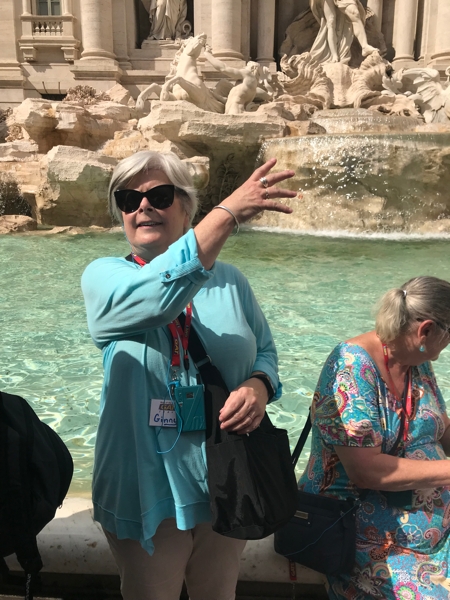
A hike to the Spanish Steps, then back to the hotel for a refreshing shower before heading back out. We roamed about a bit before snagging cocktails at a gin bar and supper at a cool little trattoria that apparently introduced the idea of dinner salads to the Eternal City.
SIDEBAR ABOUT THE BAR: It was called The Gin Corner, and it was listed as one of the top bars in Rome. We stumbled across it and dived inside to sample the wares. I tried to play the “Smoky Topaz” game with the owner/bartender, but either I didn’t make myself clear or he’s just obtuse; he just made the Smoky Topaz. Without measuring.
Back to the hotel and our view of St. Peter’s.
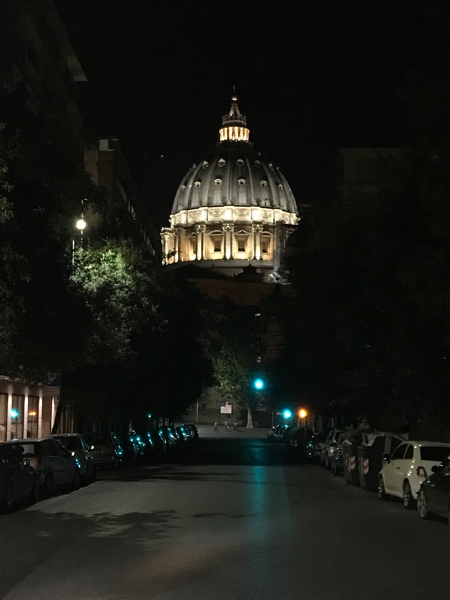
—————
[1] AND WHILE YOU’RE AT IT, TURN OFF THE SHUTTER CLICK NOISE, TOO.
[2] Buy my book.

